INSTITUTE
OF
CHANCE
International Institute of Social History,
Amsterdam, 2004
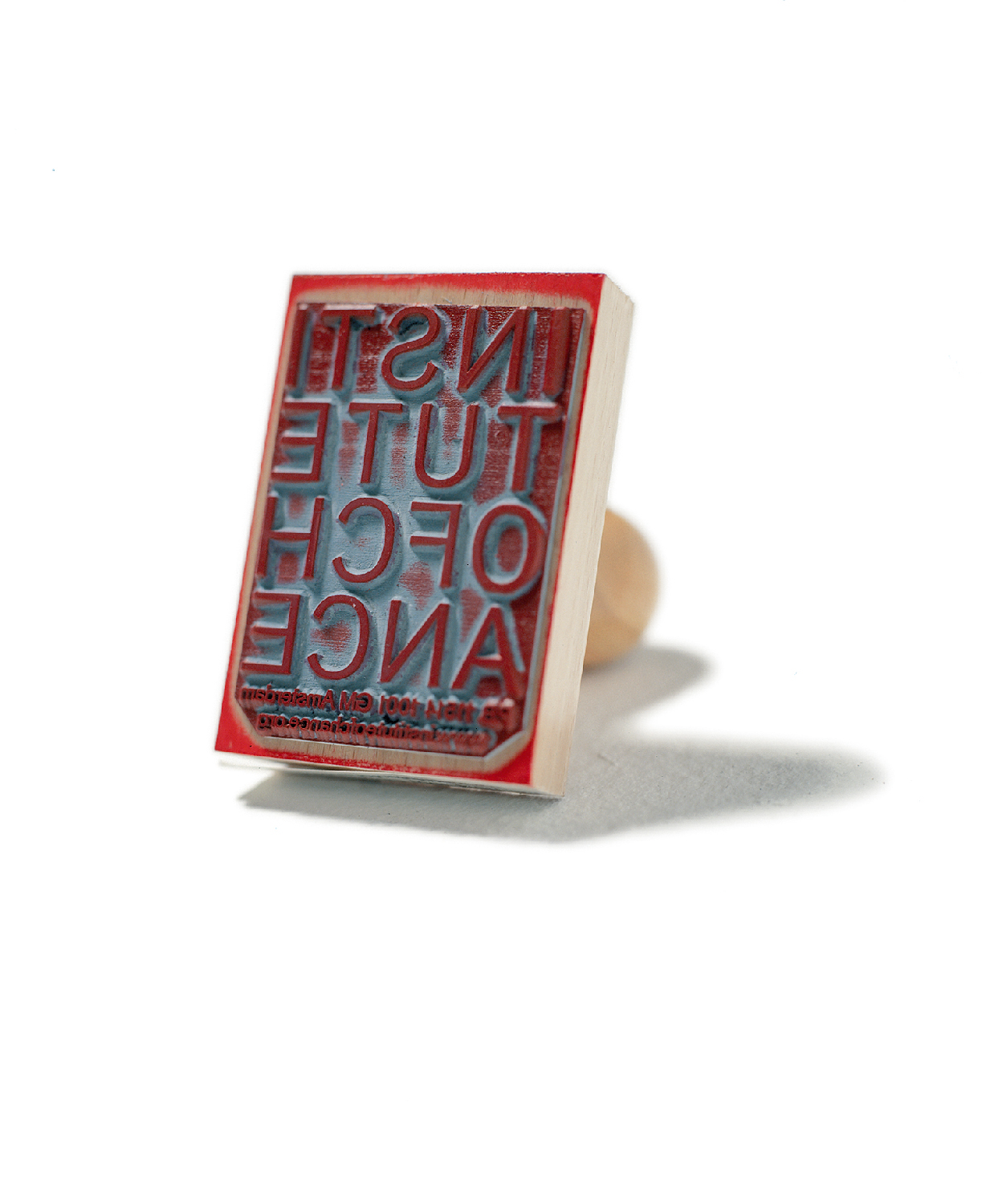
Rubber stamp
The Institute of Chance aims to work within other institutions to find spaces governed by chance. Spaces that gather marginal, ephemeral, useless or unidentified material, countering the encyclopedic ambition to classify everything. By focusing on what seems unimportant or out of place, these spaces are never complete. They can be considered as leftovers of our classifications systems. The Institute of Chance is interested in spaces that are open to interpretation, fictional spaces.
The International Institute of Social History is a documentation center of different social movements throughout history. Among their collections, they have the largest collection of anarchistic documents in the world. The Institute of Chance is working with a series of unidentified photographs from it, a section of the archive that escaped any possible classification.
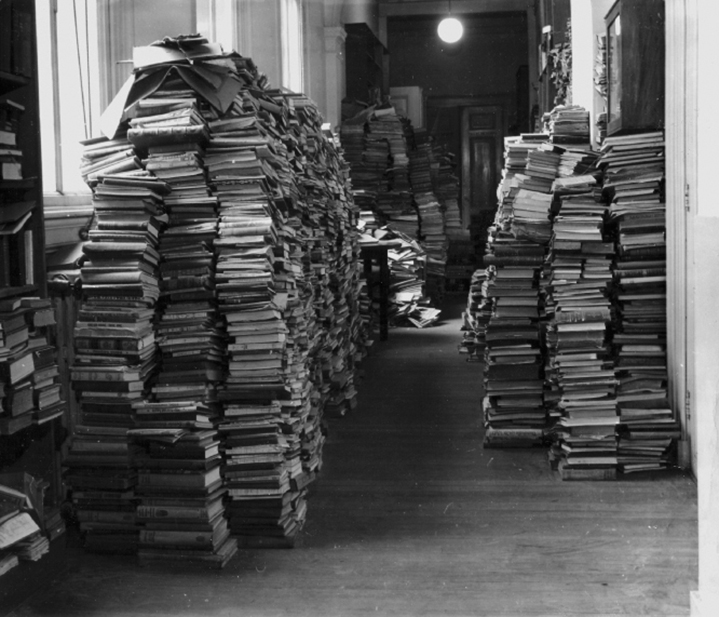
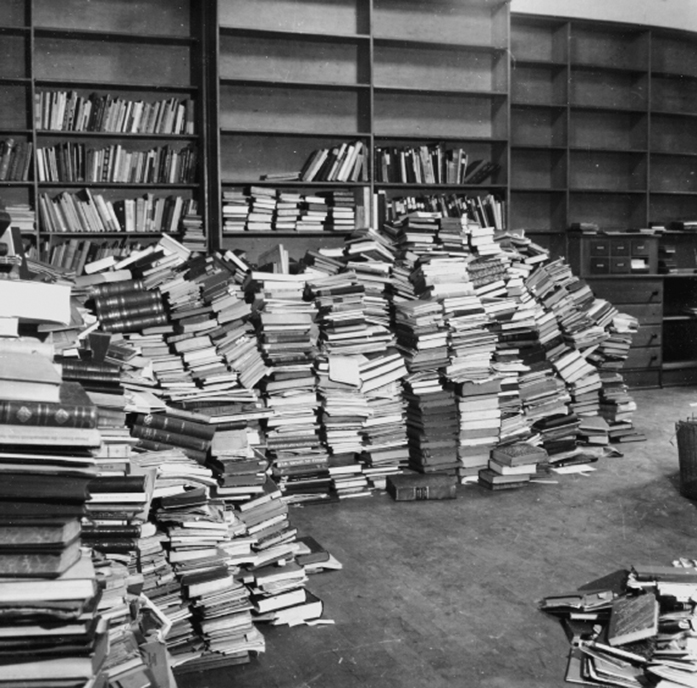
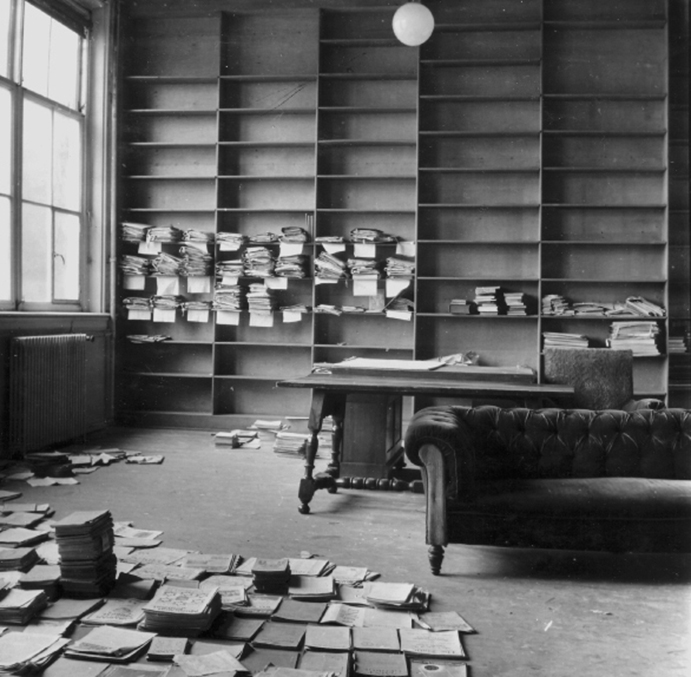
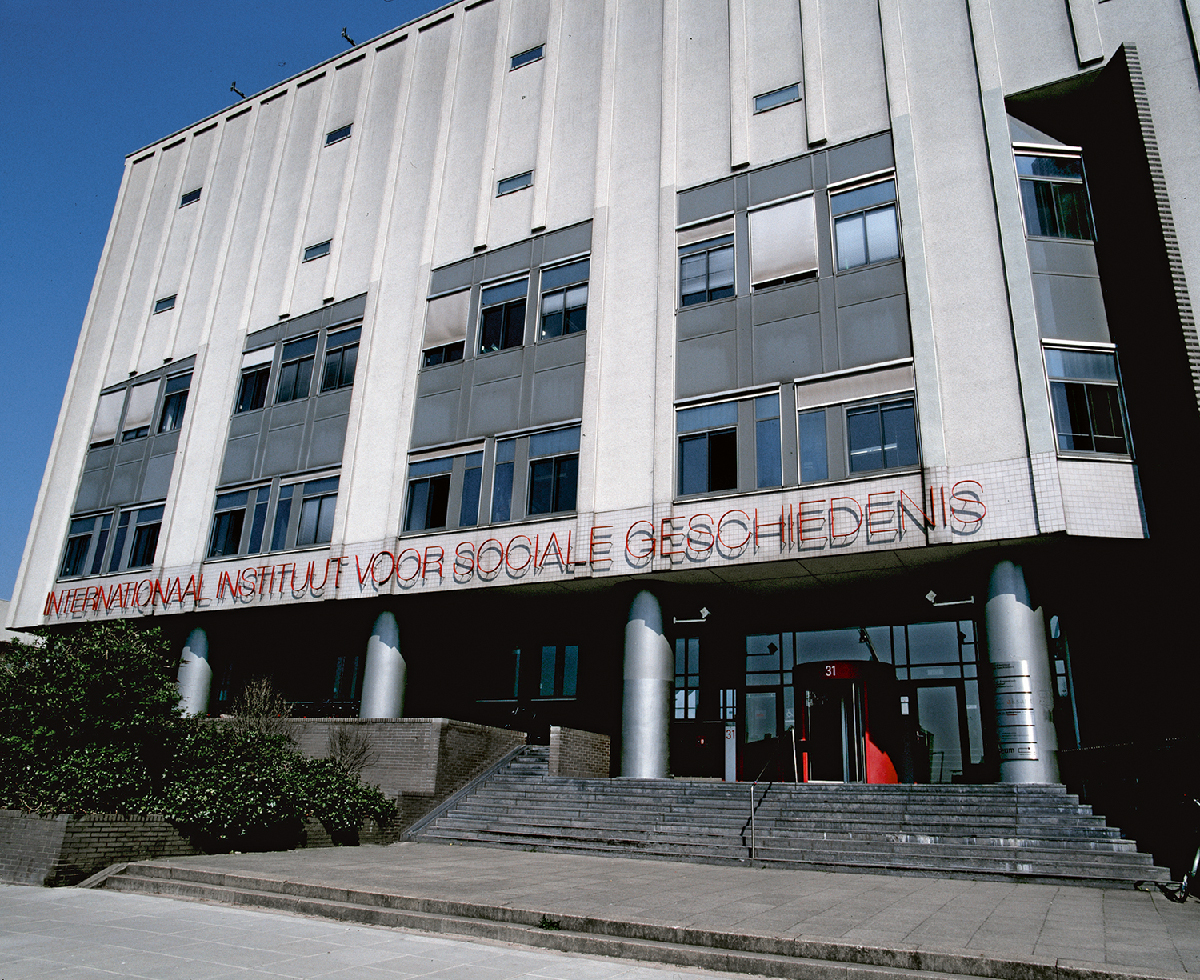
International Institute of Social History, Amsterdam
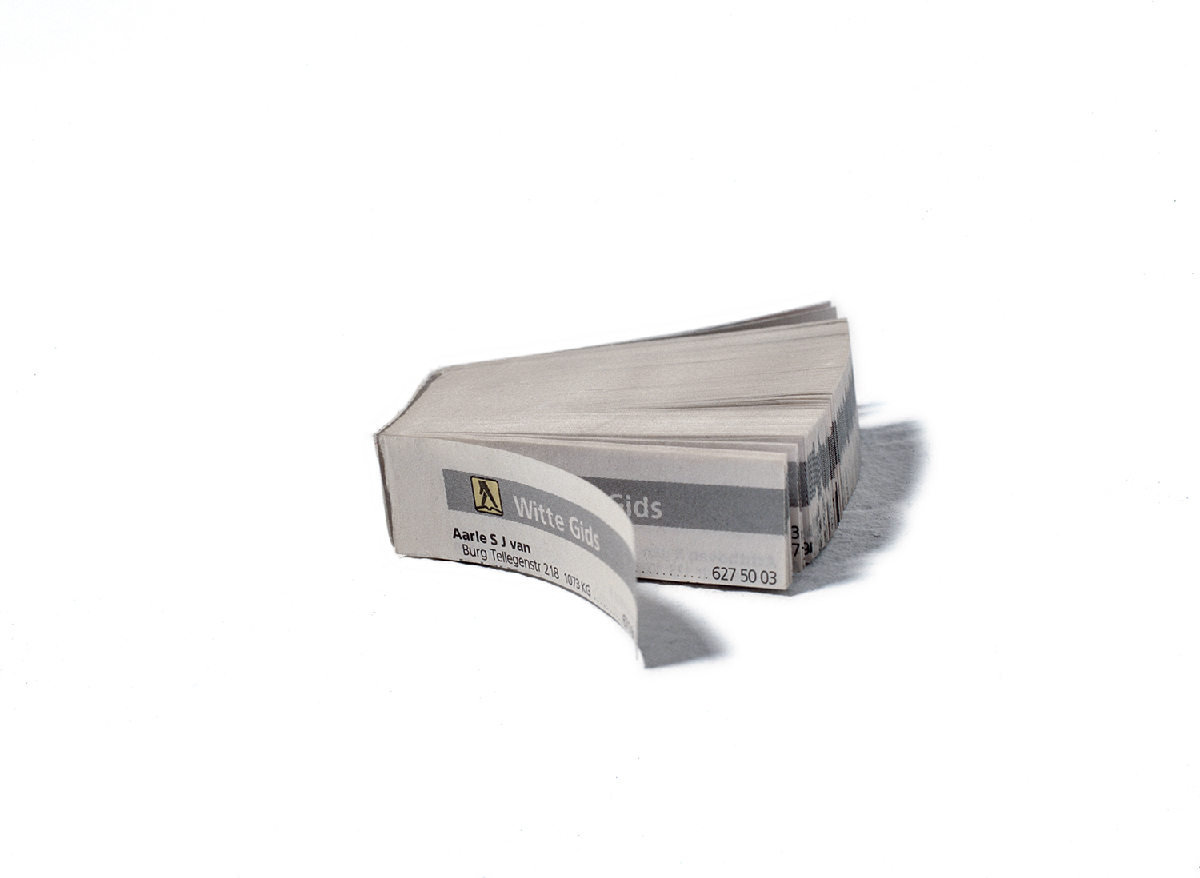
Section of telephone book, top left corner
approx. 2 x 5 x 3 cm
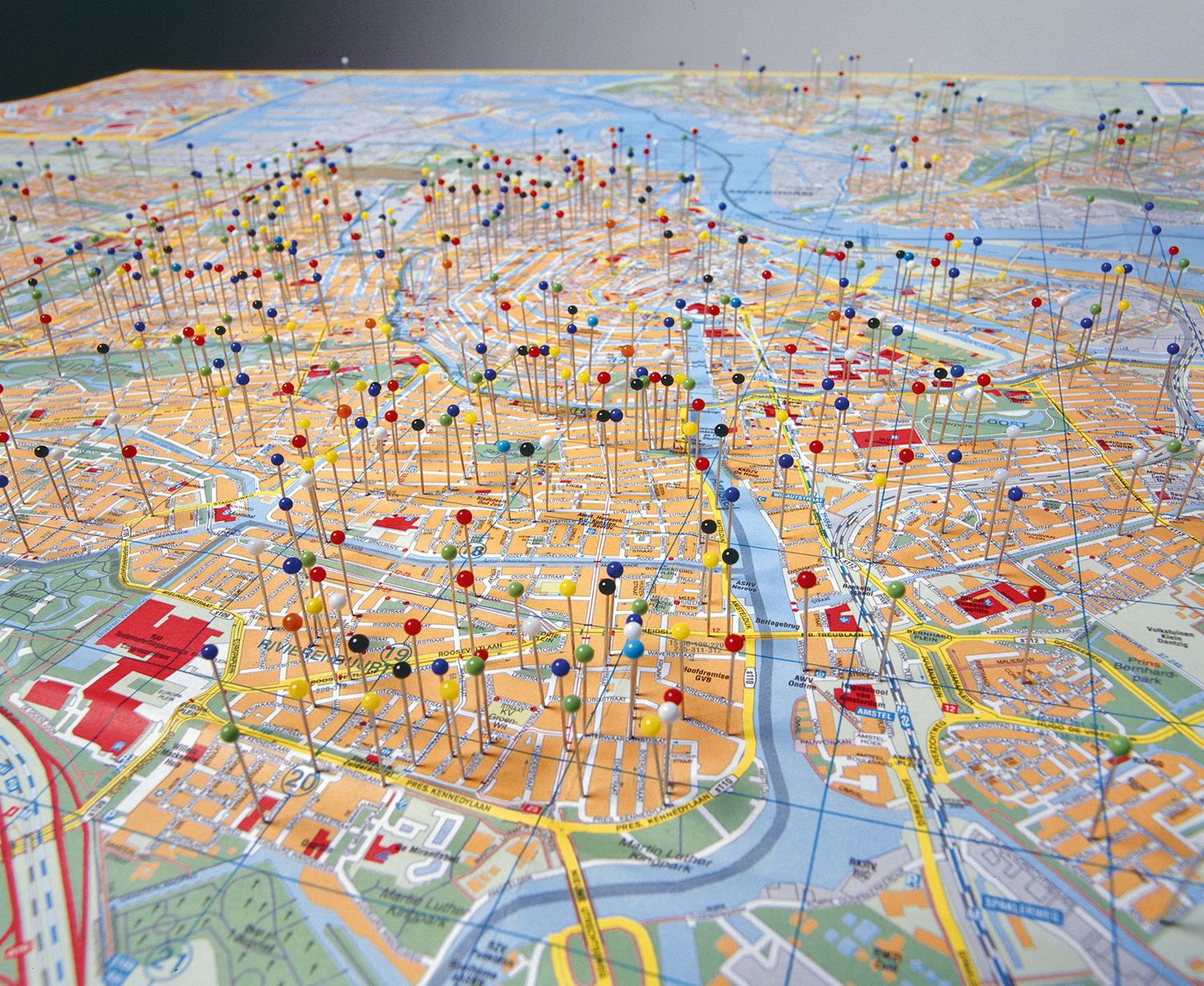
Map of Amsterdam with fixing pins
approx. 100 x 100cm
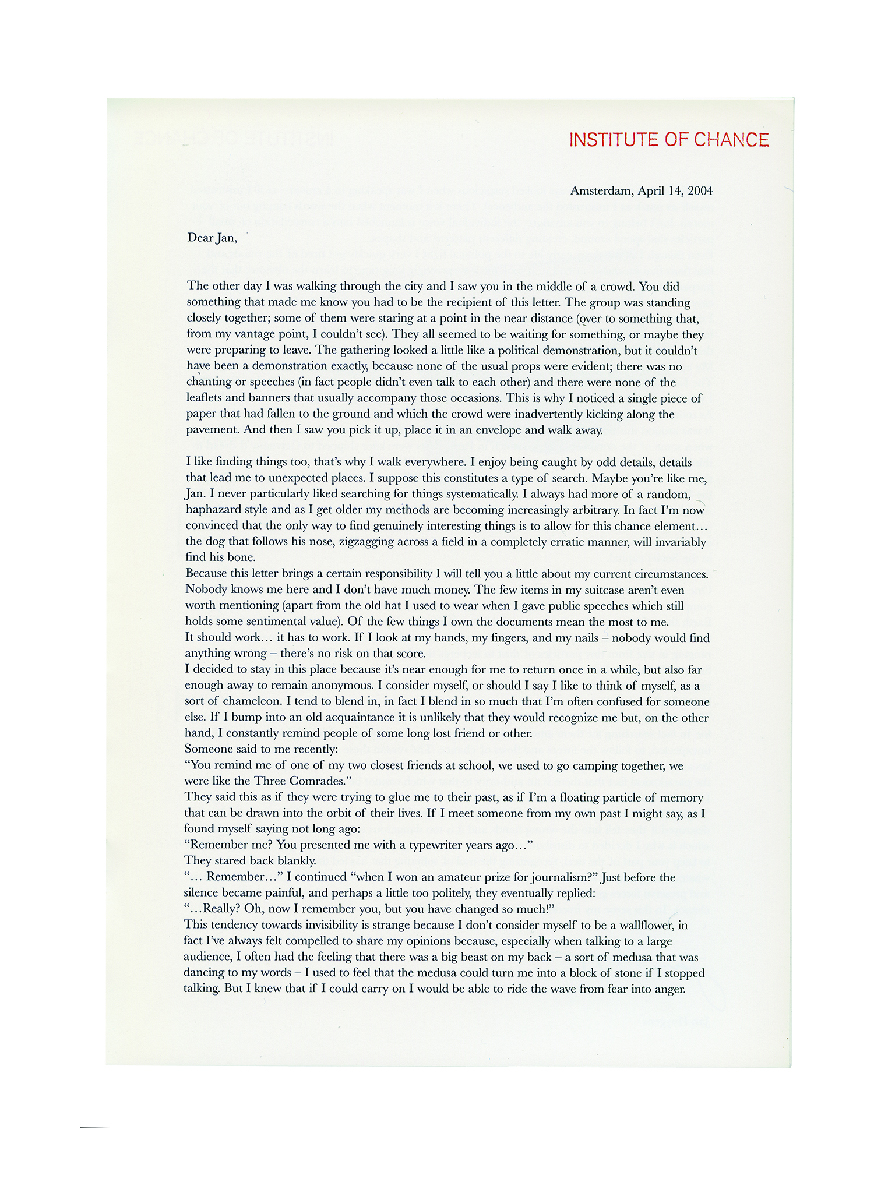
Institute of chance, Prix de Rome 2004, Uitgeverij 010 Publishers, Rotterdam, 2004
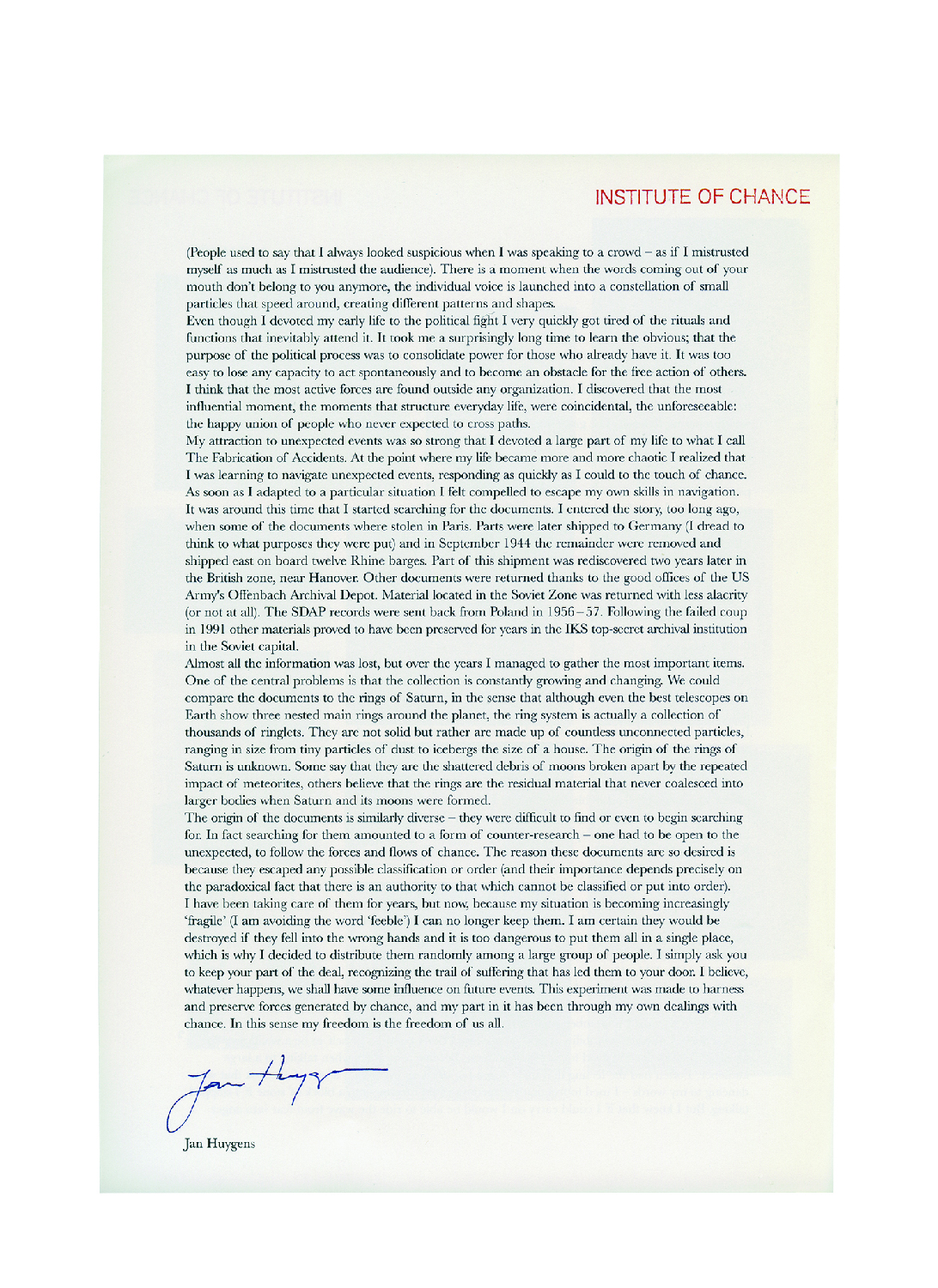
Institute of chance, Prix de Rome 2004, Uitgeverij 010 Publishers, Rotterdam, 2004
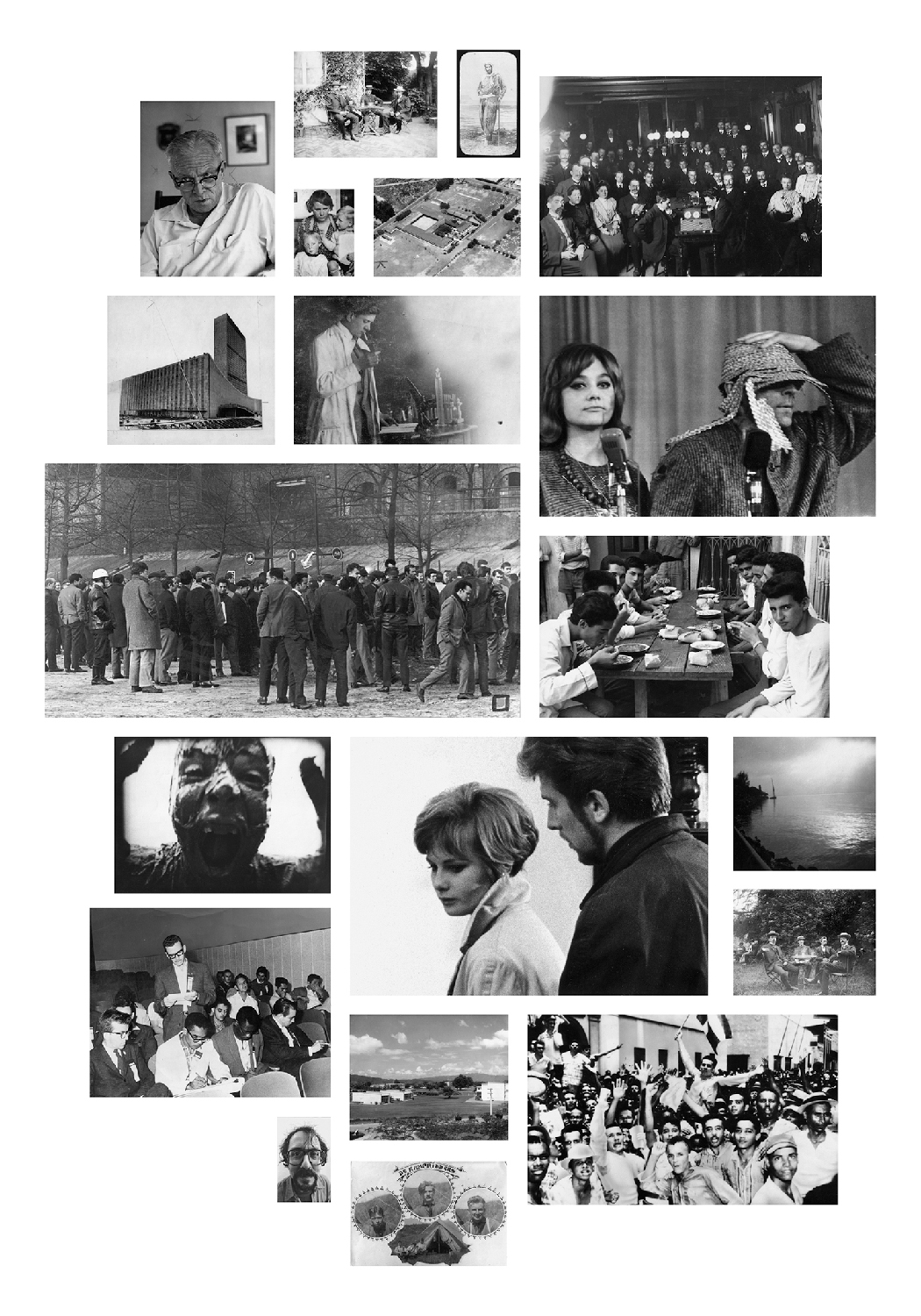
Silkscreen of unidentified photographs found at the International Institute of Social History.
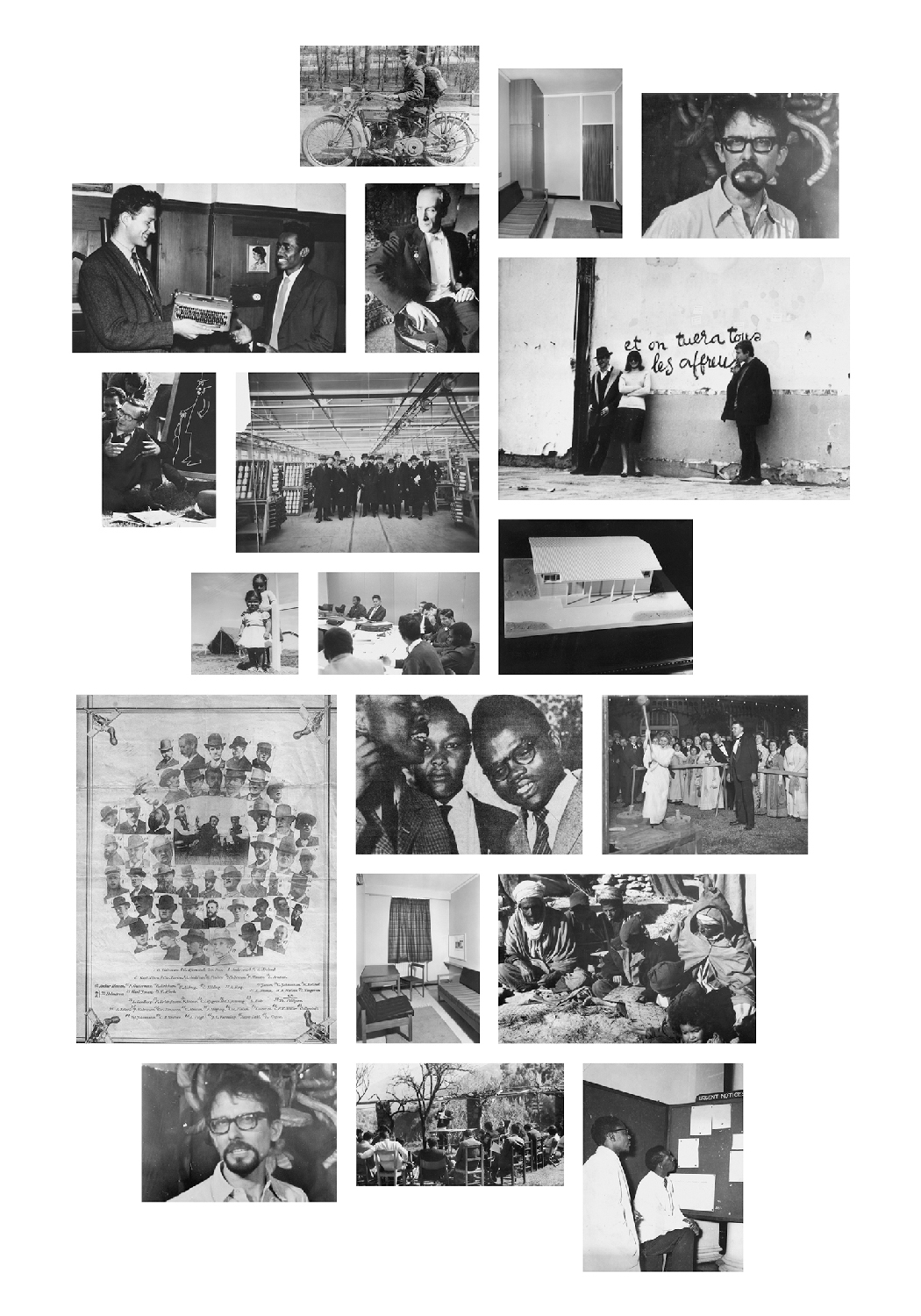
Silkscreen of unidentified photographs found at the International Institute of Social History.
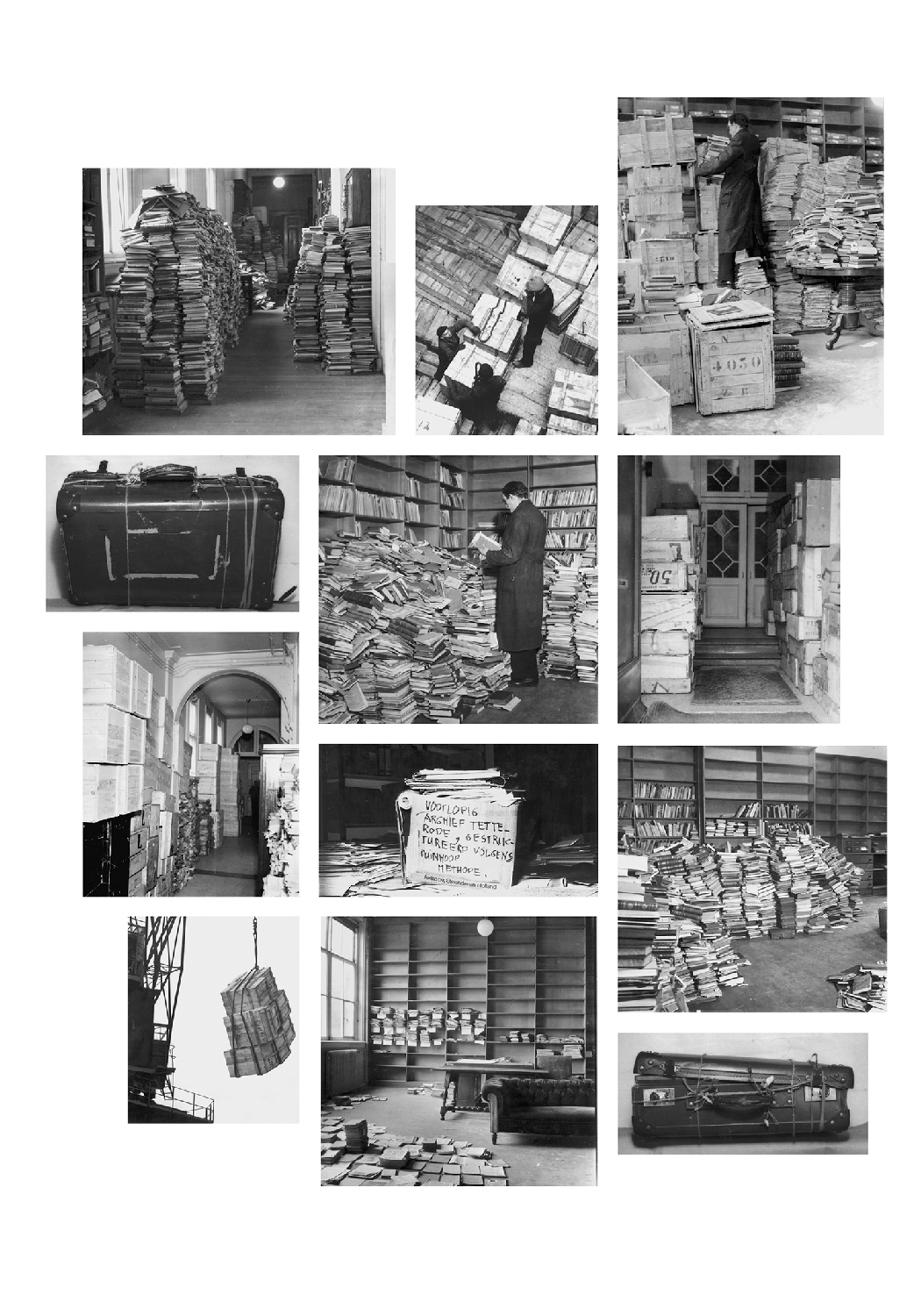
Silkscreen of unidentified photographs found at the International Institute of Social History.
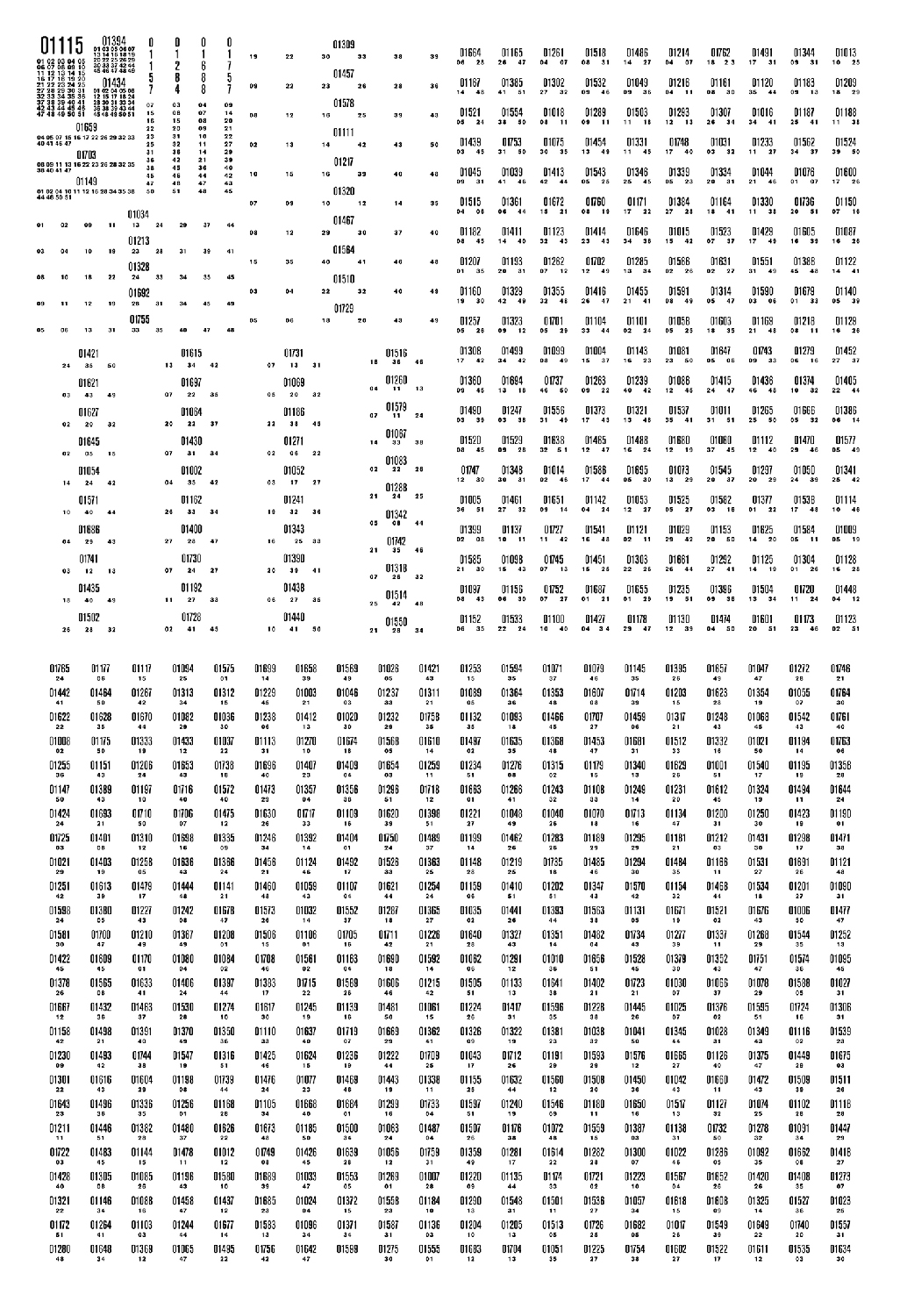
Chance Model, Siebdruck
70 x 120cm

Institute of Chance lottery tickets
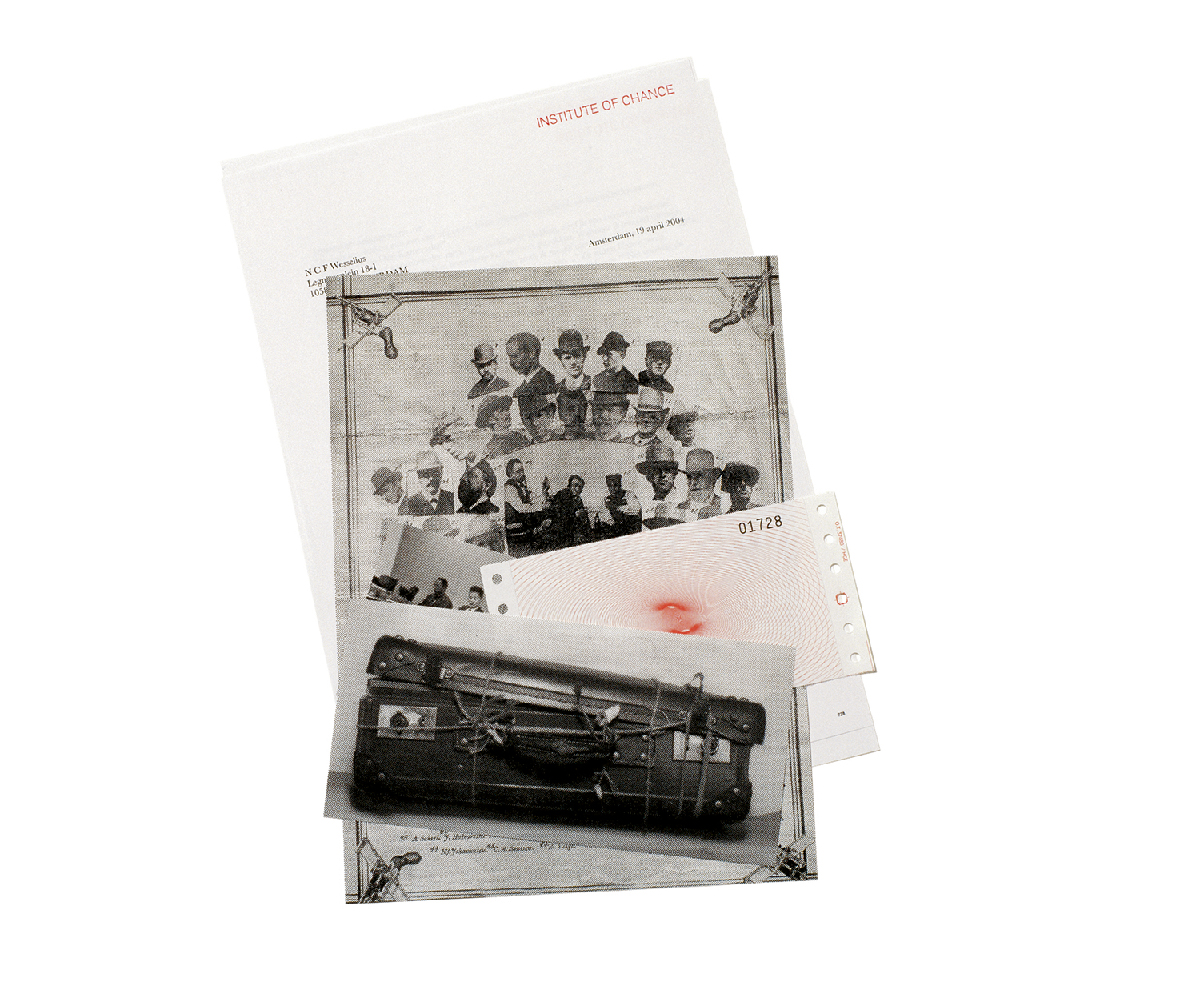
Sample letter
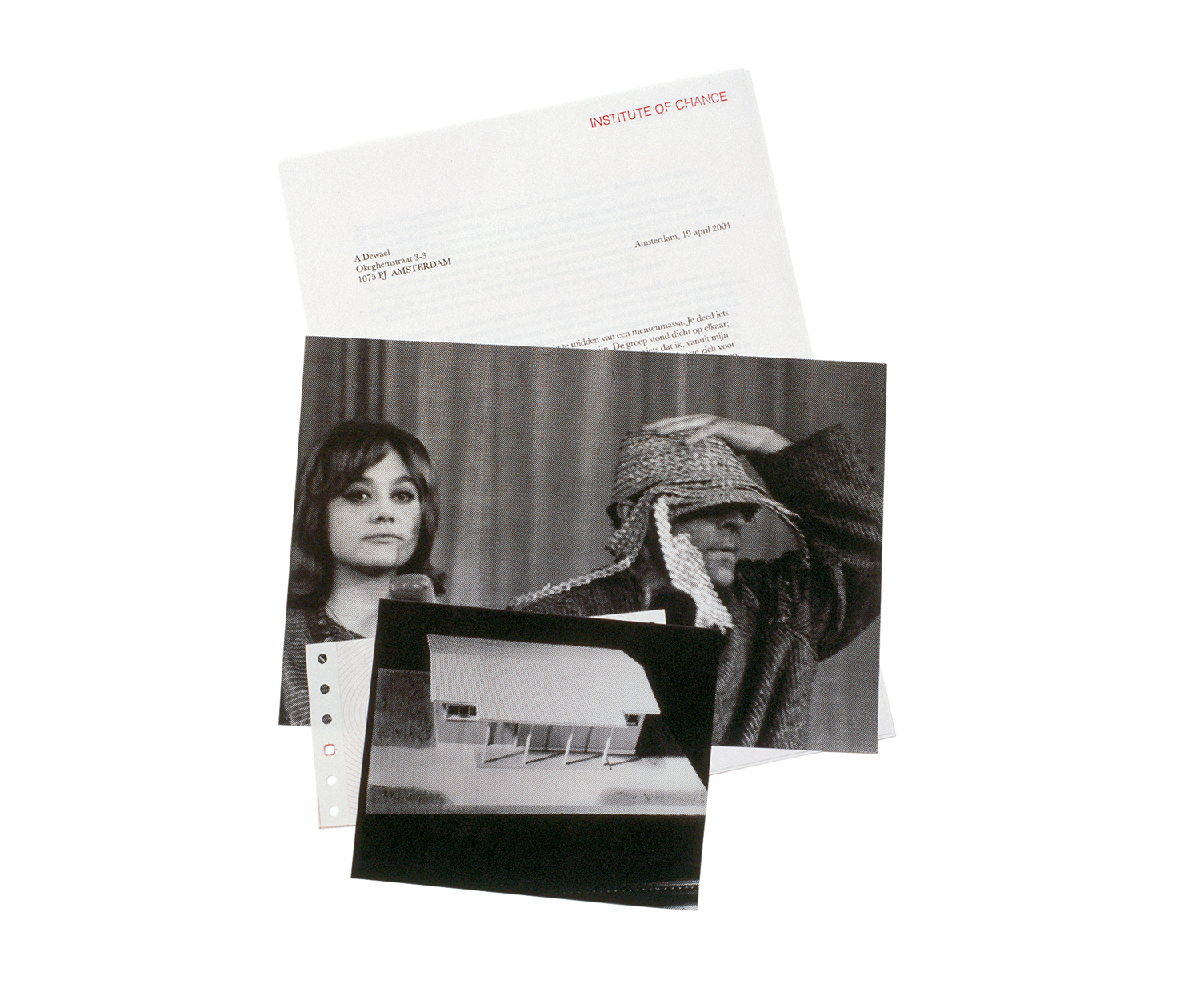
Sample letter
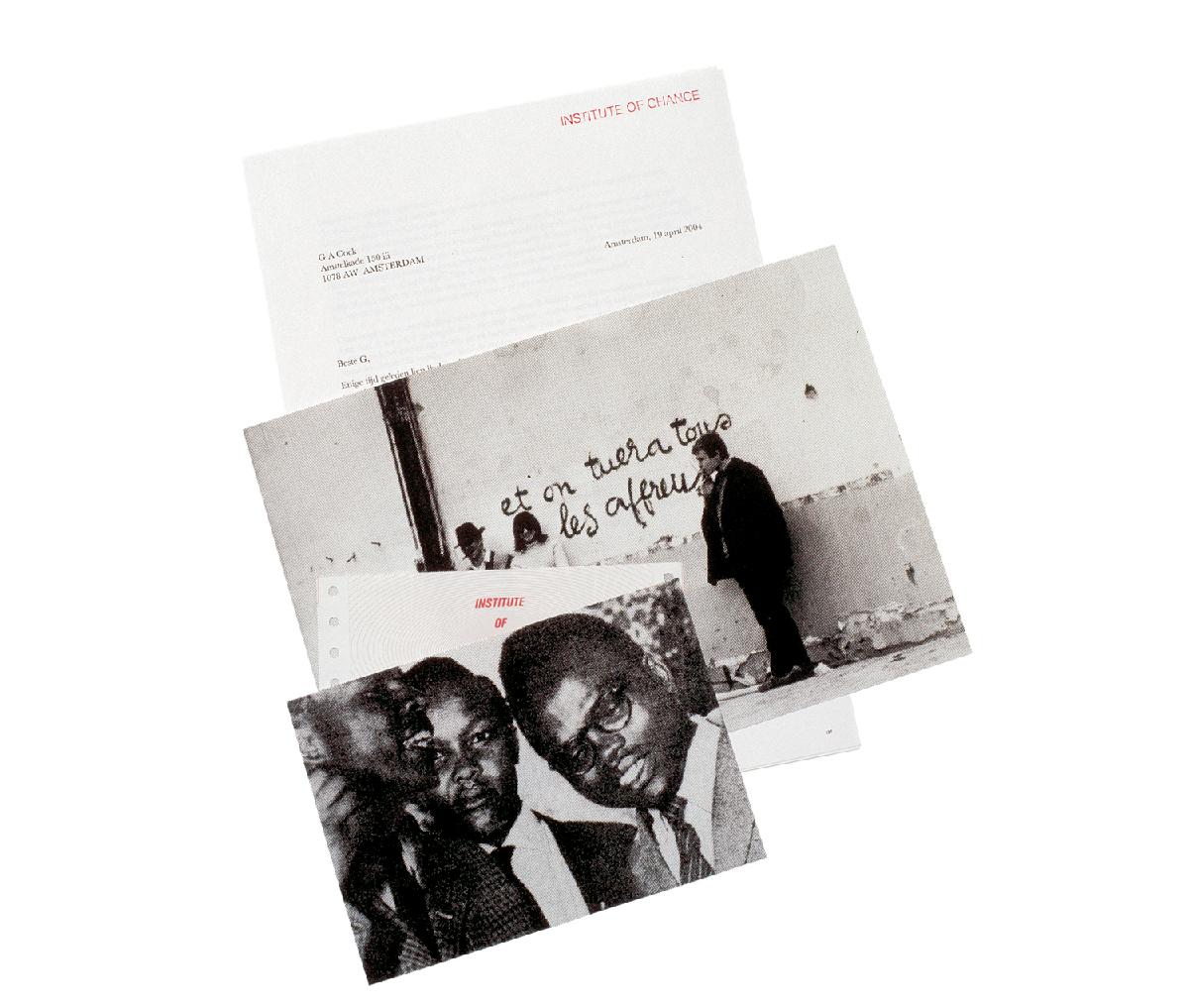
Sample letter
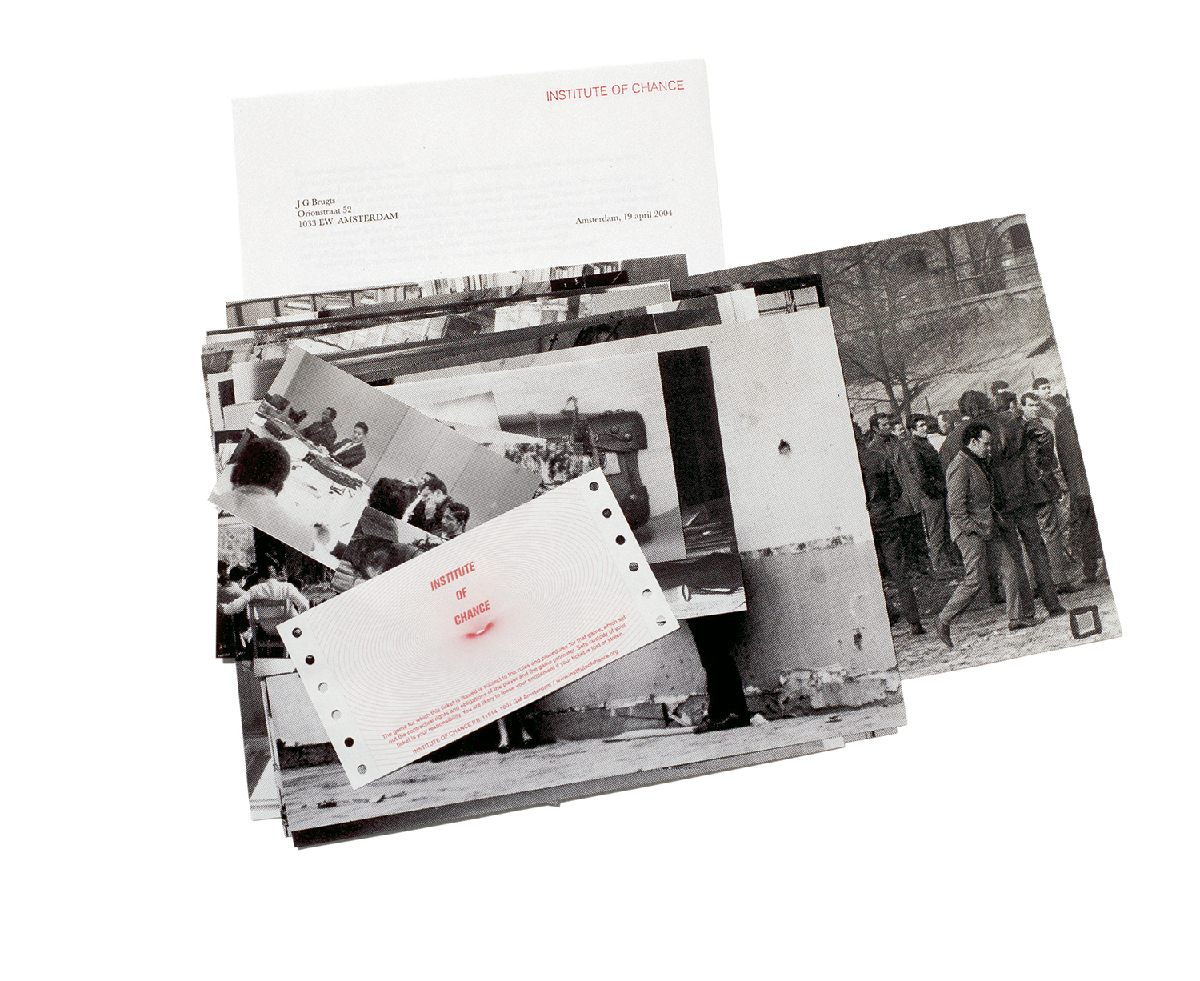
Sample letter
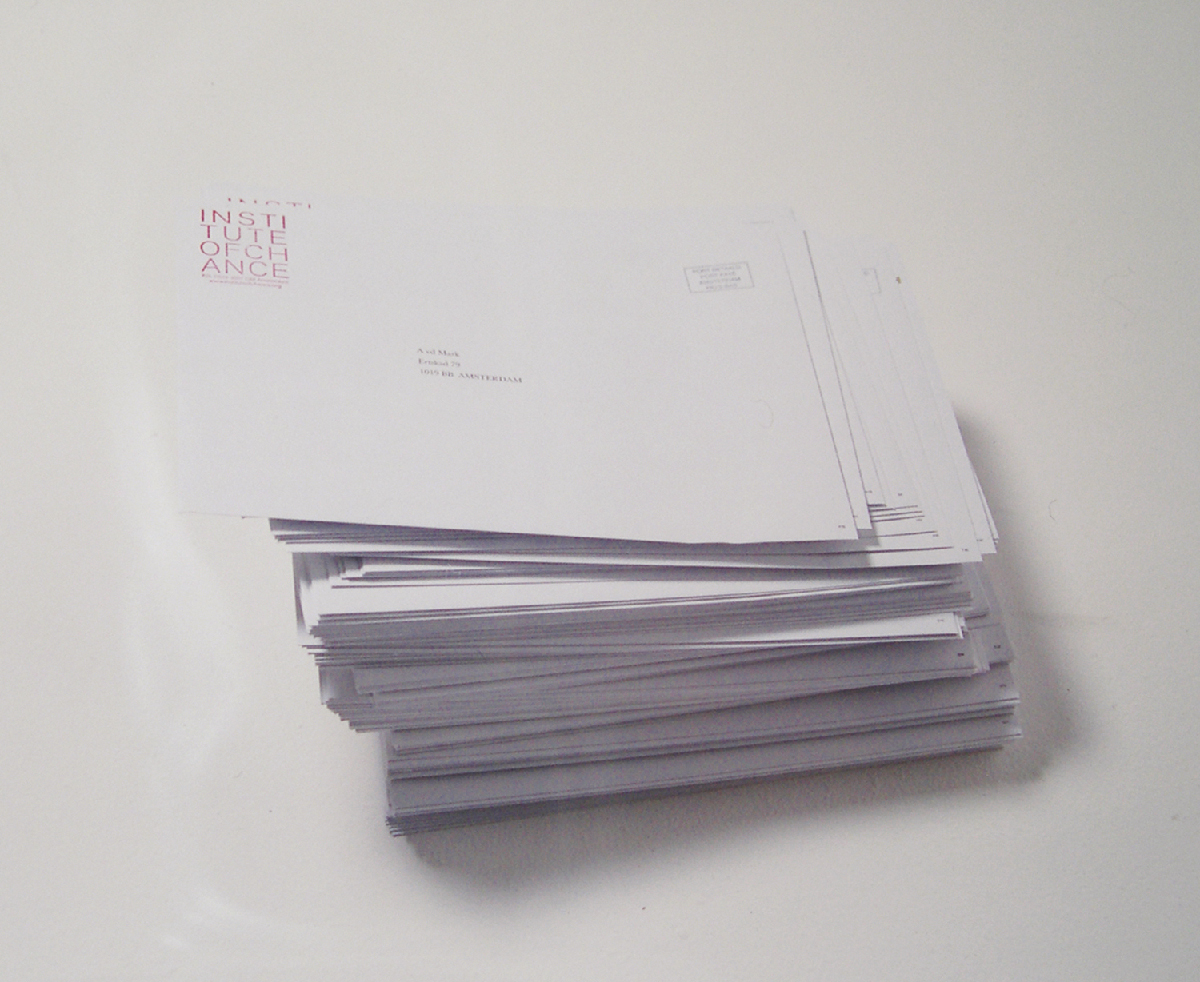
Institute of Chance letters

Interventions at Staatsbibliothek, Berlin
National library, Paris
Public library, New York, 2005
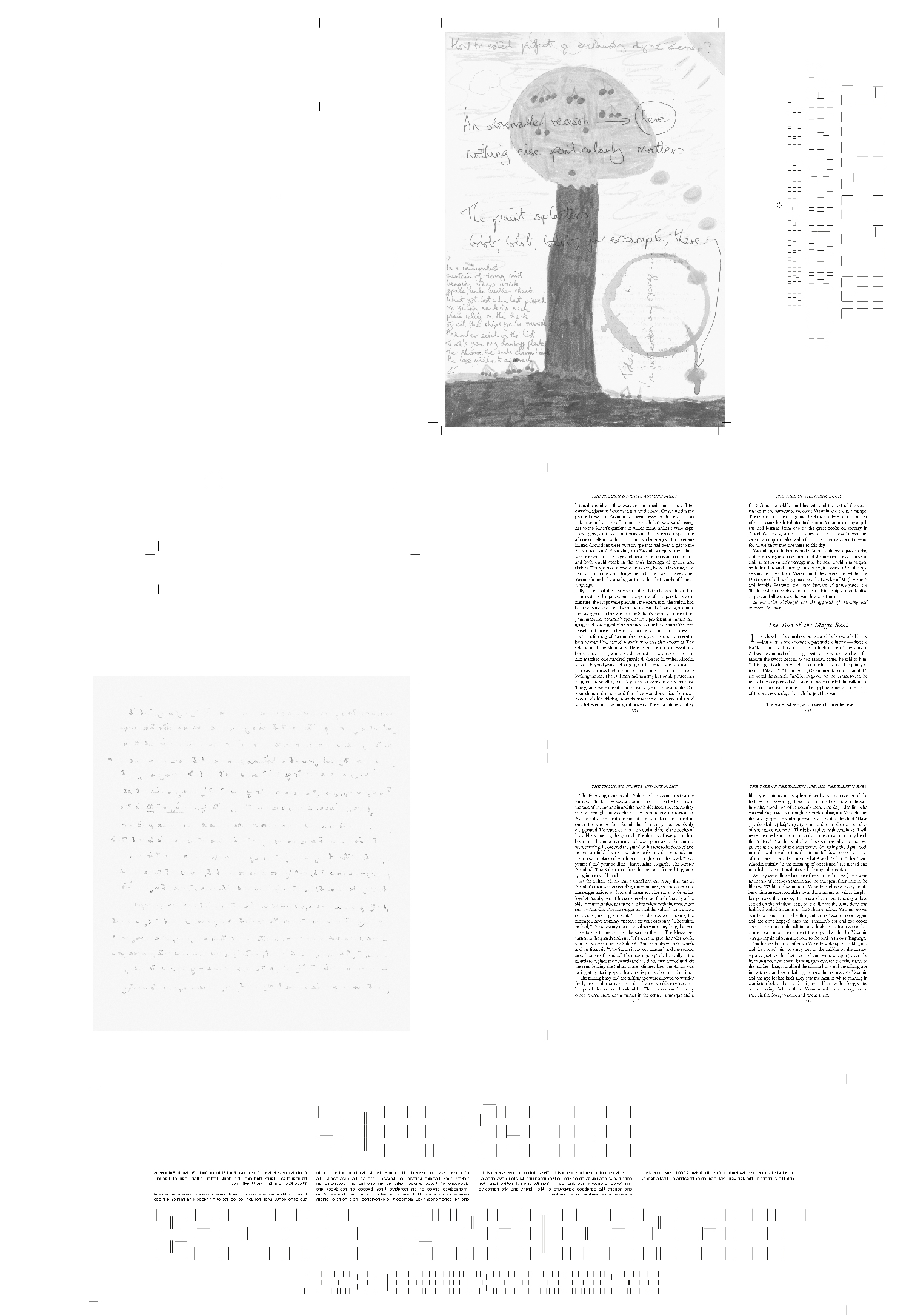
Fascinated by the ways in which information is ordered and classified, Mariana Castillo Deball investigated how libraries function as public spaces. She asked artists, designers, writers and theoreticians to develop a piece. Each contributor is asked to produce a nomad text, a loose page to be inserted into the books of the libraries. Each contributor is also responsible of the strategy of distribution within the library: whether it is made for a particular section, a particular selection of books, a specific page, or if it is to be given it to all the readers during one day, etc. All the inserts were printed and distributed according to the contributor’s instructions in public libraries in Berlin, Paris and New York. There is no way of tracing the final outcome of the action, the inserts are planned to be
found by accident.
A poster was printed with the contributions, which were cut out and then distributed in the libraries. The book collects this entire ephemeral project back together, as the only existing documentation of it. The book follows the structure of a microfilm machine, indexing, zooming in an out, as a sort of journey through the different spaces.
The inserts are actually integrated into the publication, bound inside, interrupting the central narrative. The idea was to make the different levels in which the project is working, visible in the publication.
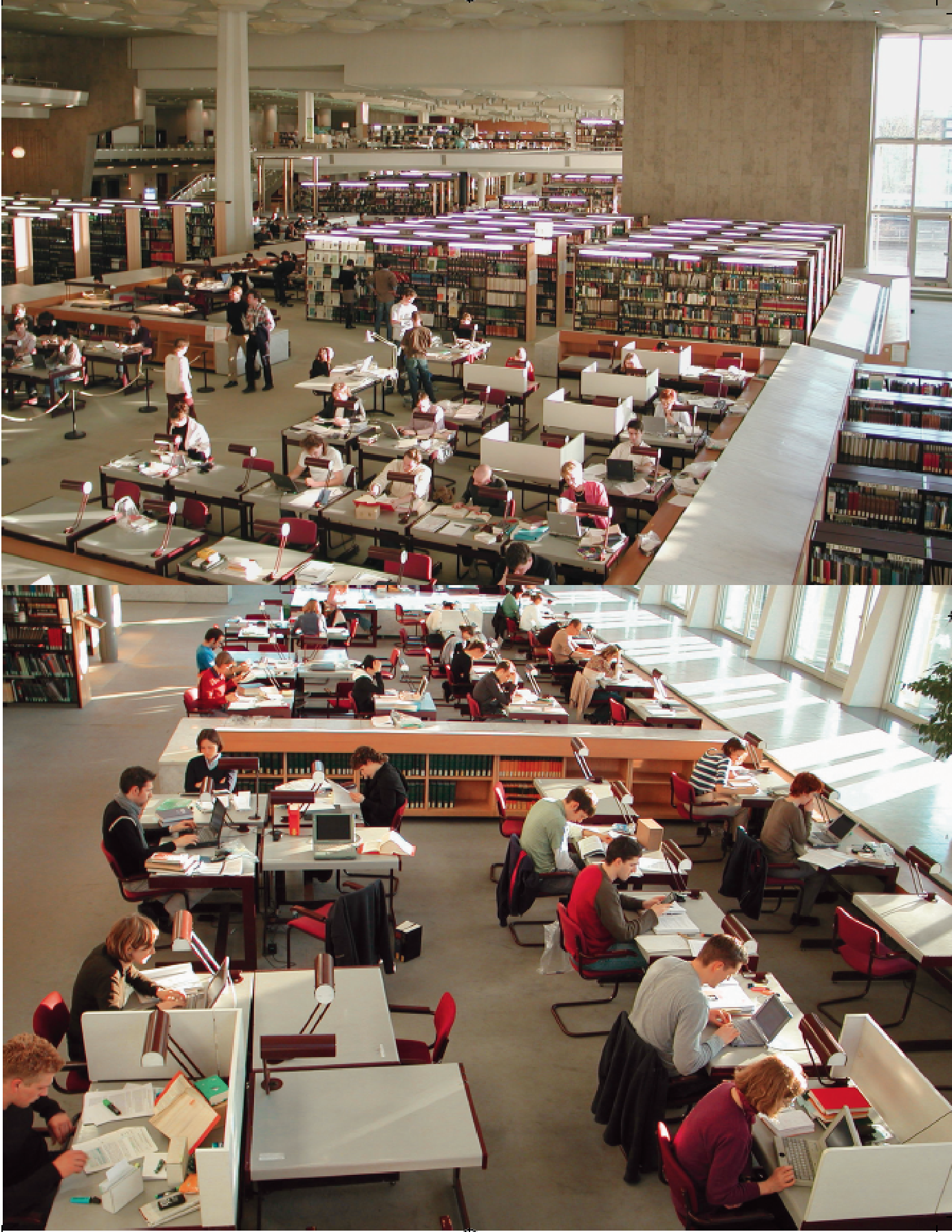
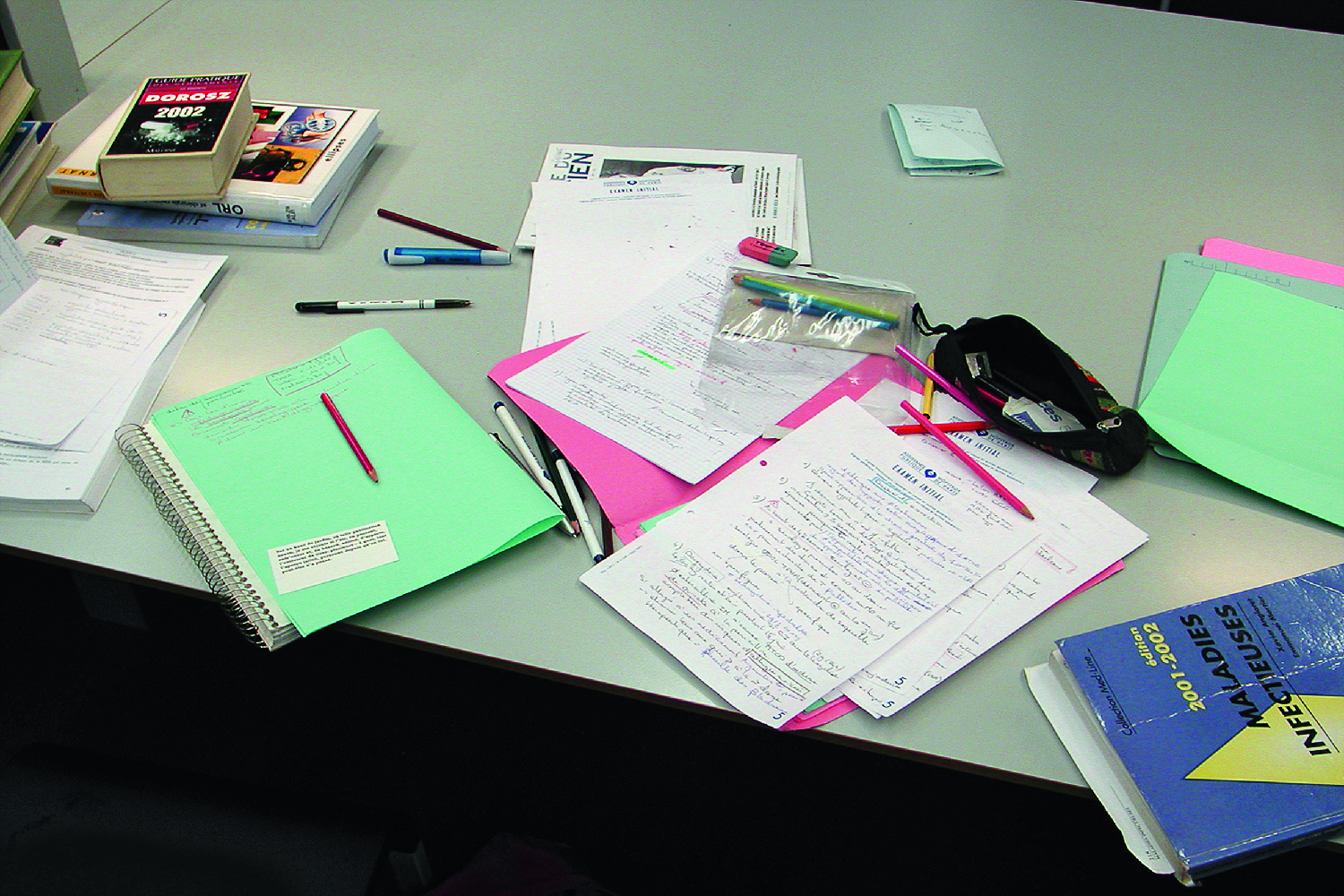
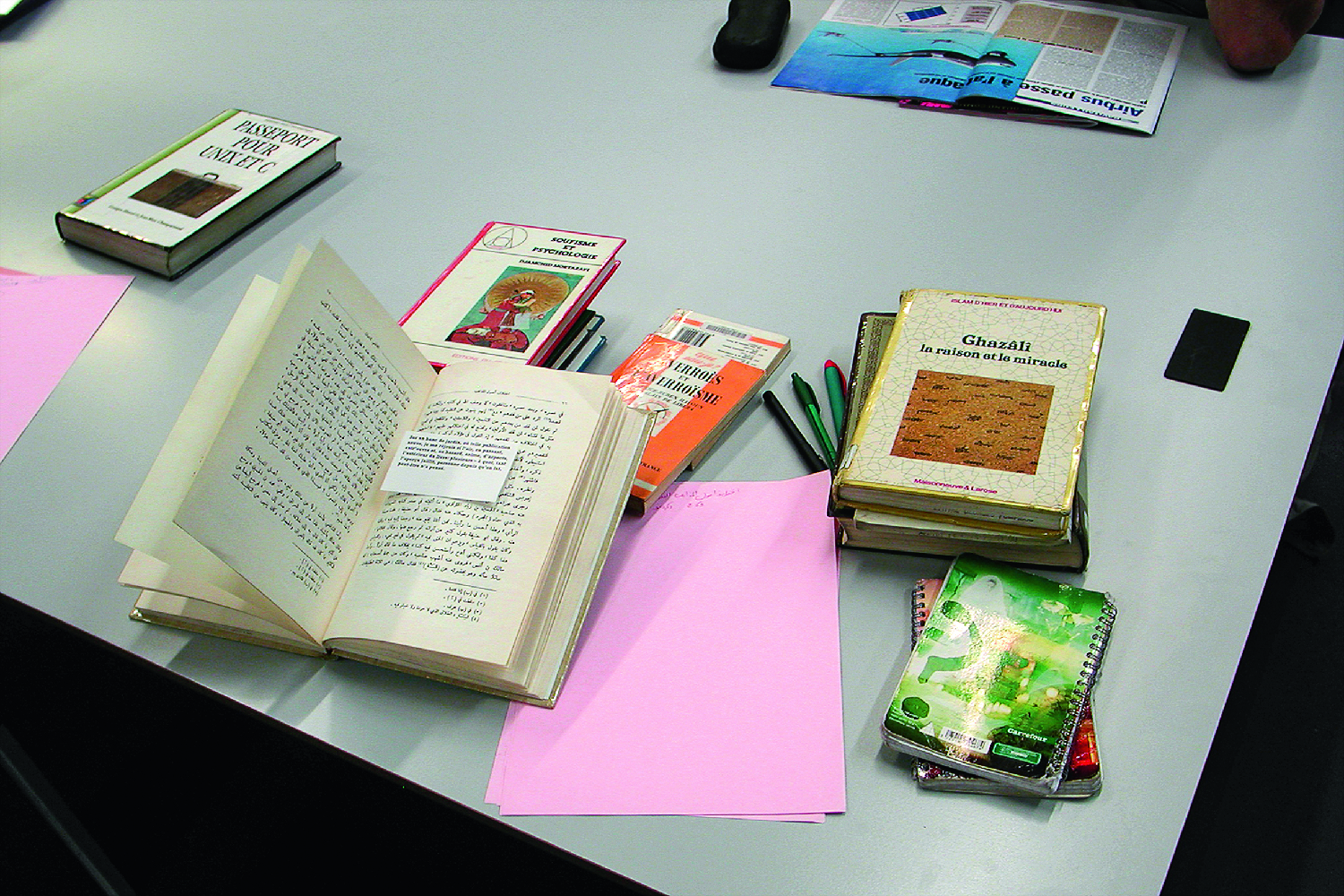
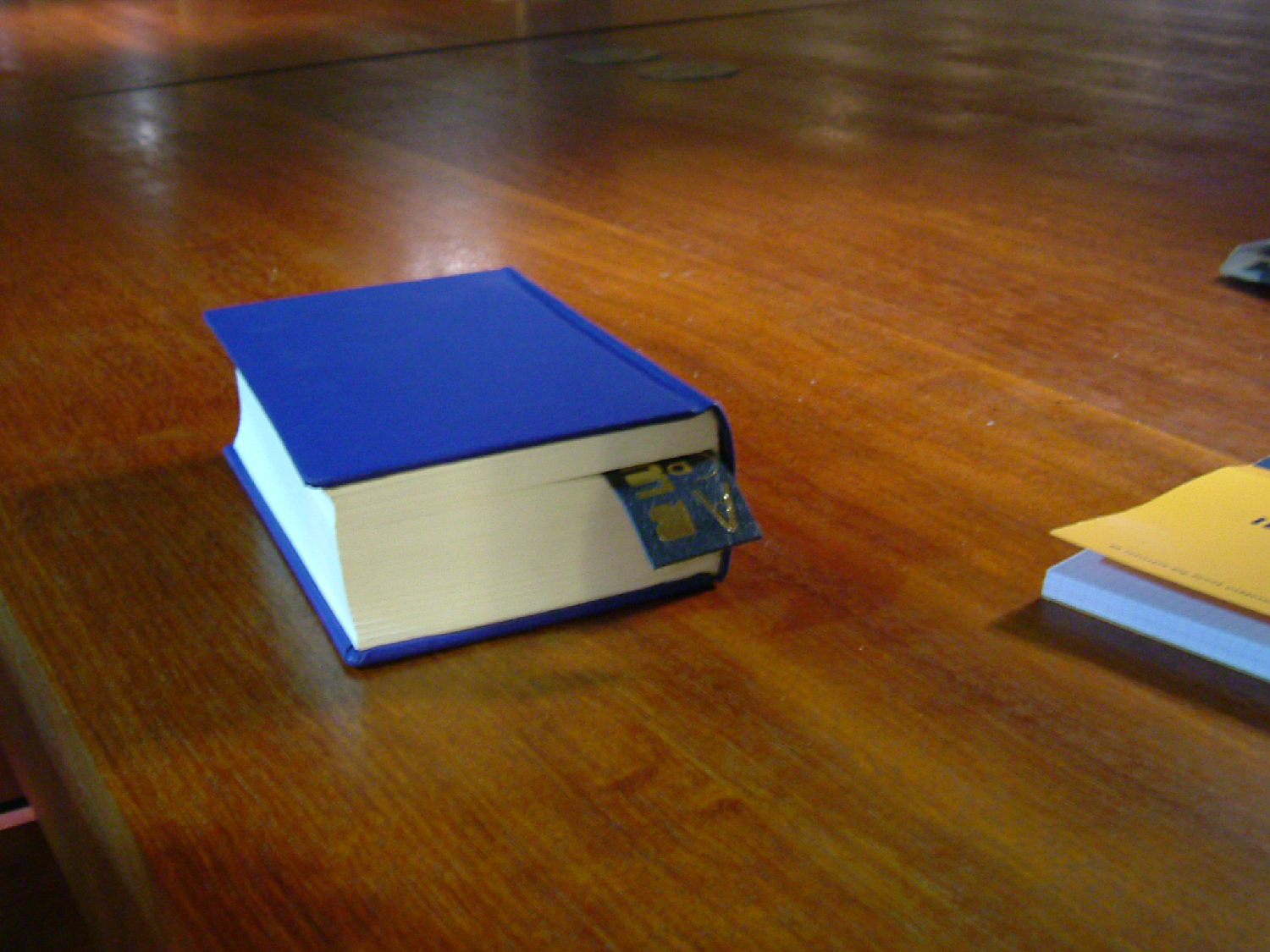
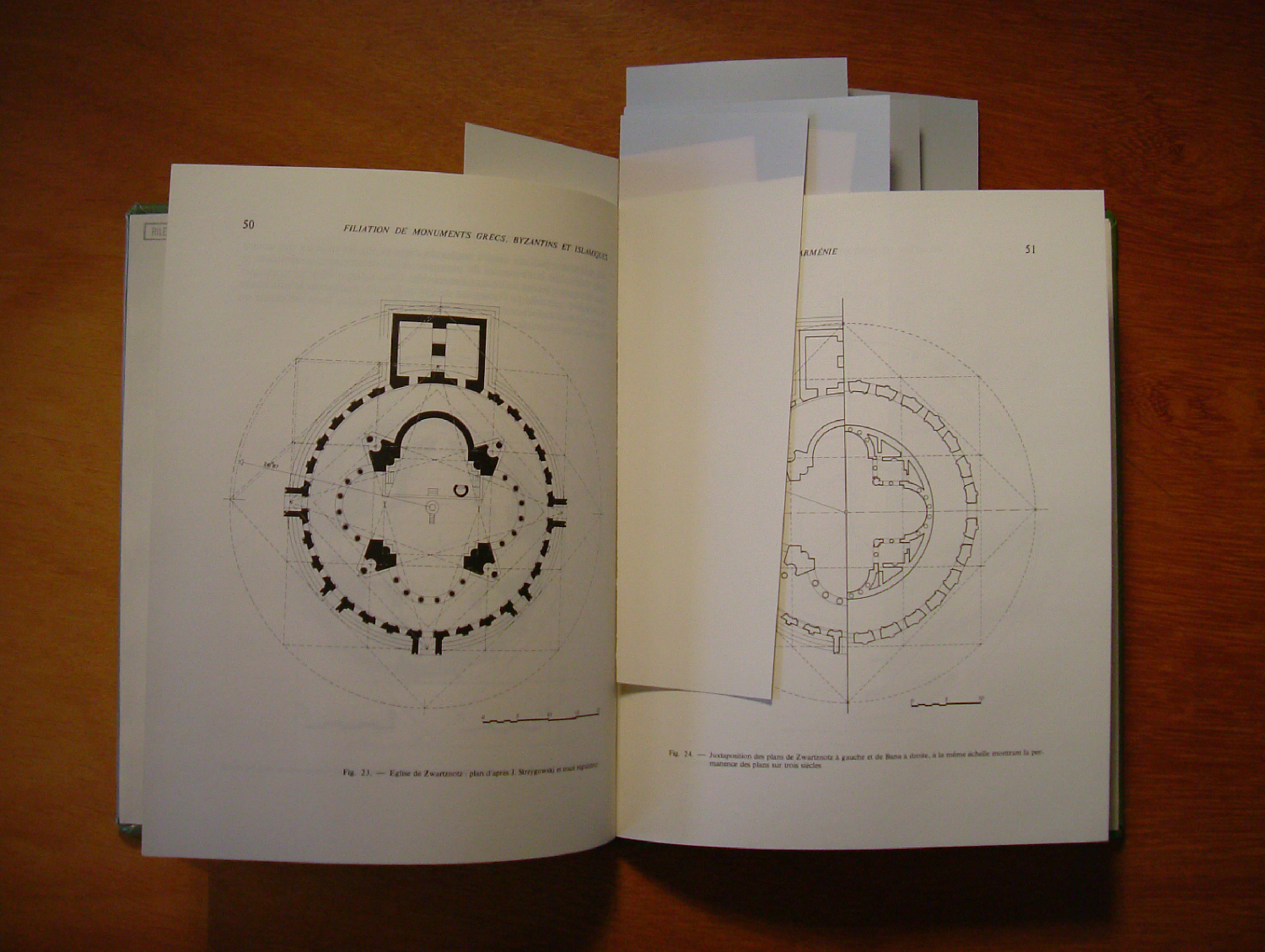
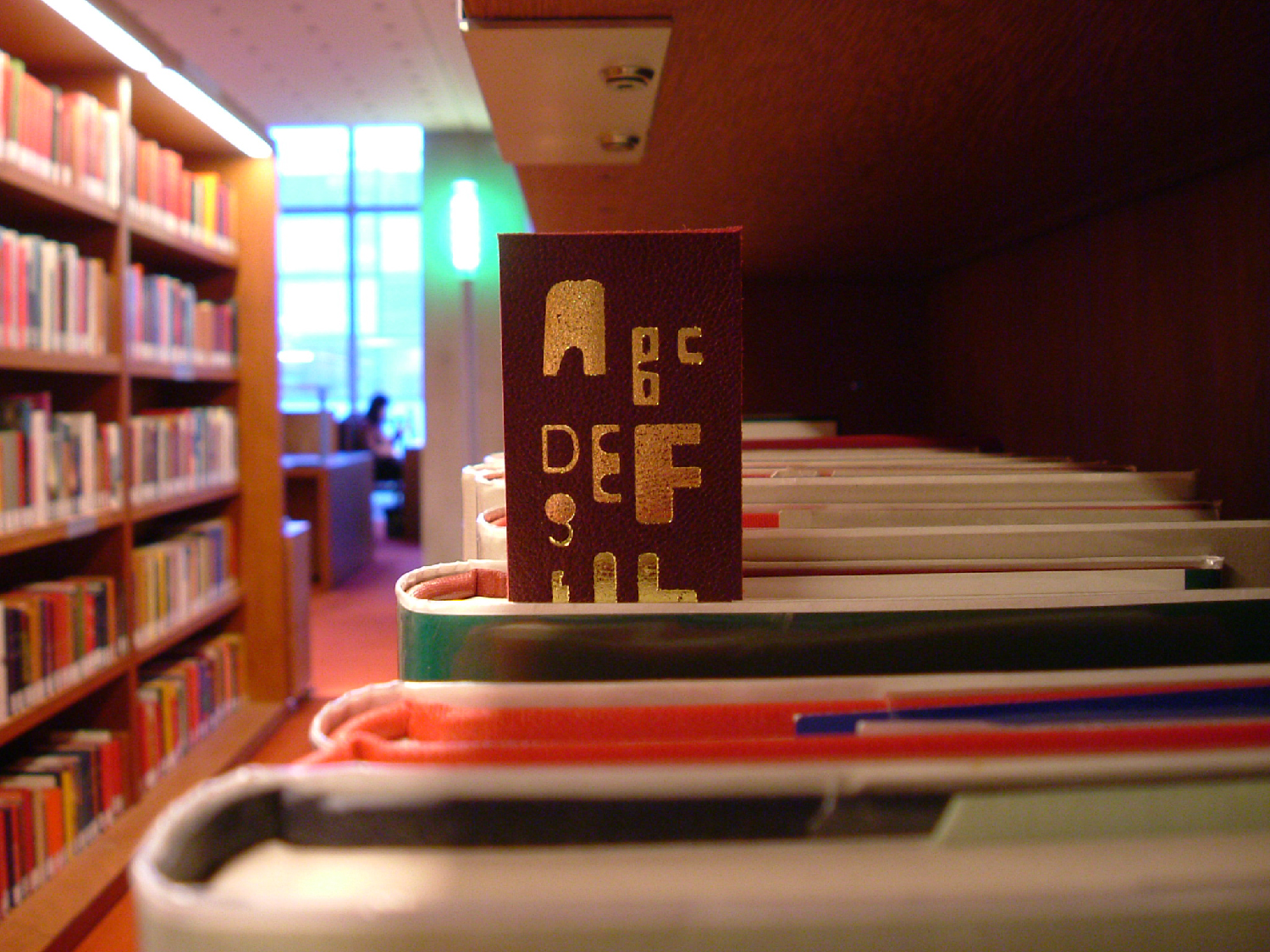
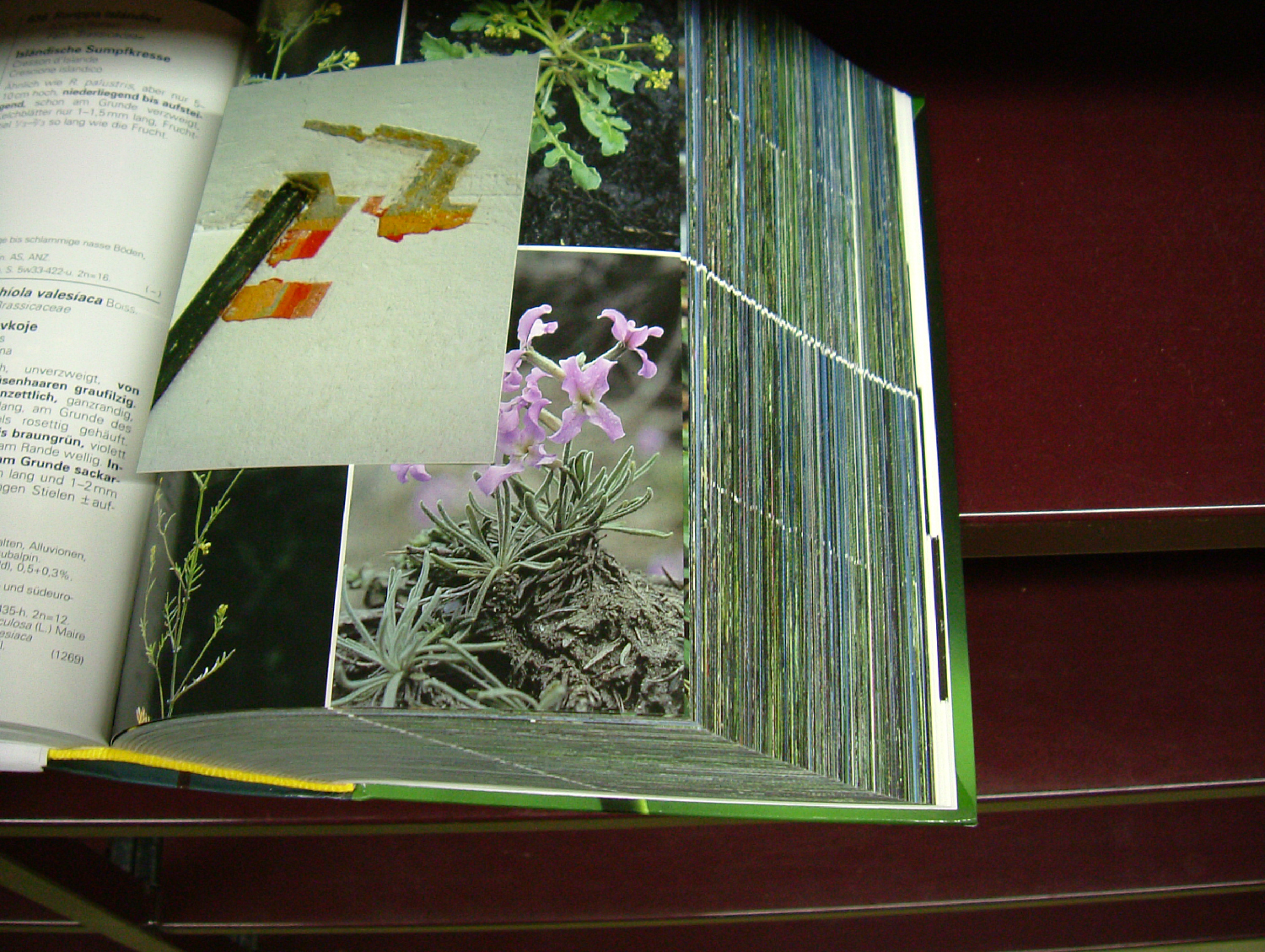
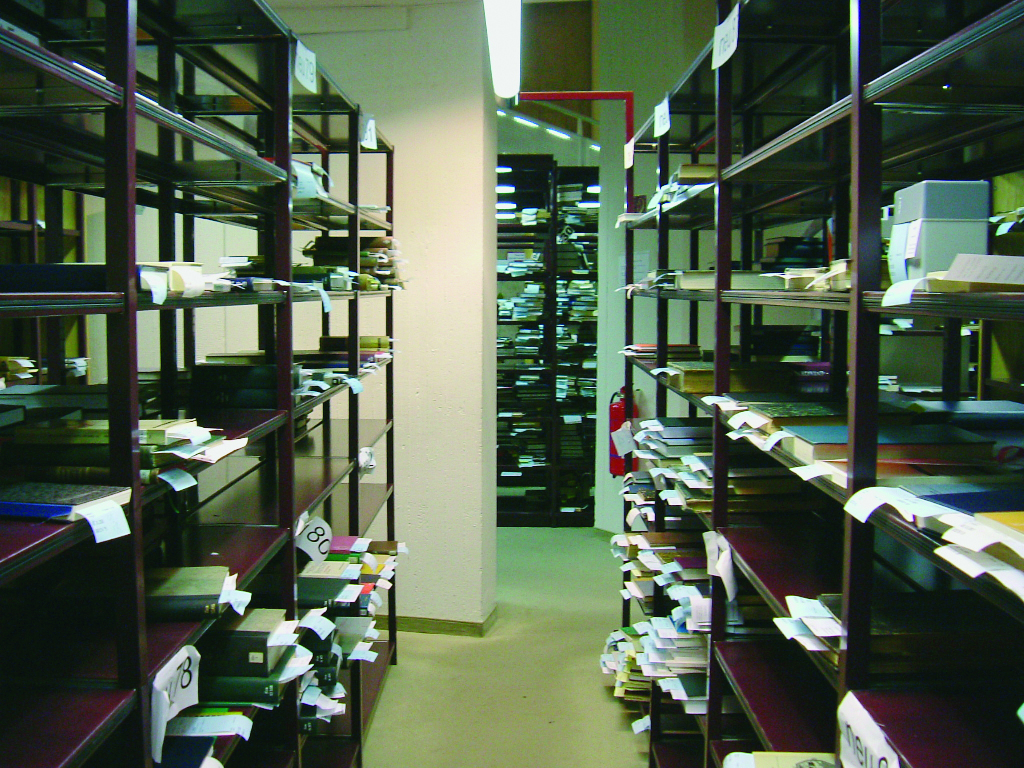
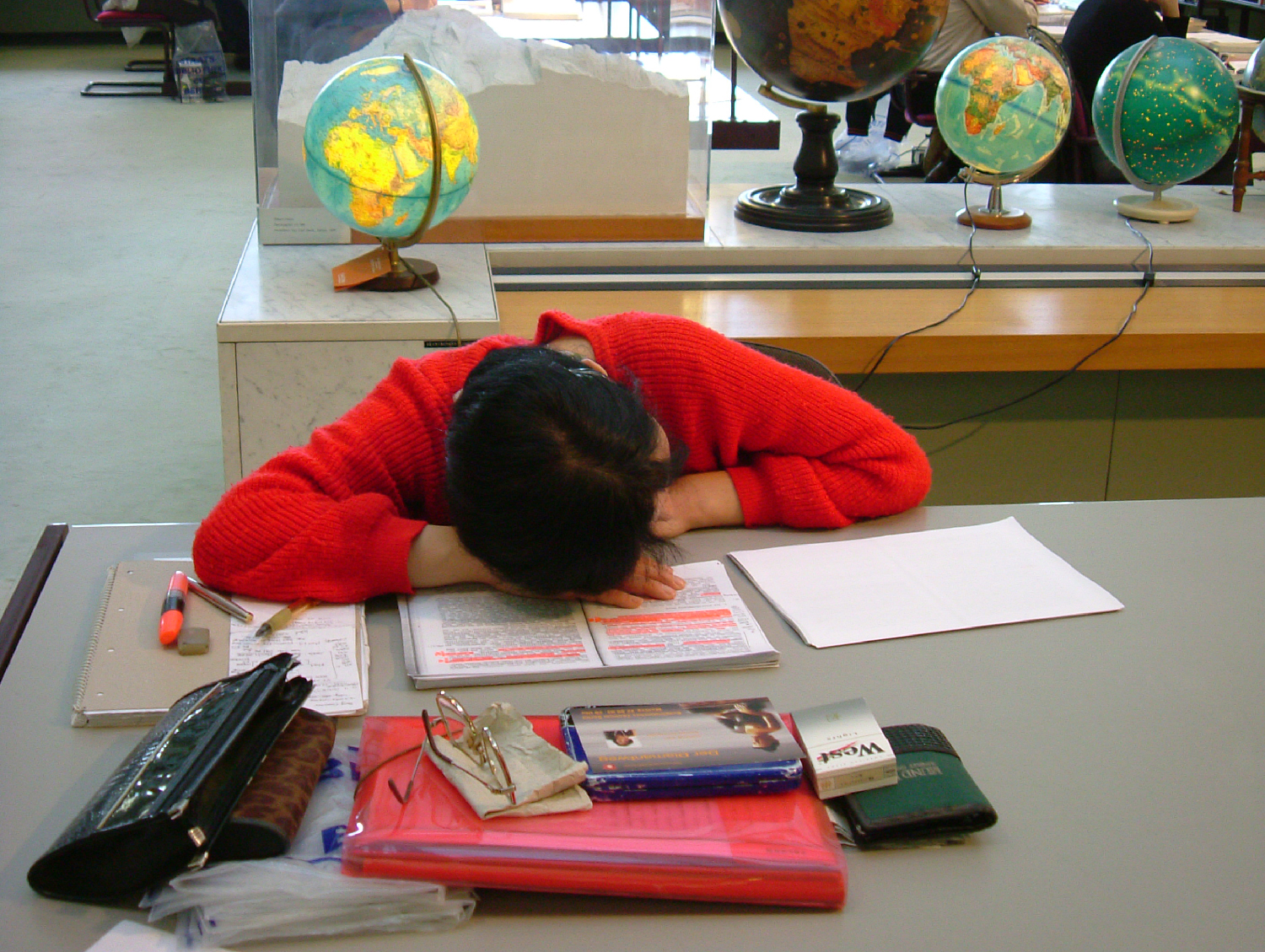
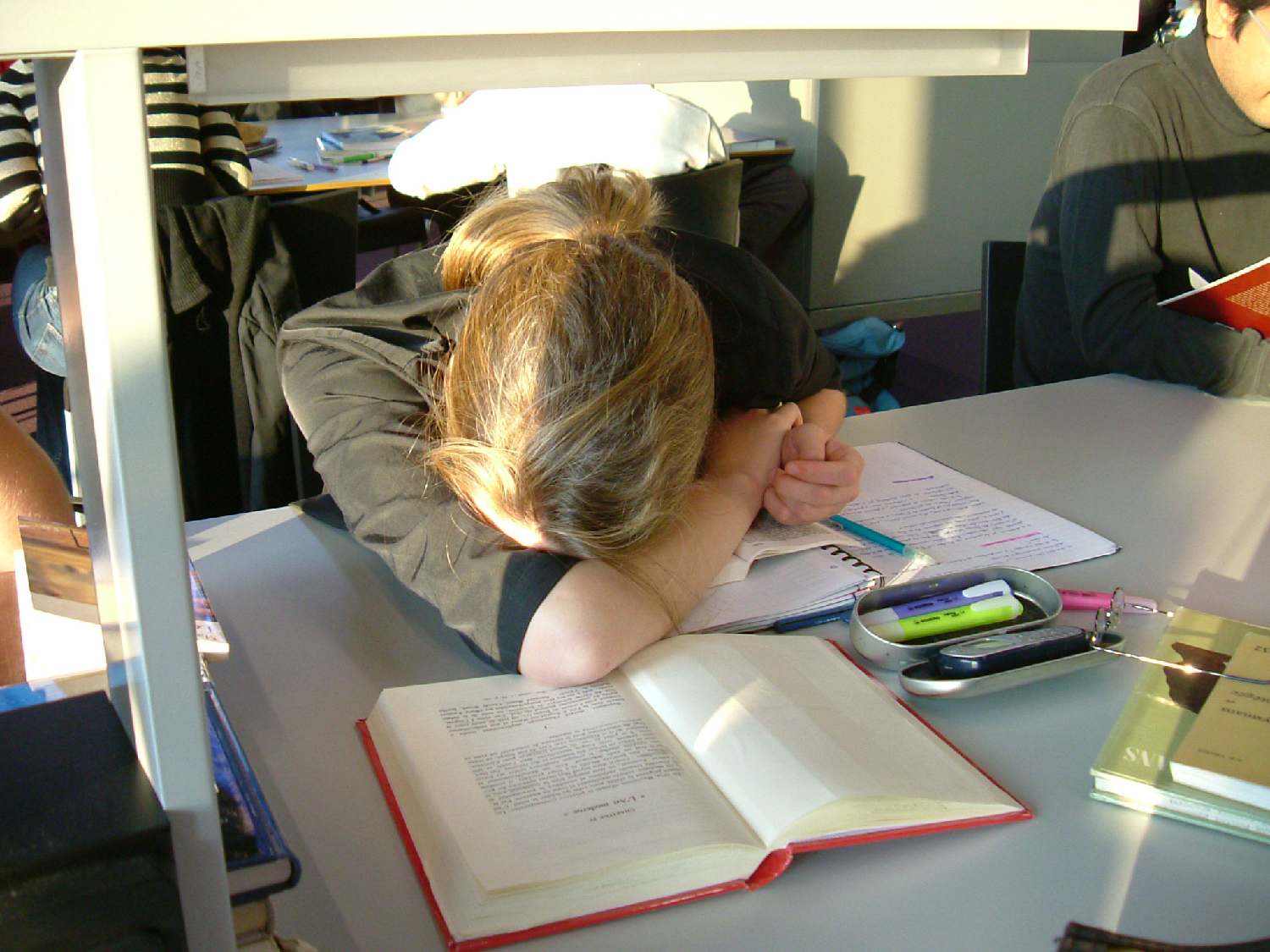
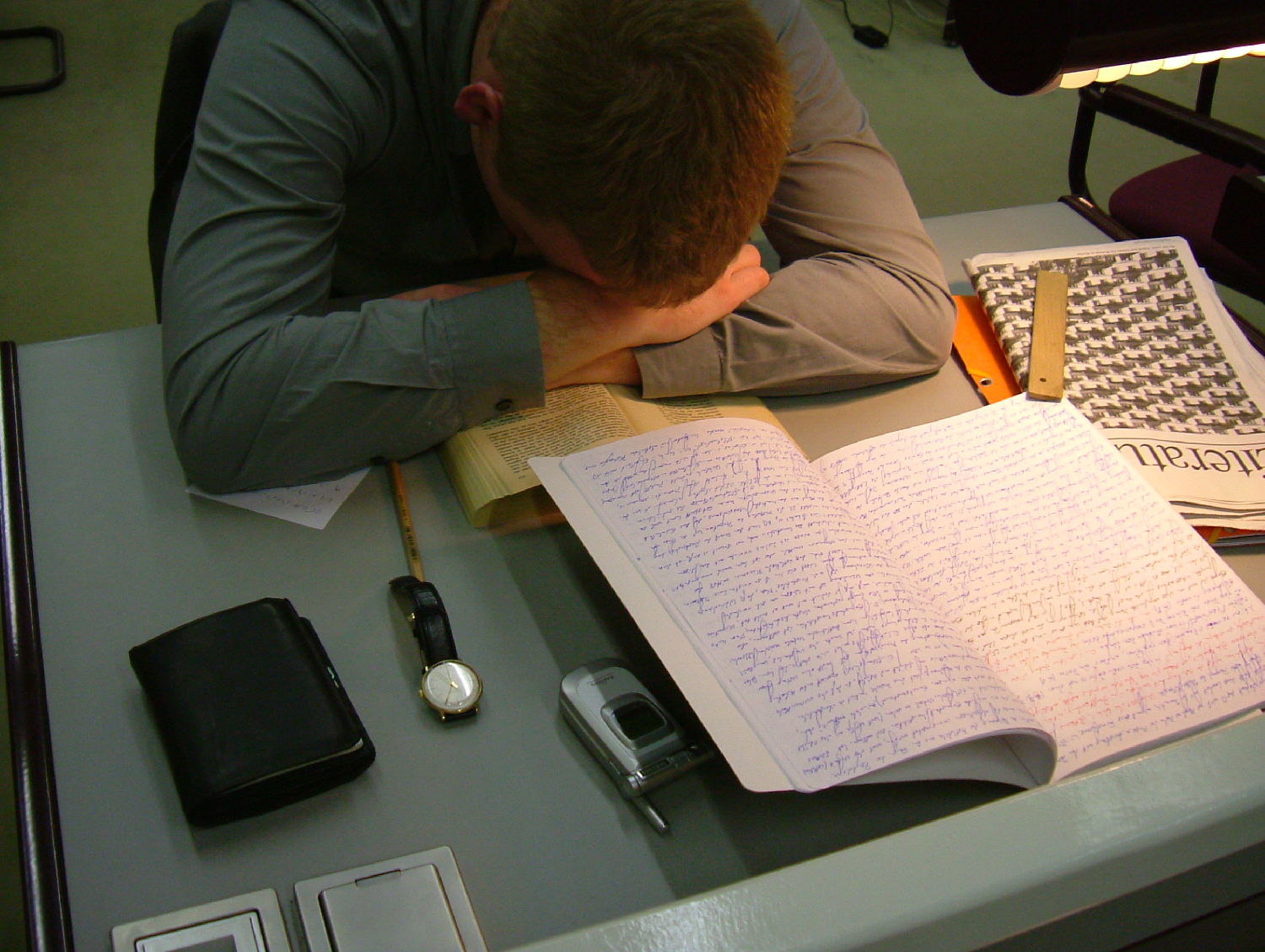
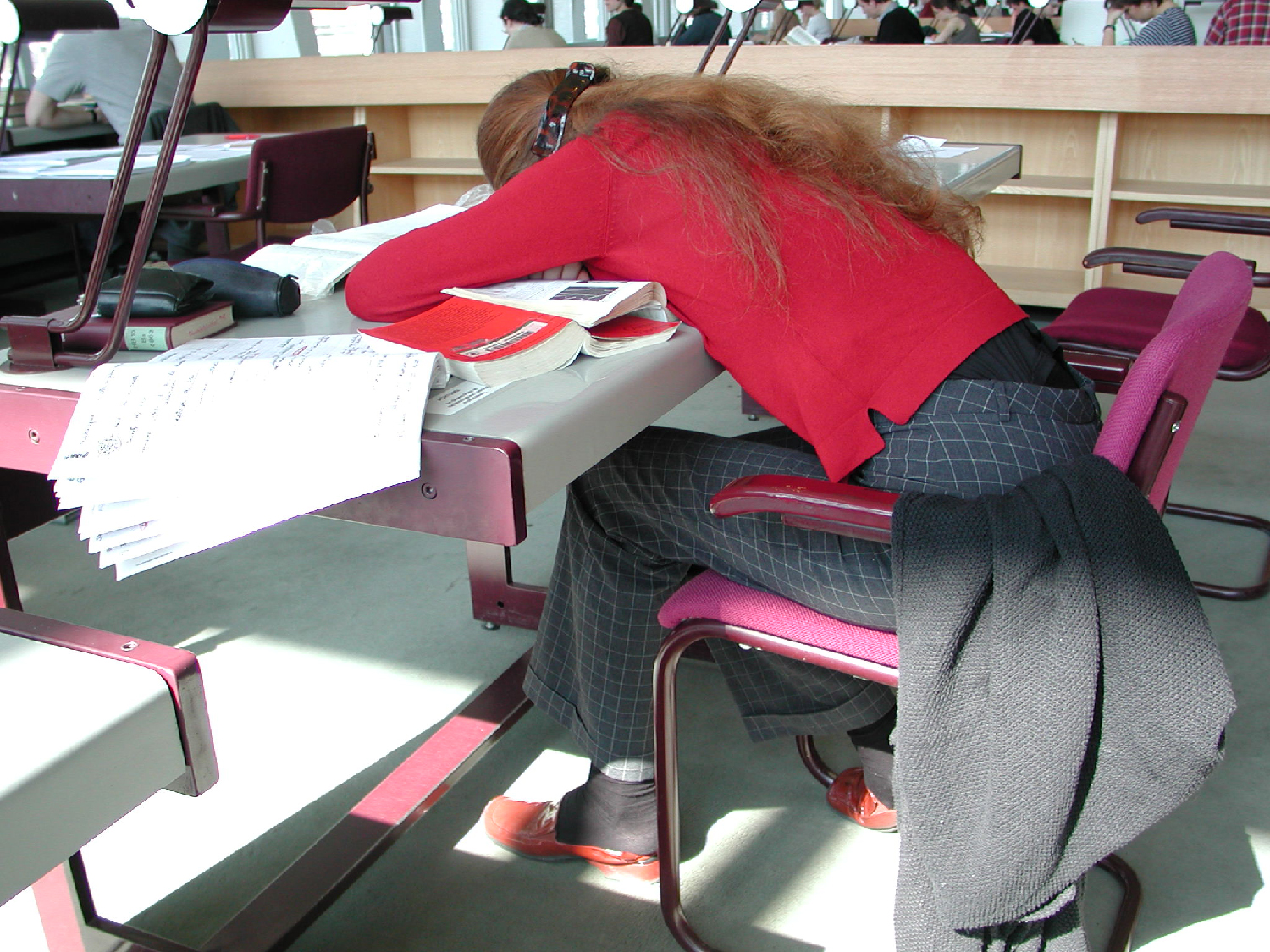
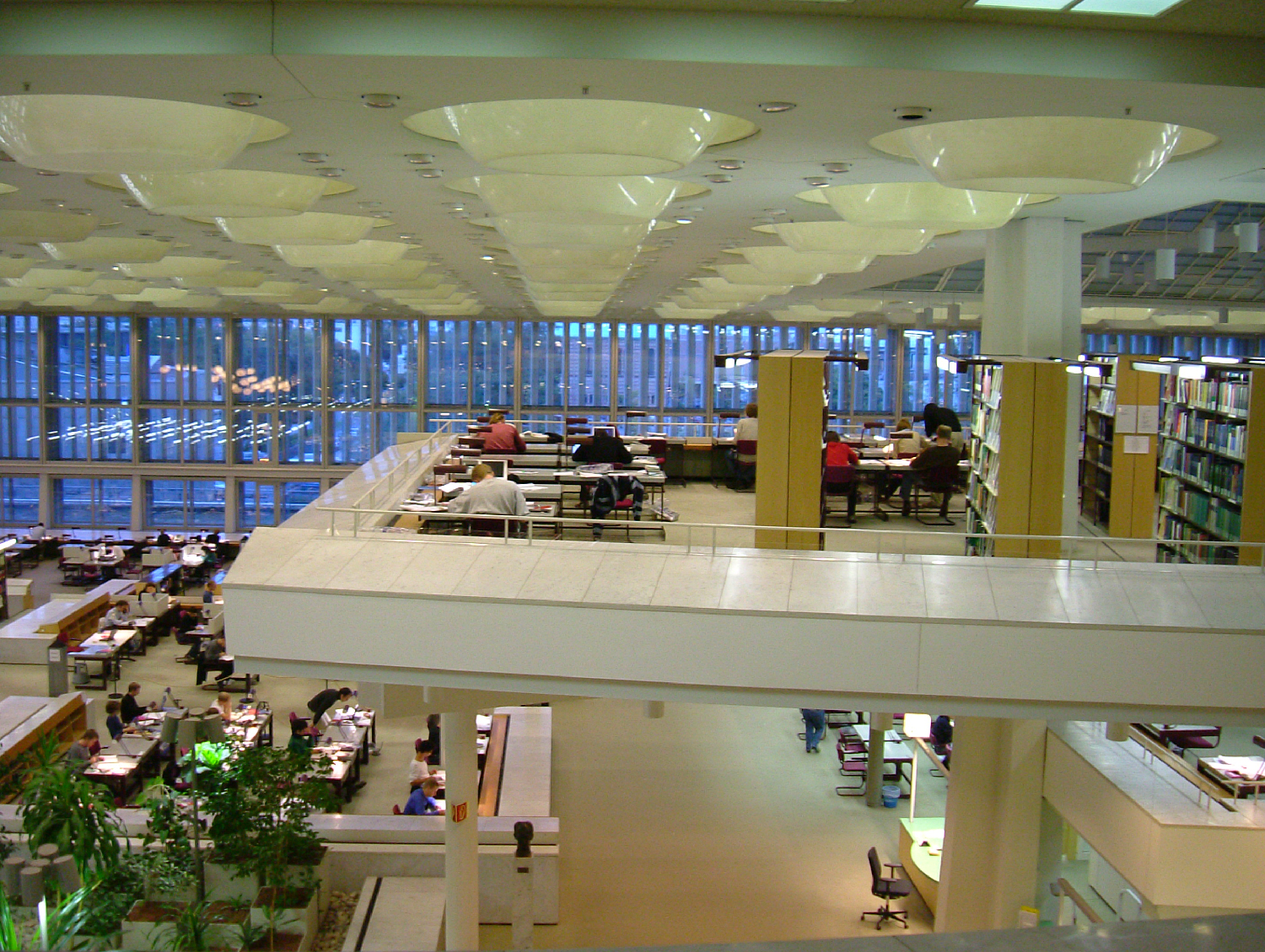
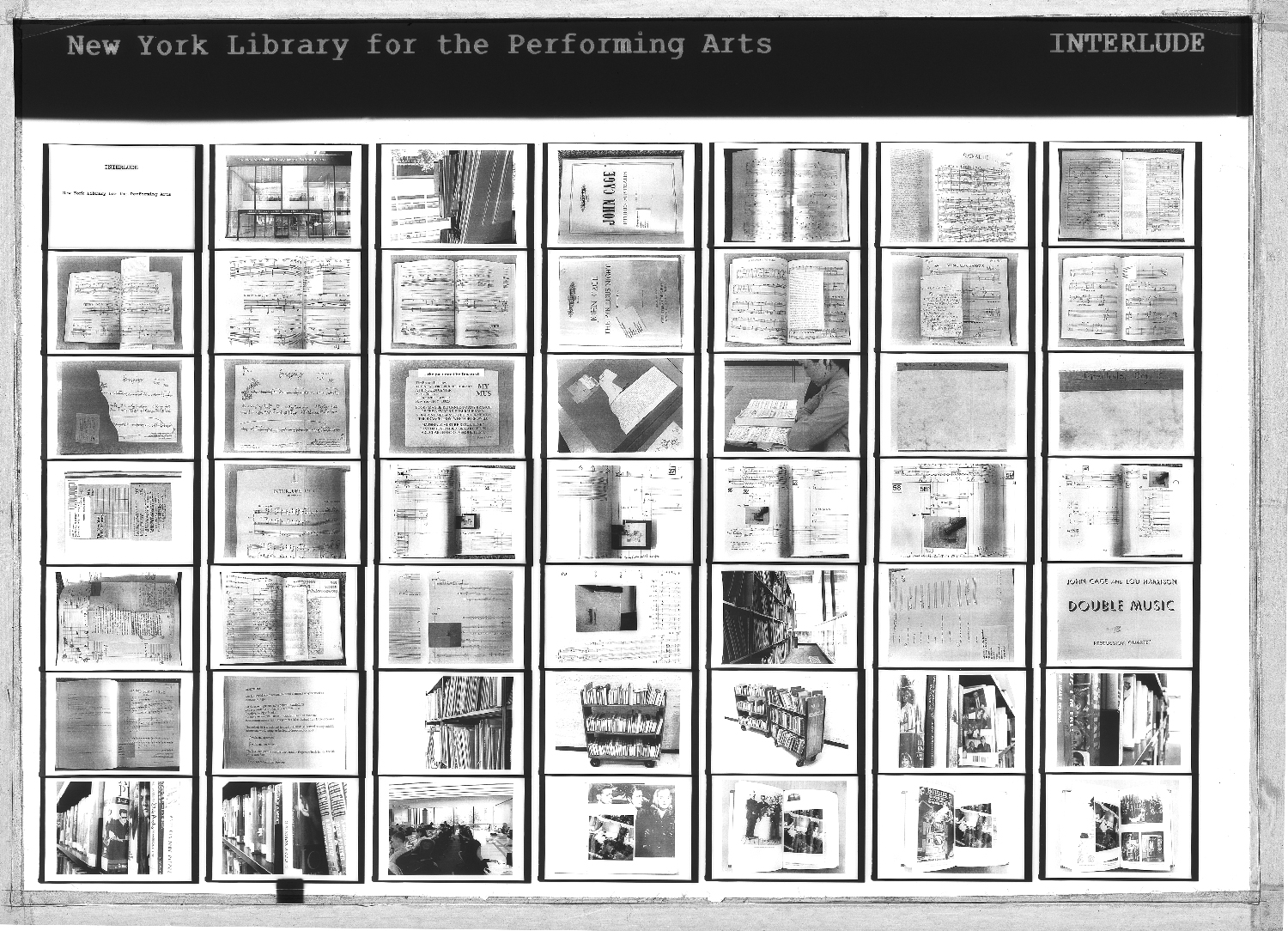
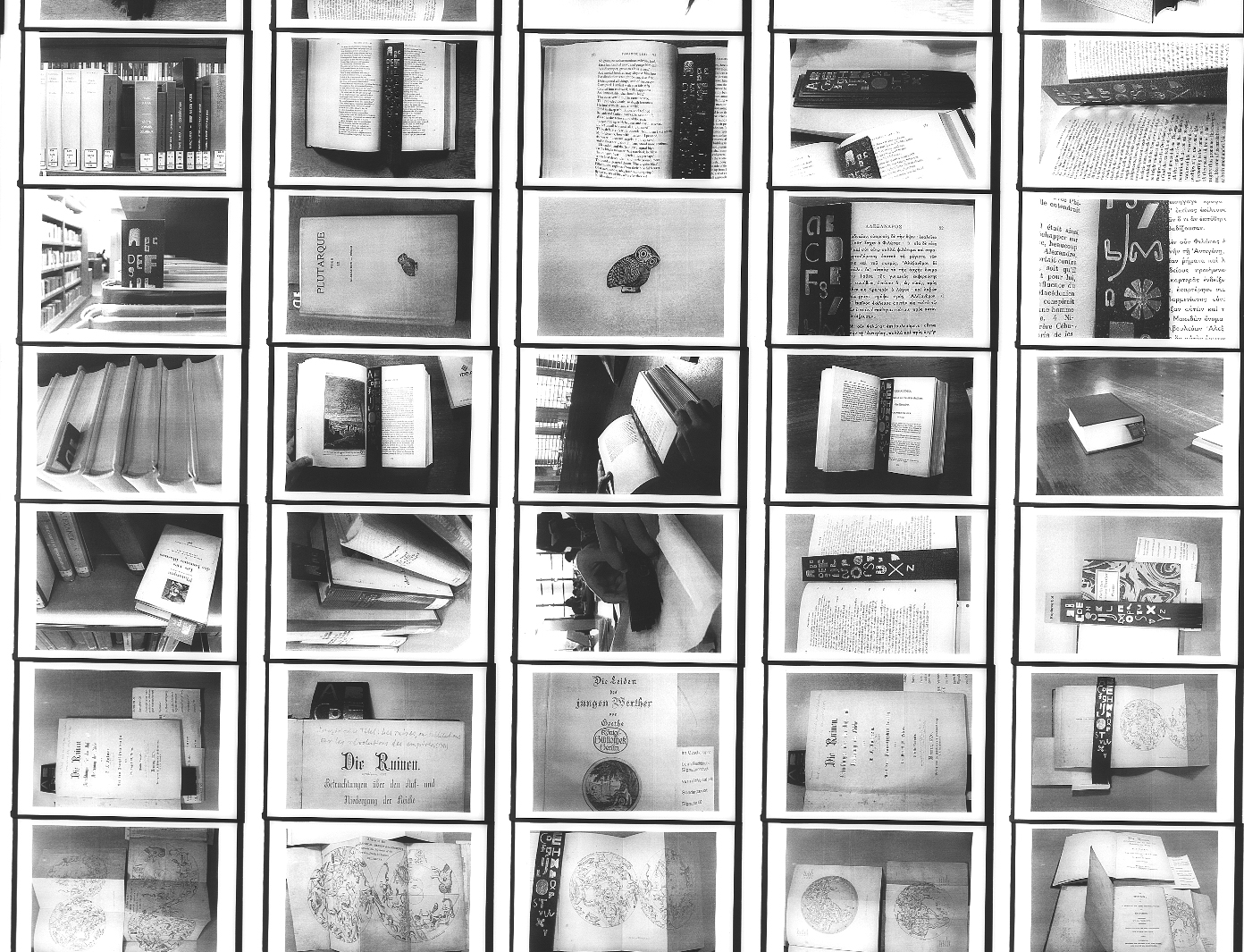
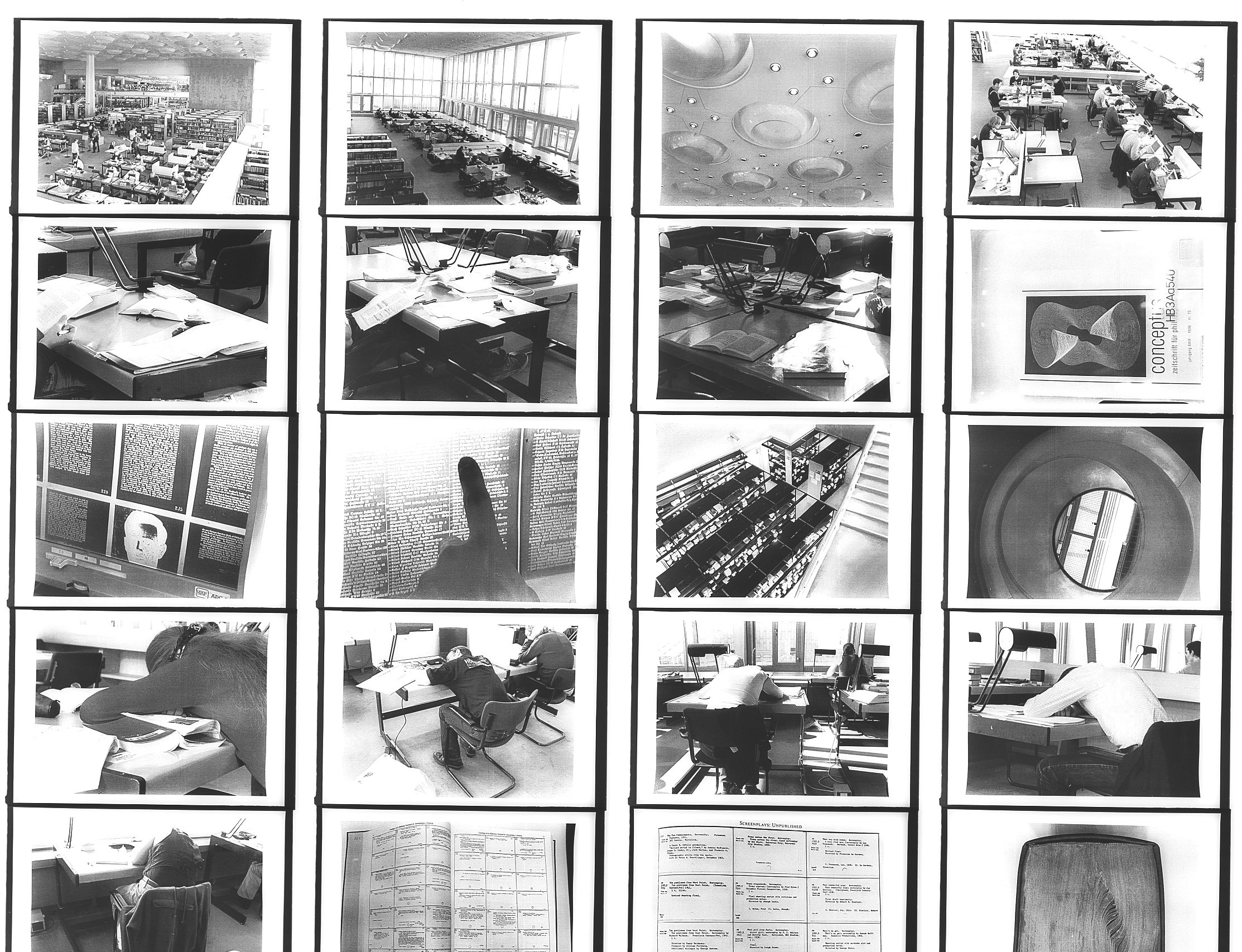
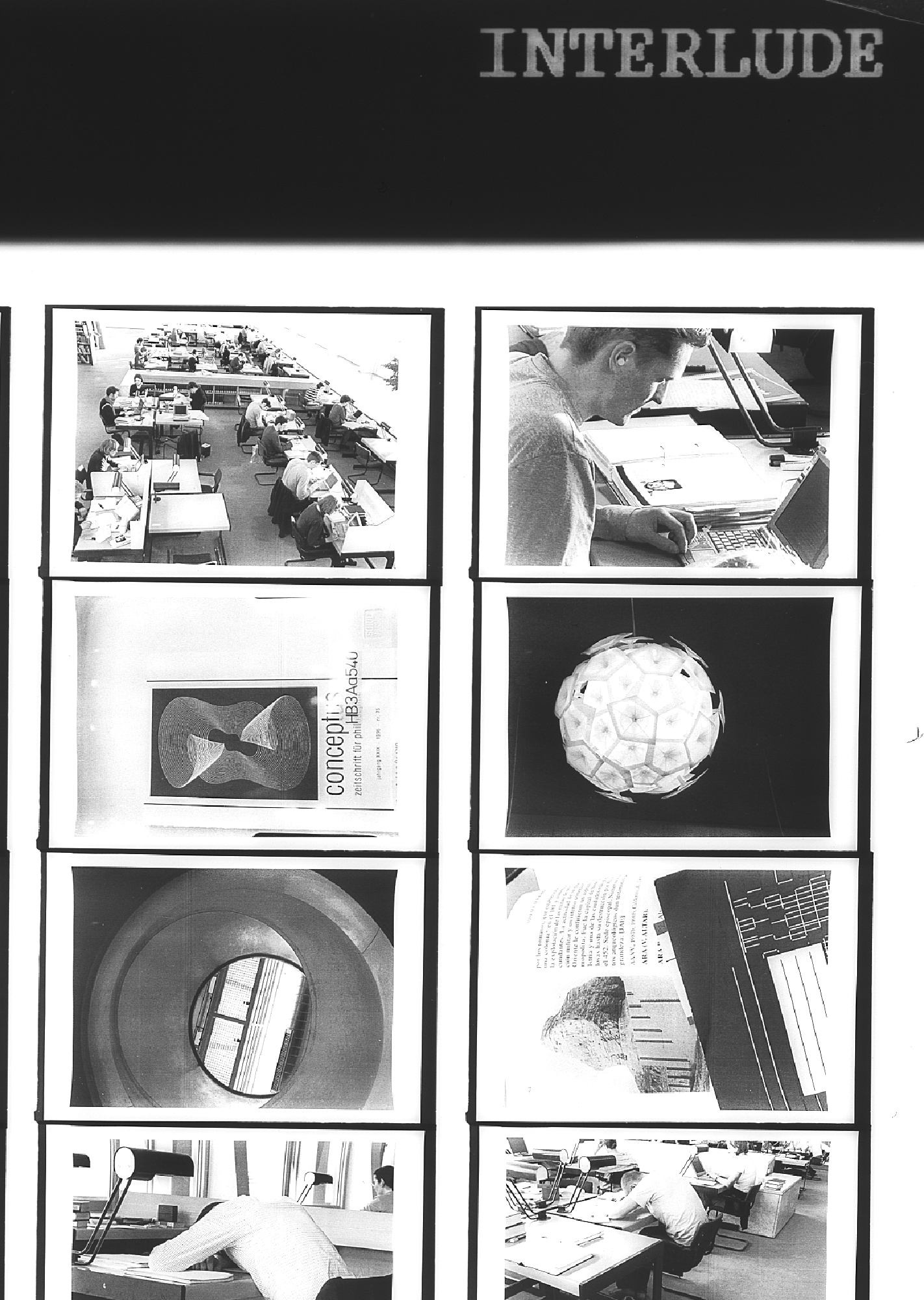
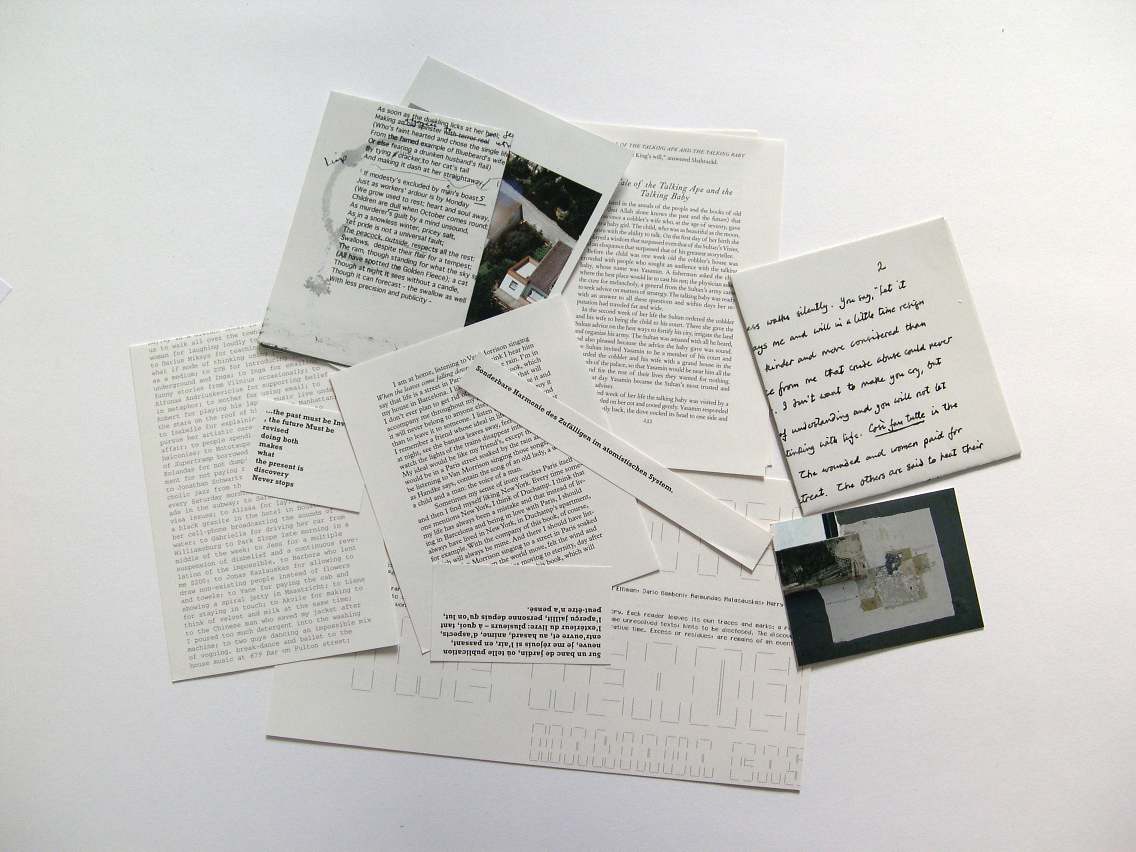
THE WALL AND THE BOOKS: 987 WORDS STOLEN FROM A LIBRARY
Jan van Eyck Academie, Maastrich, 2002
The wall and the books: 987 words stolen from a library is a comment on Jorge Luis Borges’s “The Wall and the Books,” a text that refers to the self-proclaimed first emperor of China, Shih Huang Ti, to whom is attributed the erection of the Great Wall of China, the destruction of all the books that were written before his time, and the development of what we know as the Chinese language.
Borges tries to understand the relation between these three different acts and the reasoning behind Shih Huang Ti’s decisions. Defenses, monuments, and books are different mechanisms put to the task of making things last. They can define territories and establish origins. In this sense, the construction of history depends on the destruction of the past; a past that needs to be annulled in order for the following period to be validated as absolute. Each monument contains a shadow – the negative of a previous edification.
Each of the 987 words that comprise this short essay by Borges is erased from 987 different books in the library at the Jan van Eyck Academie in Maastricht, the Netherlands.
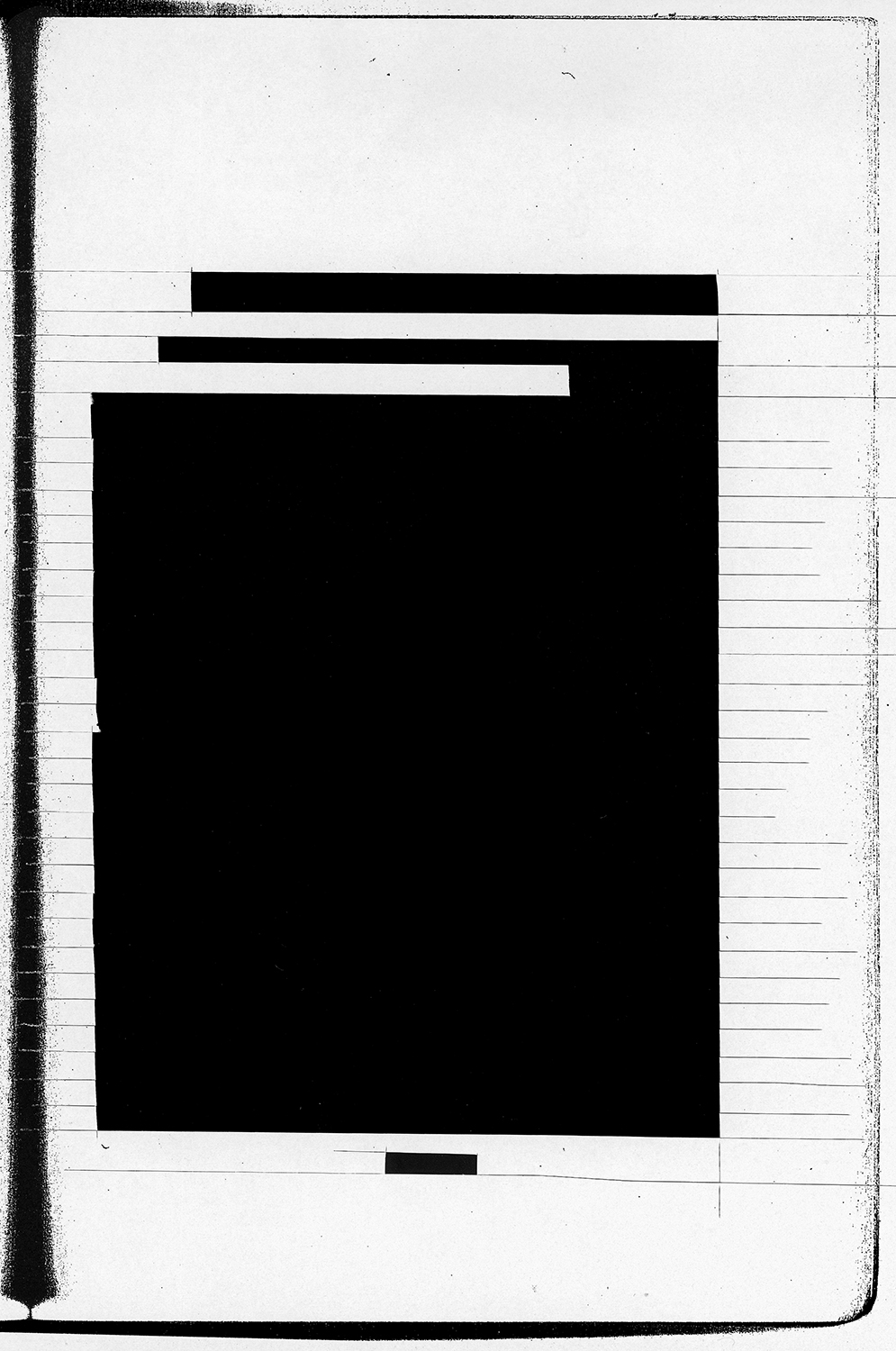
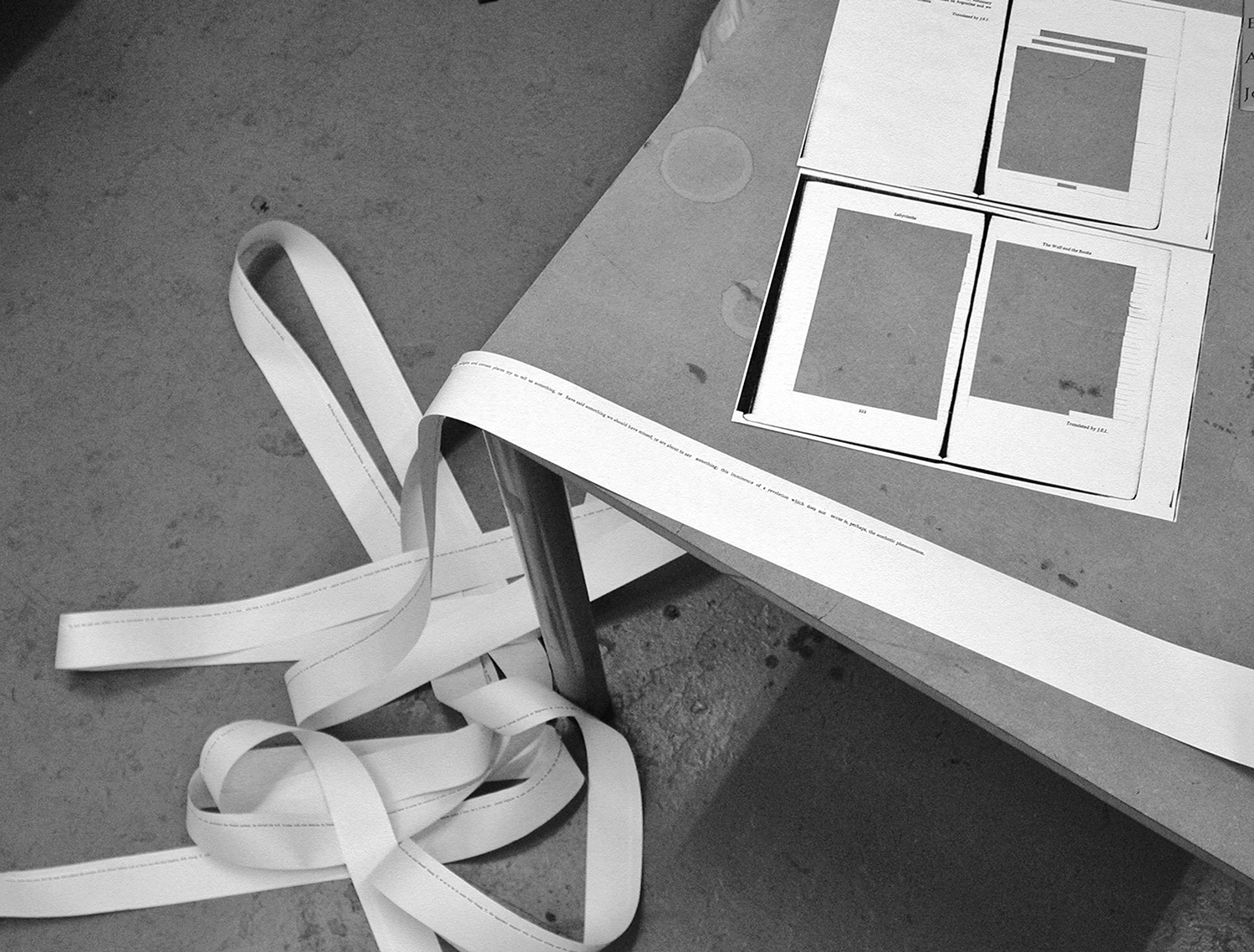
Process, paper strip with words cut out from books.
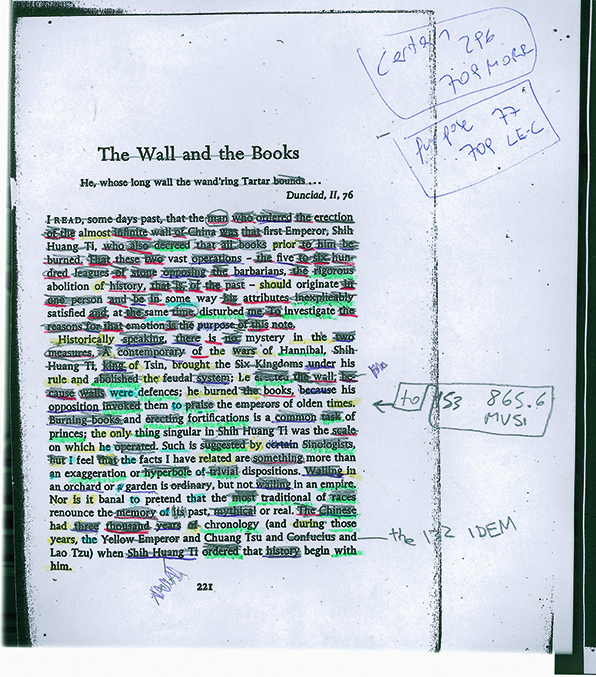
Photocopìes of Borge’s text, used as a reference for erasing the words.
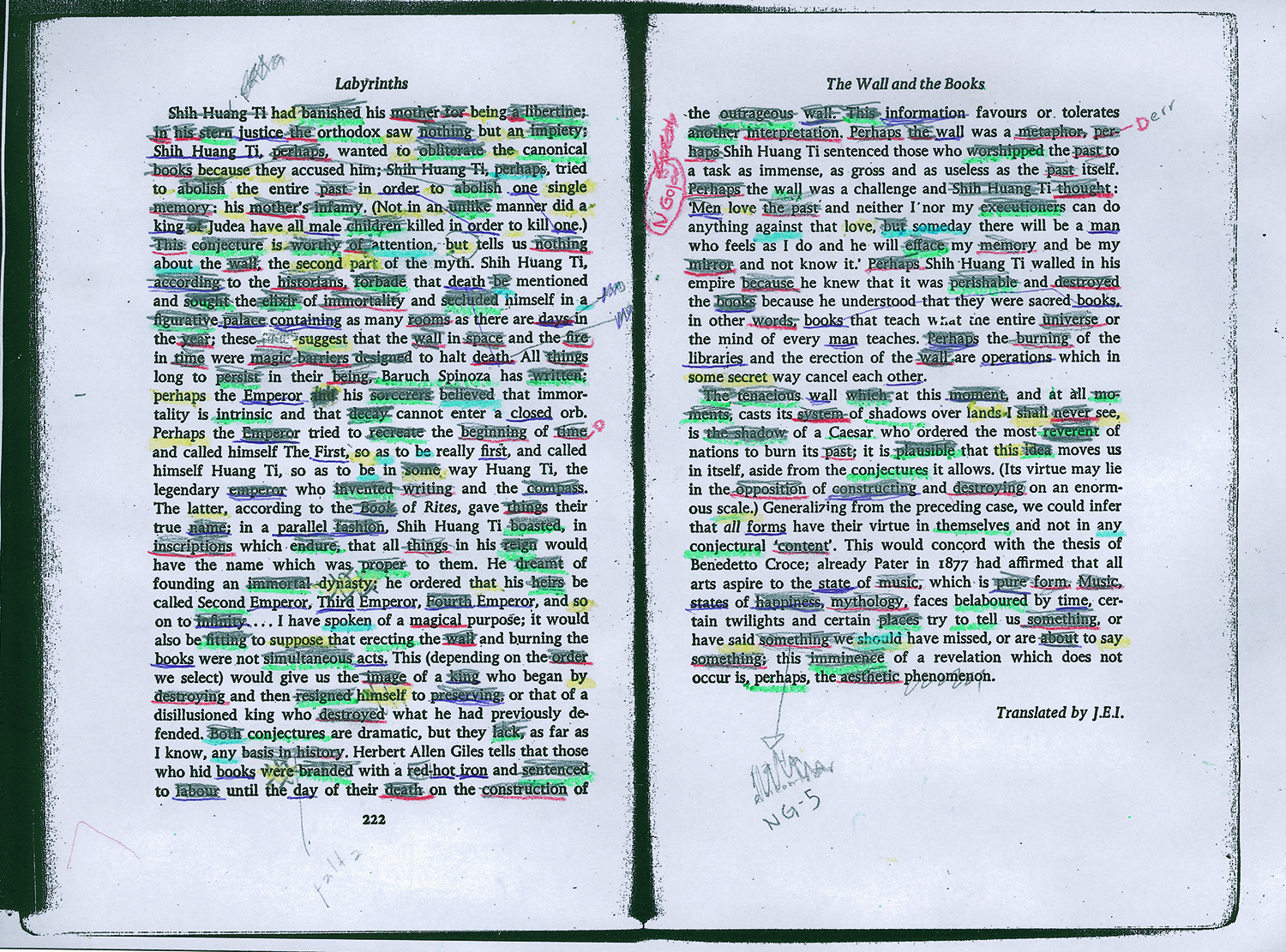
Photocopìes of Borge’s text, used as a reference for erasing the words.
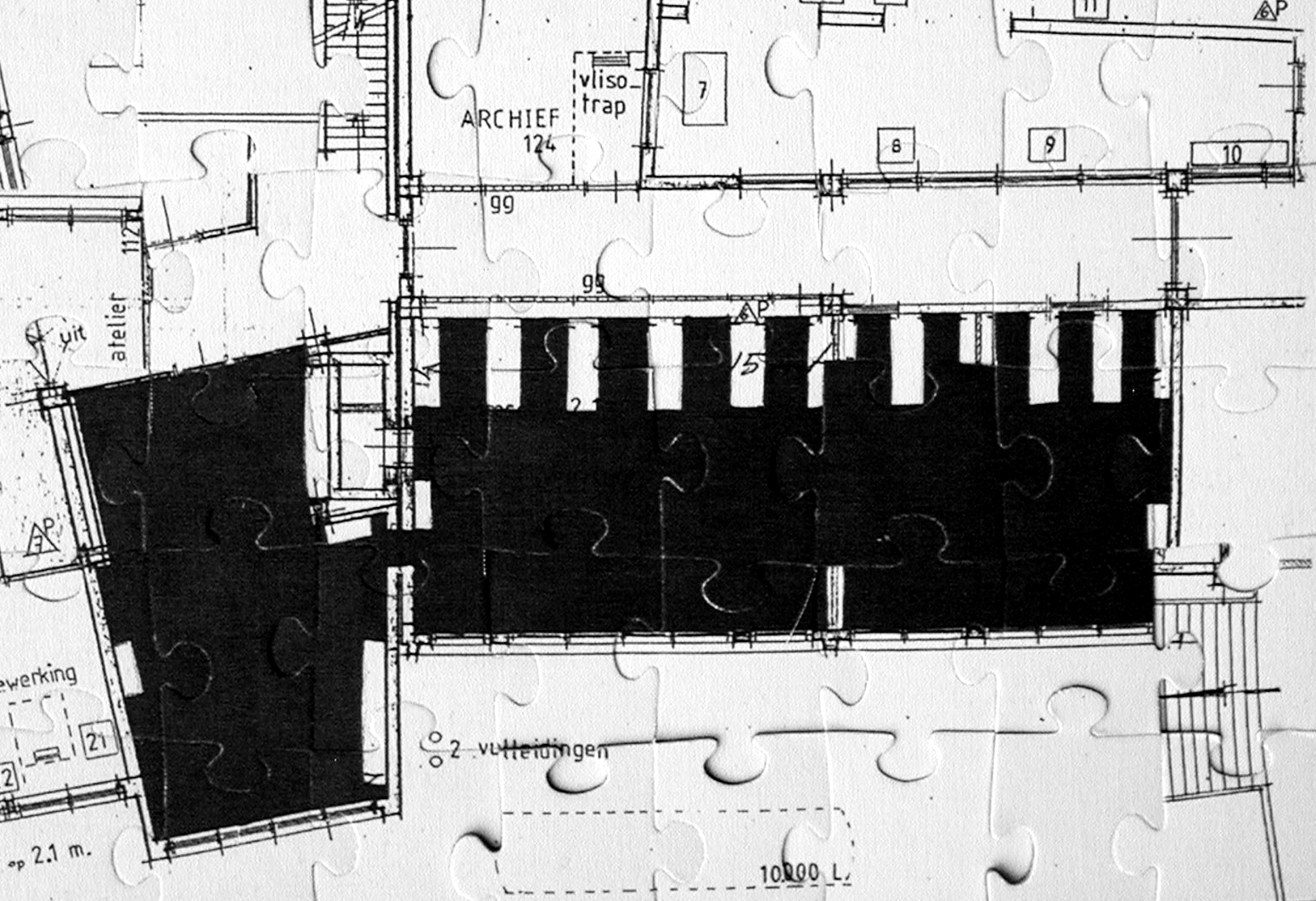
Puzzle with interchangeable pieces
It refers to the floorplan of the library of the Jan van Eyck Academie, Maastrich
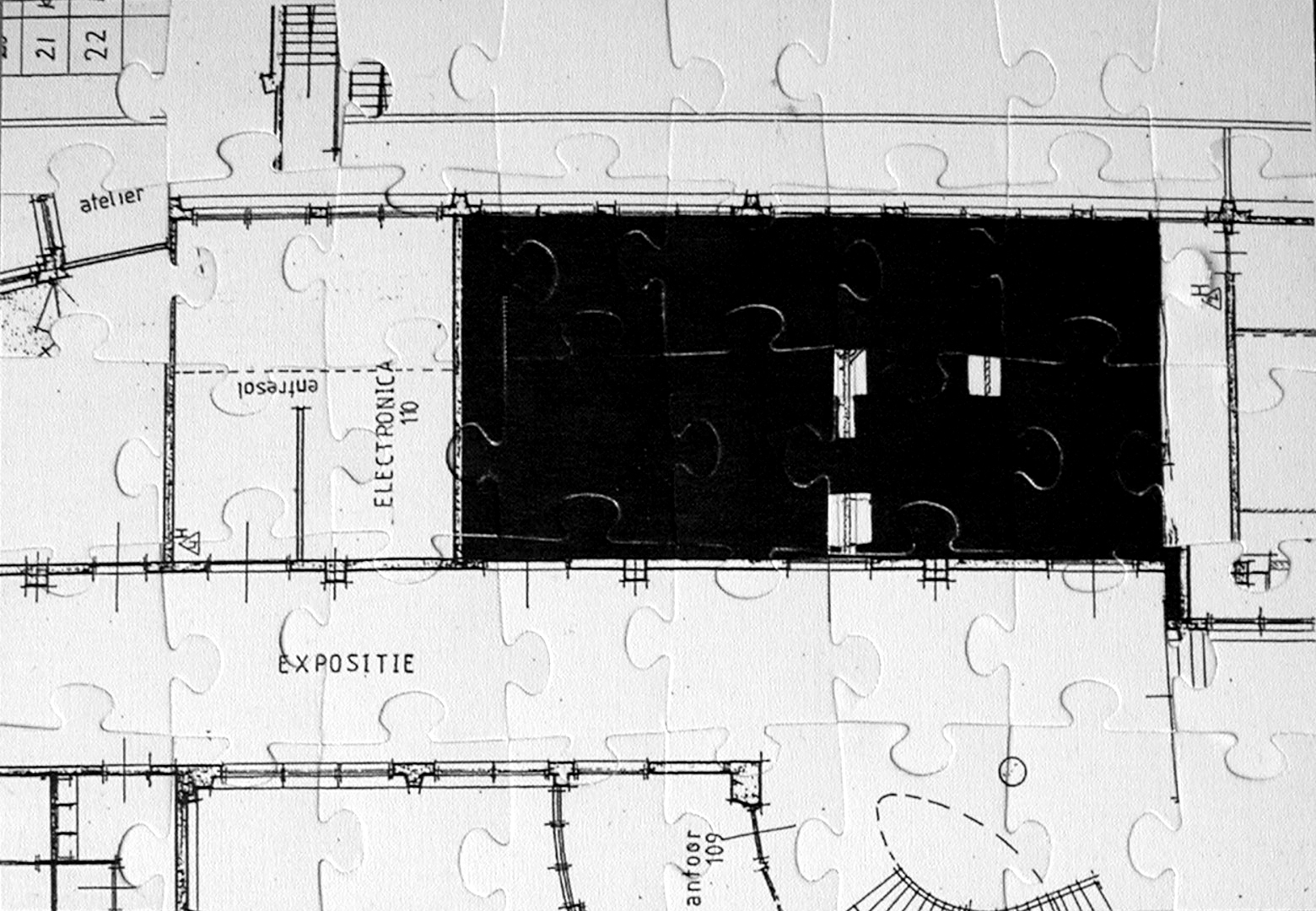
Puzzle with interchangeable pieces
It refers to the floorplan of the exhibition space of the Jan van Eyck Academie, Maastrich
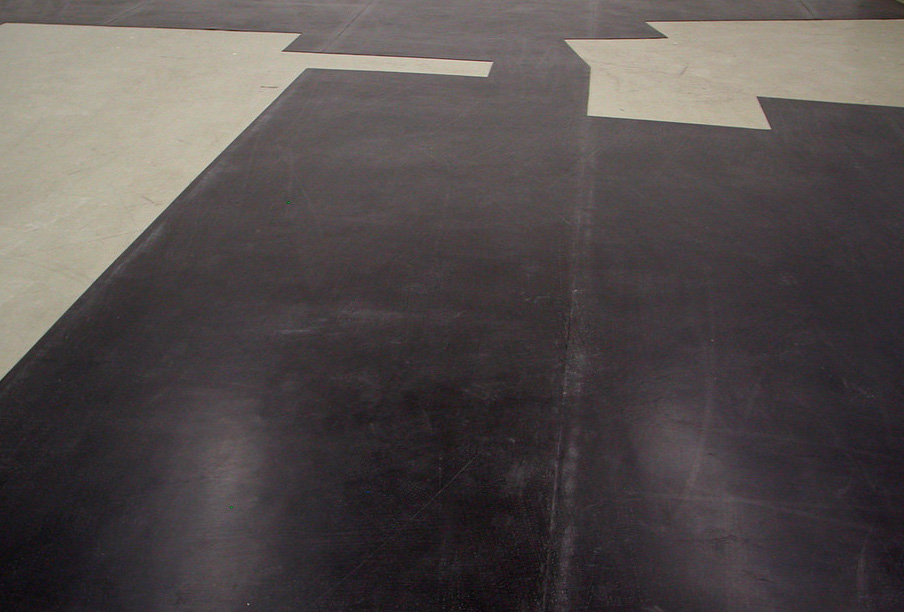
Installation view The wall and the books: 987 words stolen from a library, Jan van Eyck Academie, Maastrich, 2002.
The rubber carpet correspond to the layout of the library, adapted to the exhibition space
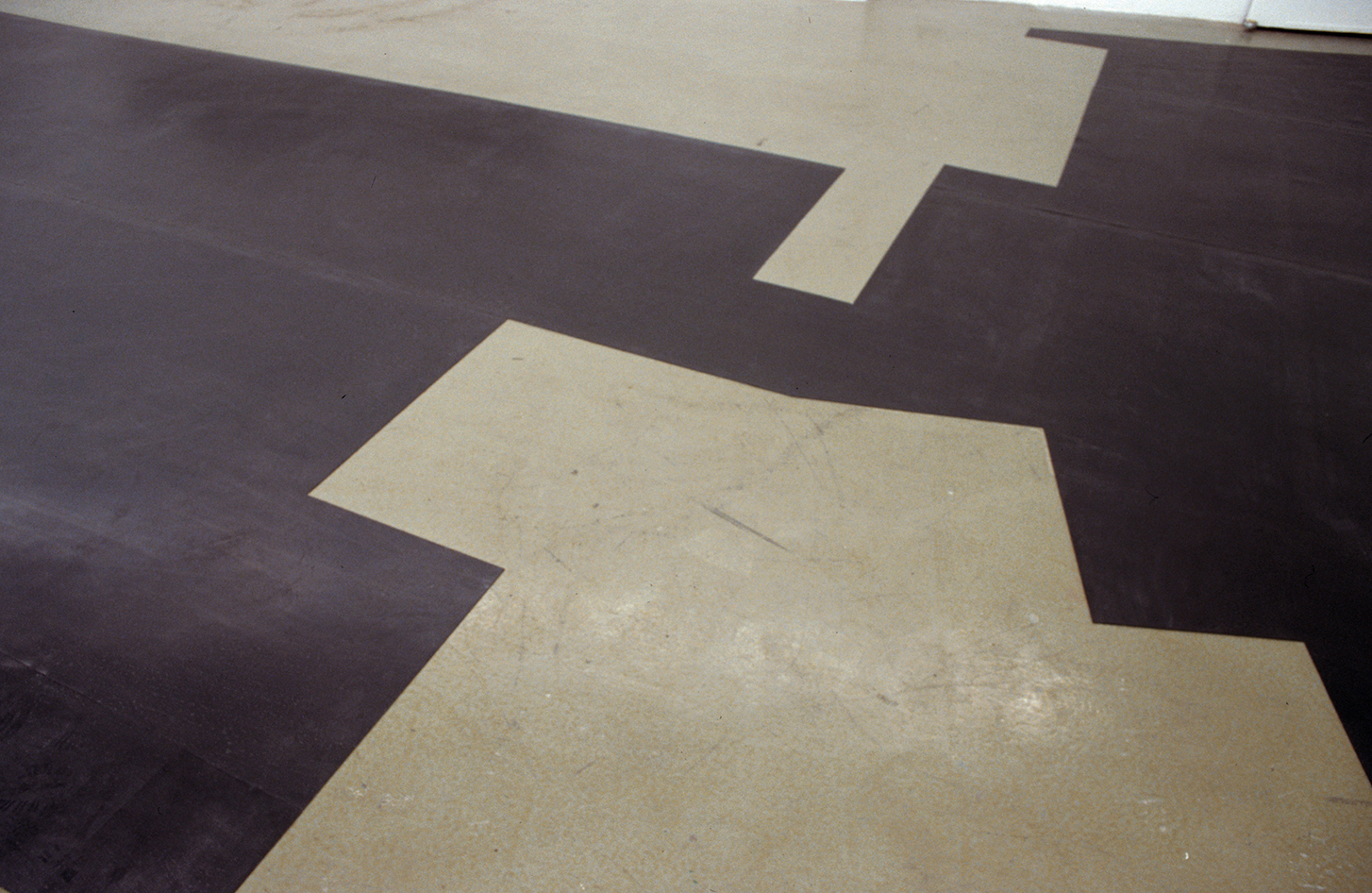
Installation view The wall and the books: 987 words stolen from a library, Jan van Eyck Academie, Maastrich, 2002.
The rubber carpet correspond to the layout of the library, adapted to the exhibition space
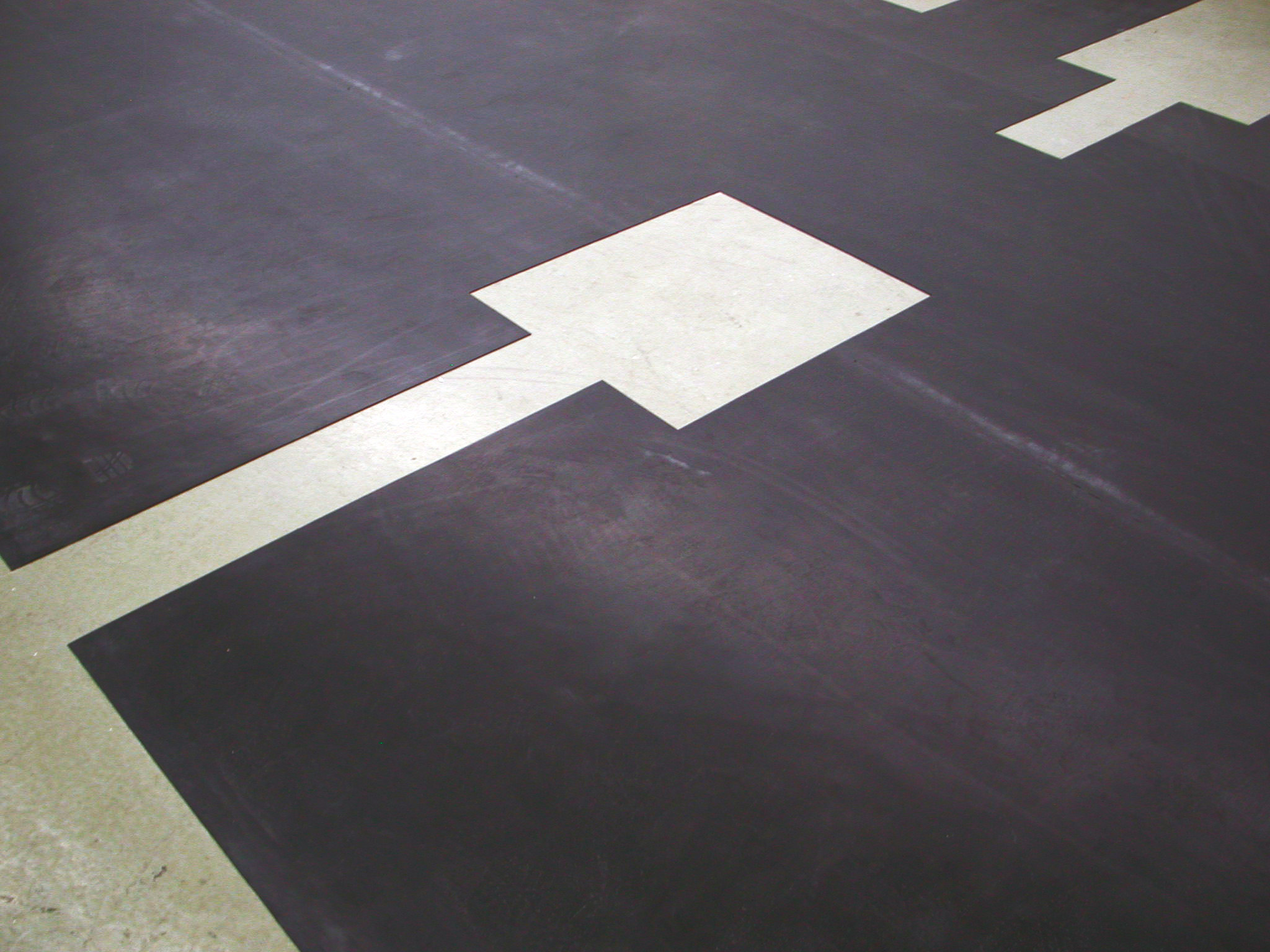
Installation view The wall and the books: 987 words stolen from a library, Jan van Eyck Academie, Maastrich, 2002.
The rubber carpet correspond to the layout of the library, adapted to the exhibition space
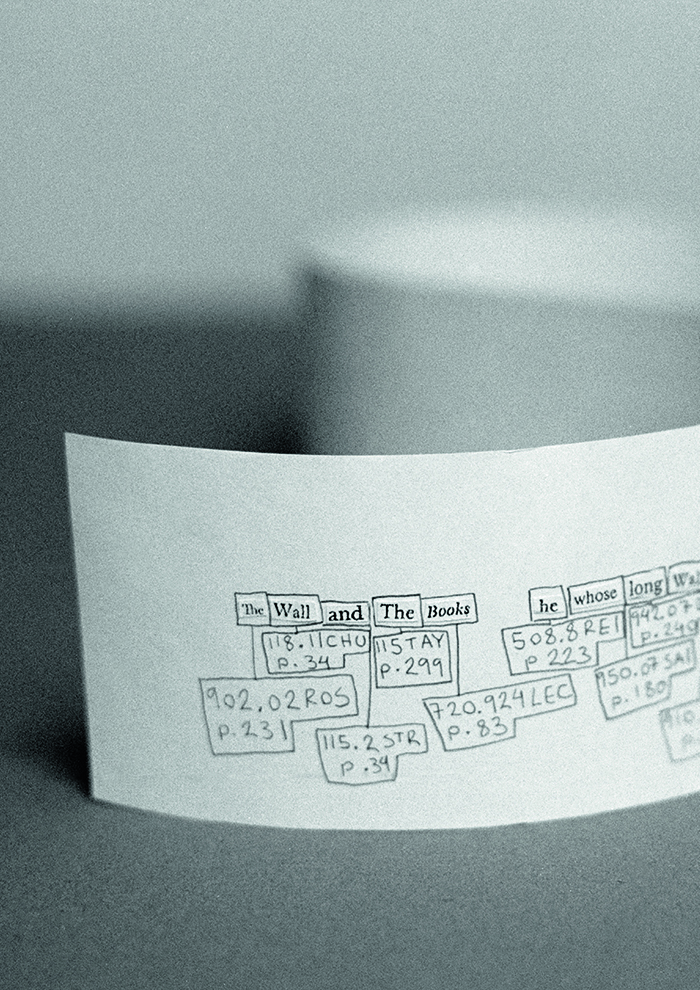
Paper strip with the 987 words stolen from the library and its corresponding references
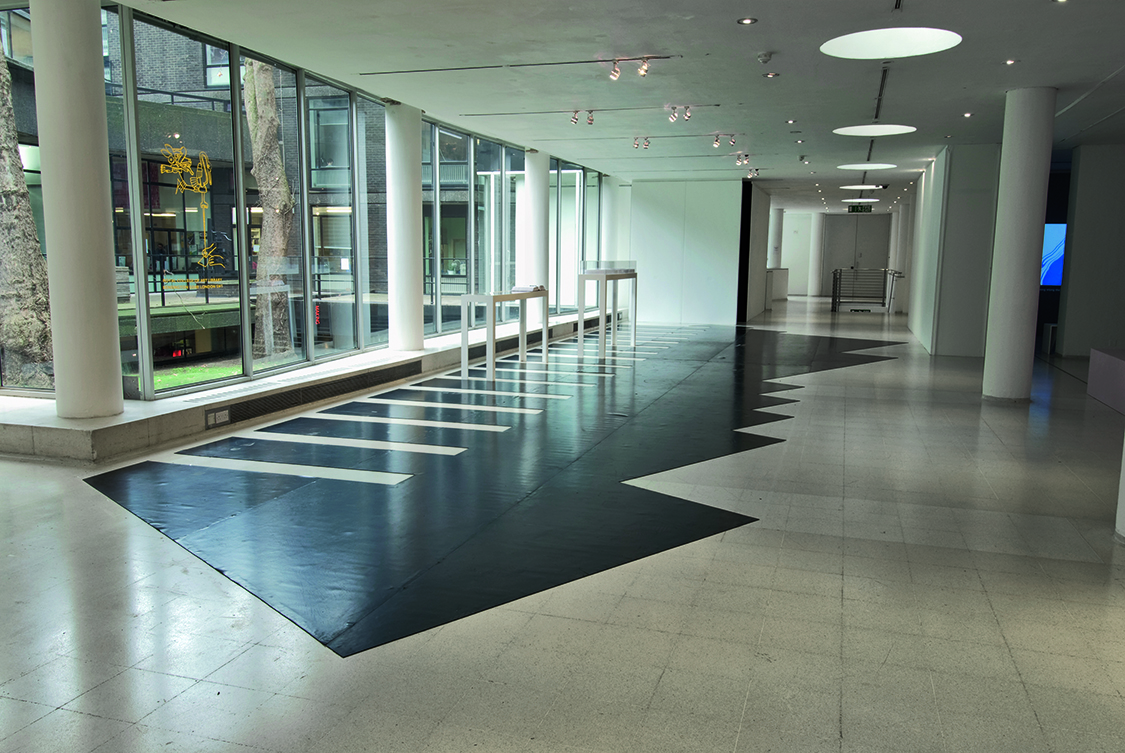
Installation view The wall and the books: 987 words stolen from a library, Royal College of Art, London, 2011
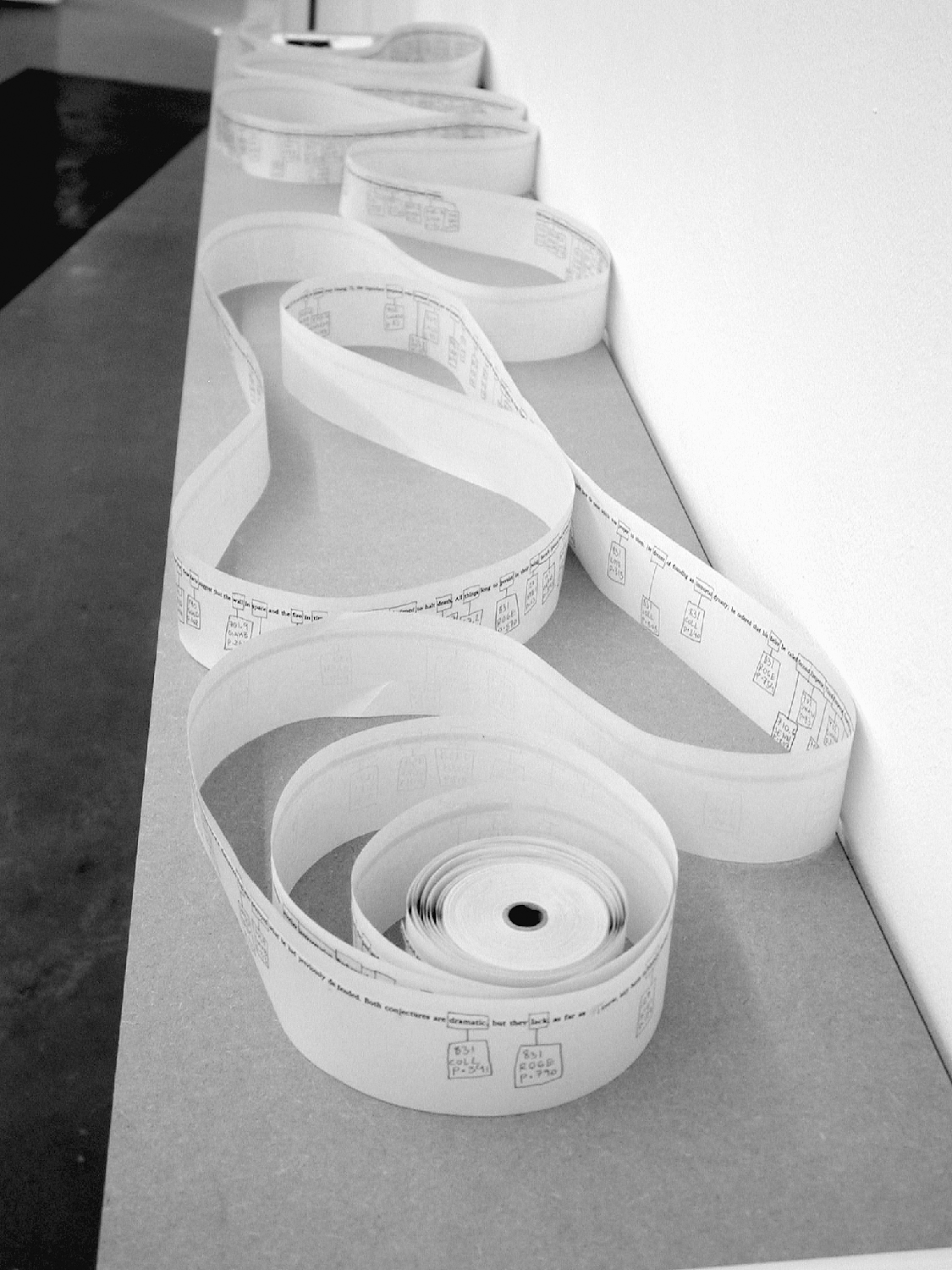
Paper strip with the 987 words stolen from the library and its corresponding references, ca. / approx. 10 × 1000 cm
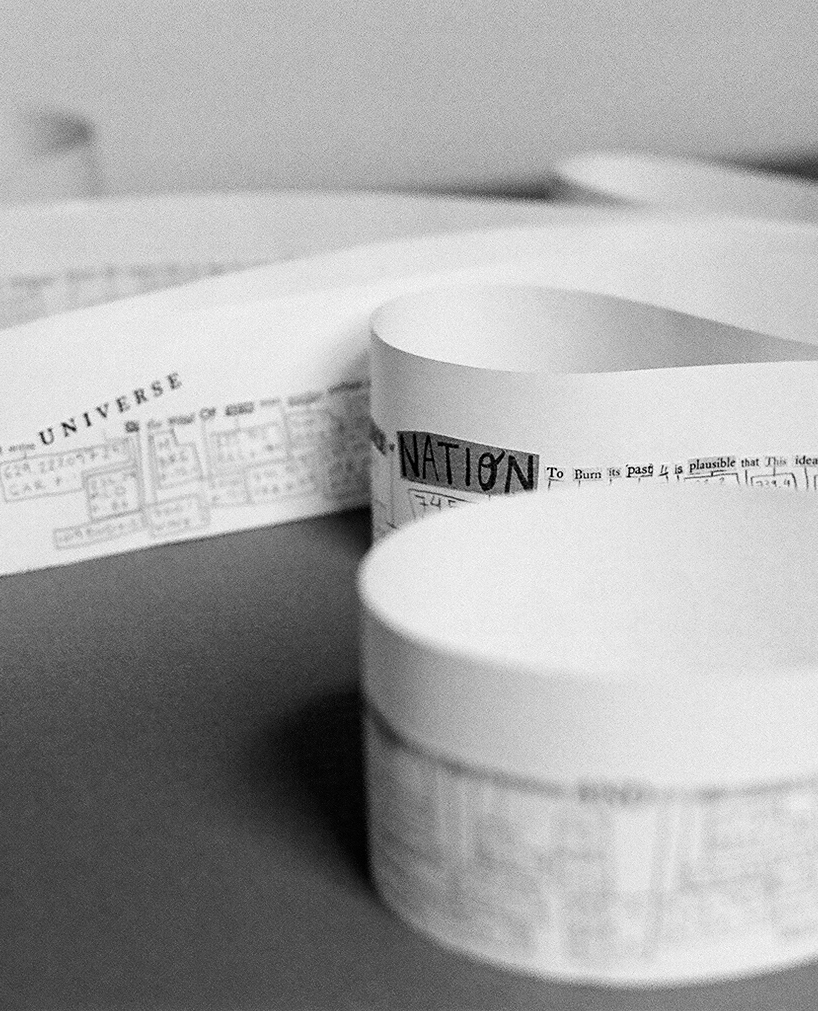
Paper strip with the 987 words stolen from the library and its corresponding references,
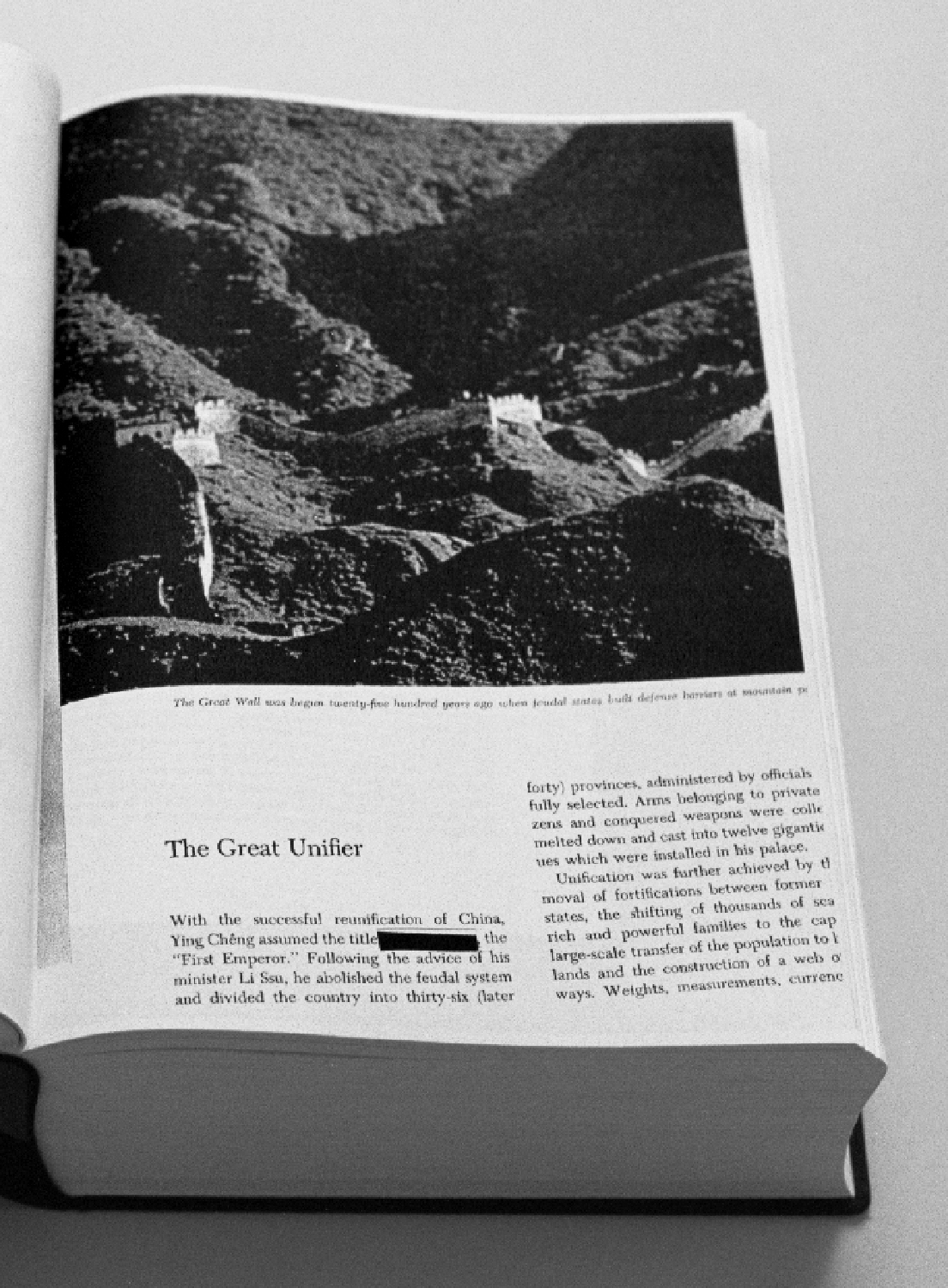
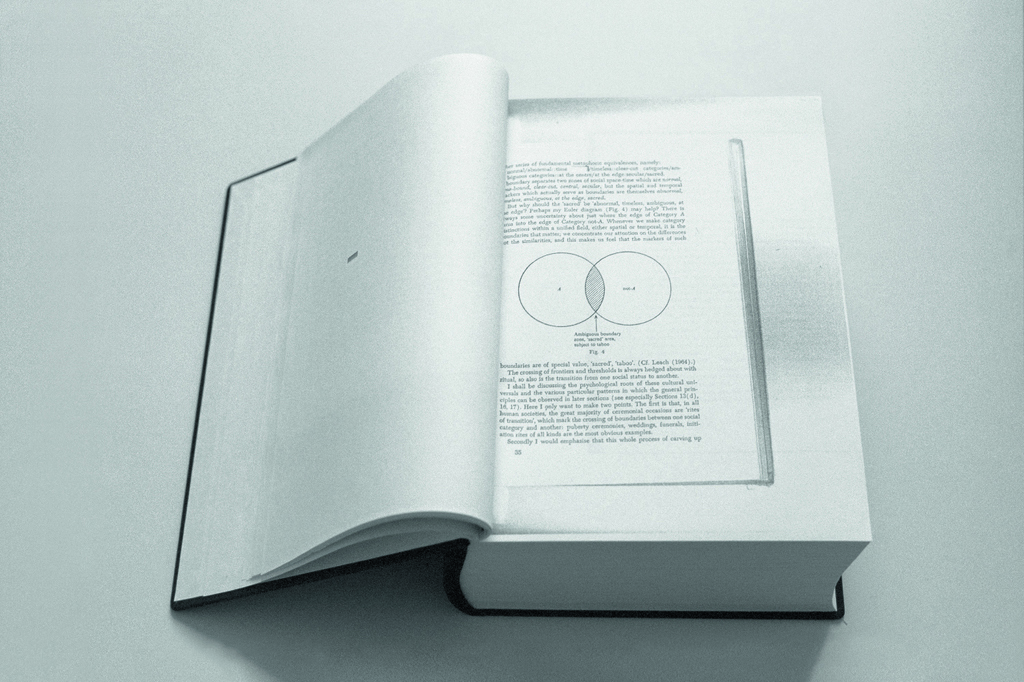
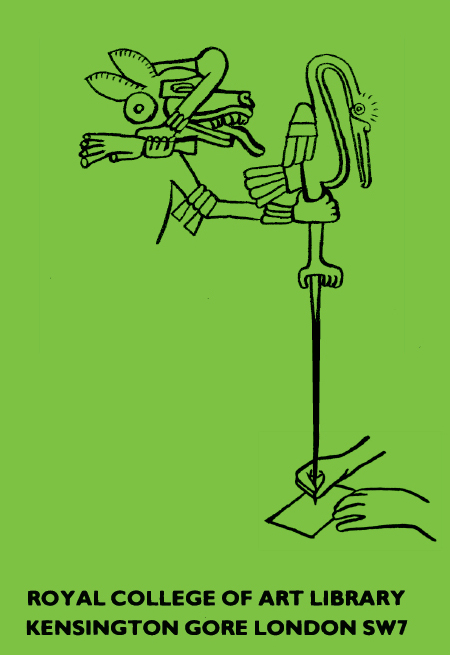
Bookplate, 2011
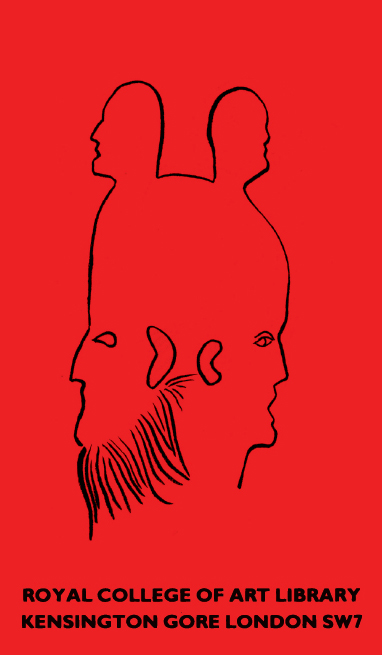
Bookplate, 2011
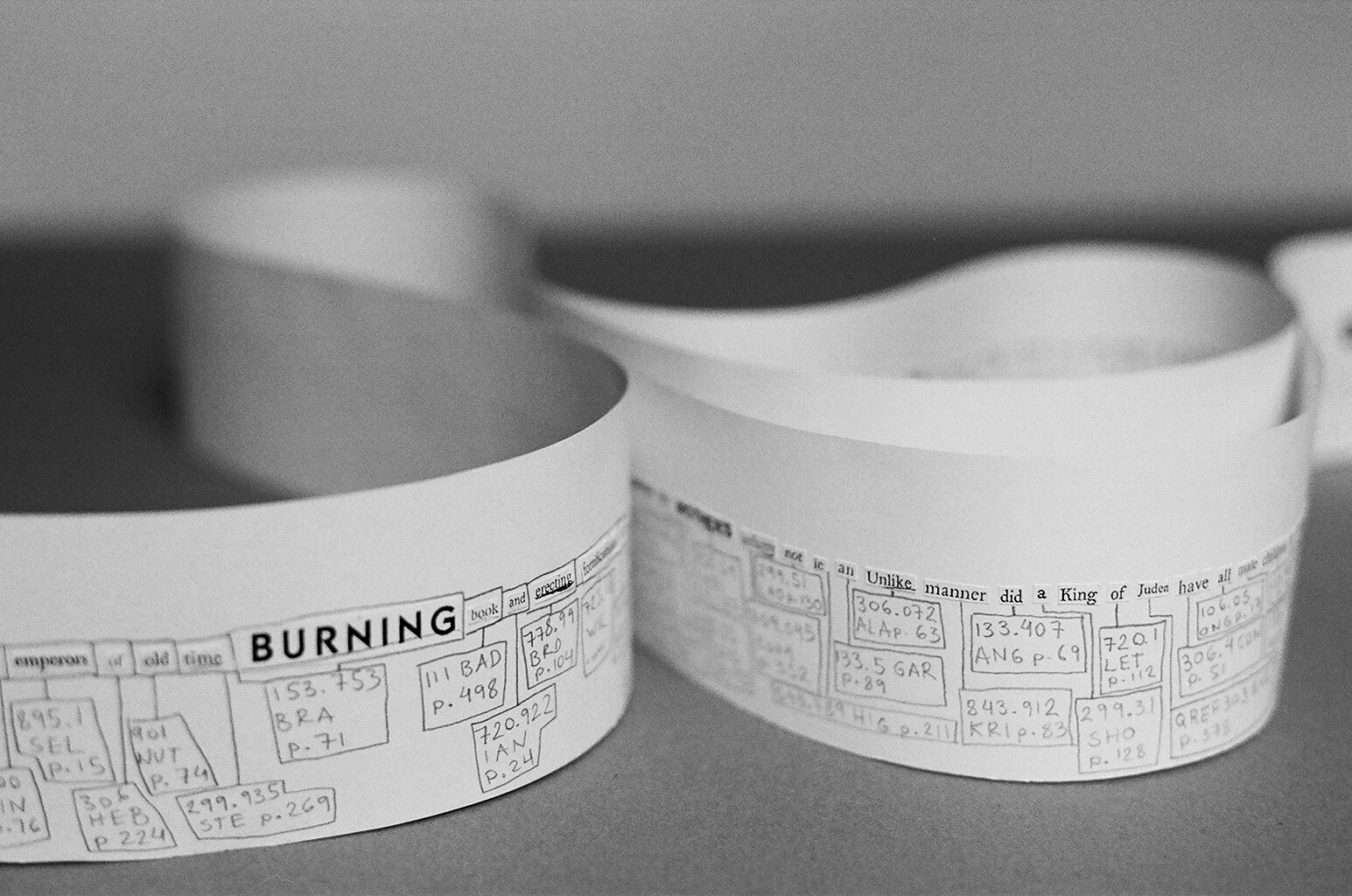
Paper strip with the 987 words stolen from the library and its corresponding references, ca. / approx. 10 × 1000 cm
Stochastic Archives
Mariana Deball, Sebastian Romo and Erick Beltran
Sala de arte público Siqueiros, México City, 2002
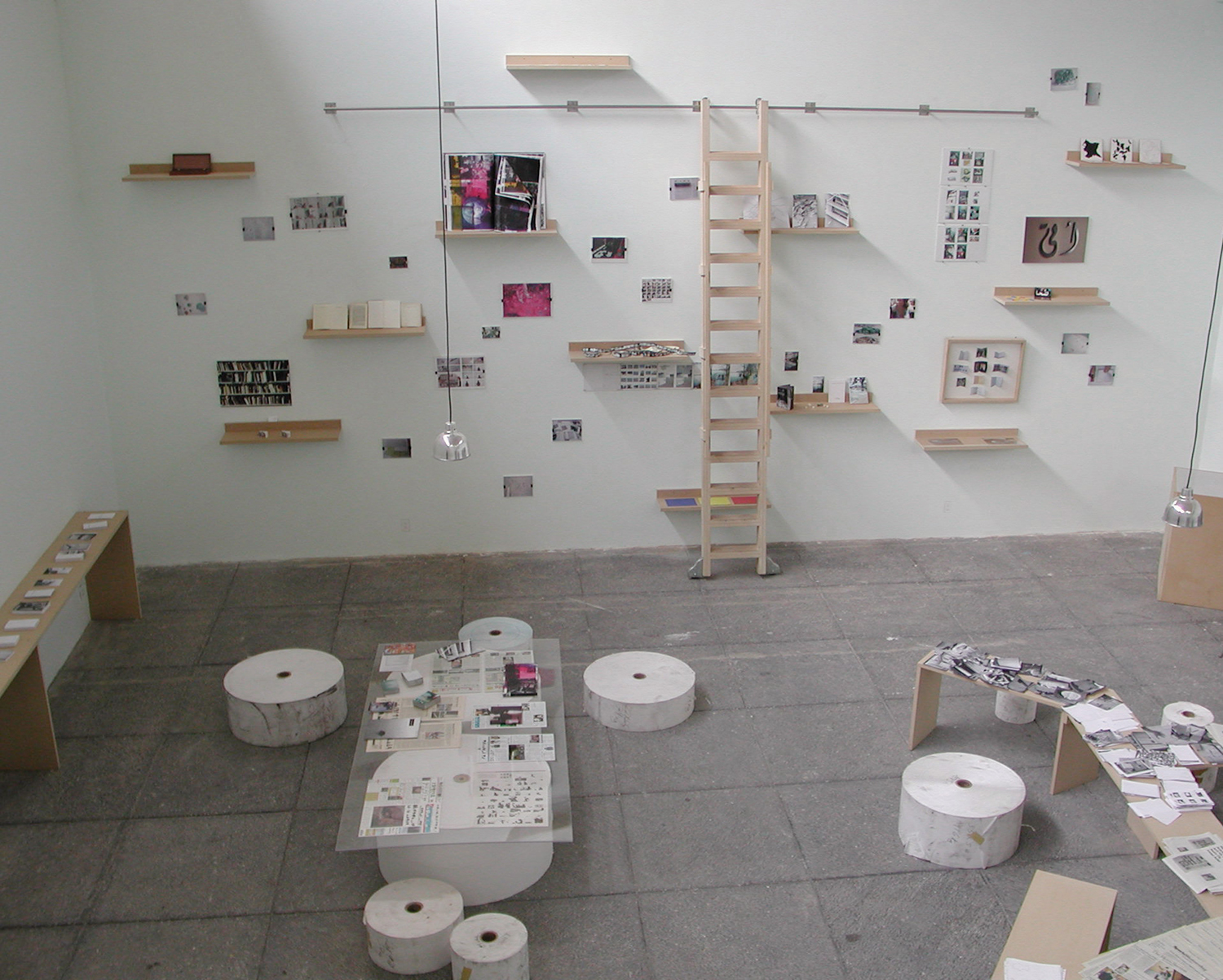
Installation view of the exhibition Stochastic Archives 2002
Sala de arte público Siqueiros. México City. 2002
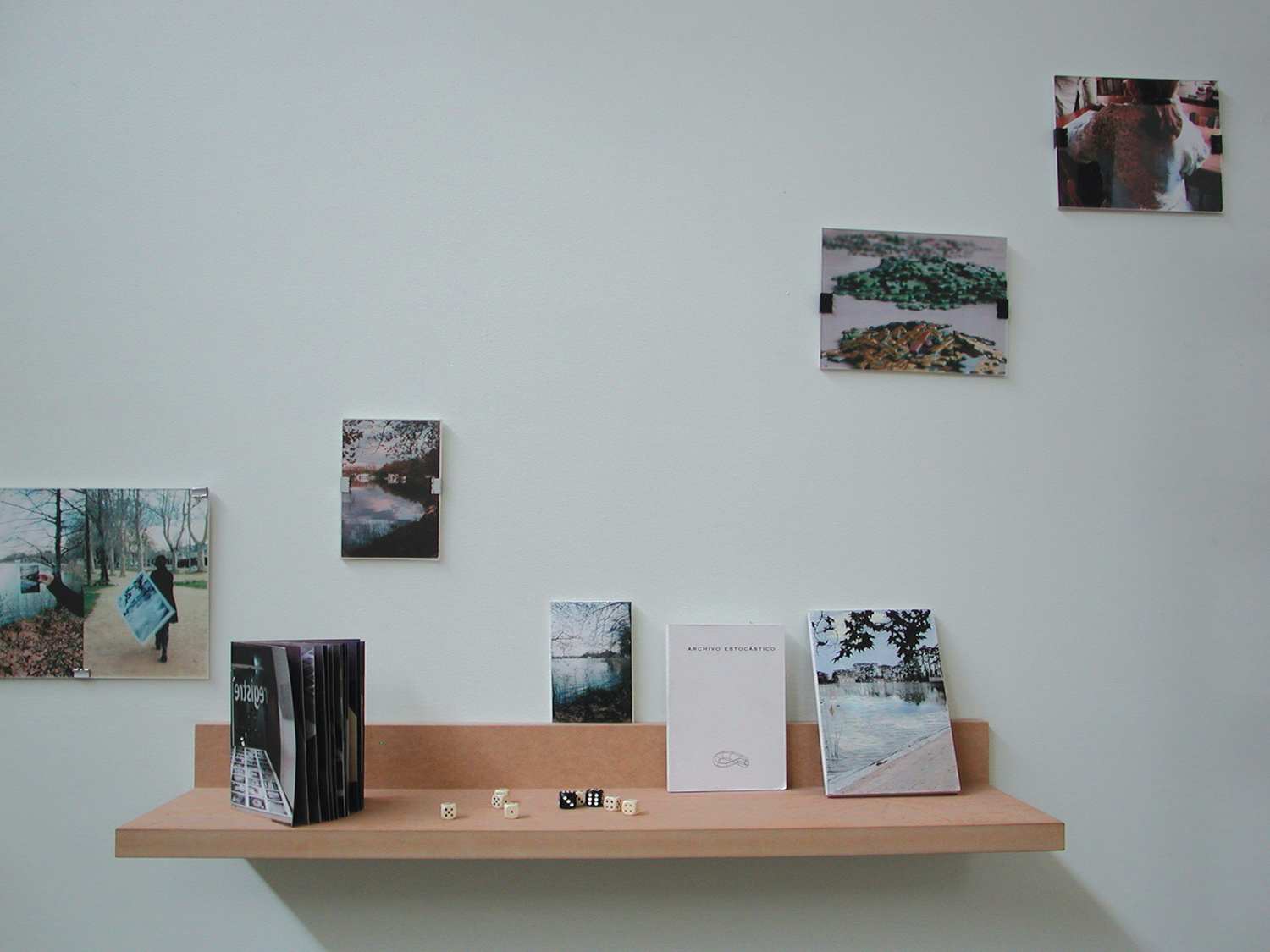
detail: Stochastic Archives 2002
Sala de arte público Siqueiros. México City. 2002
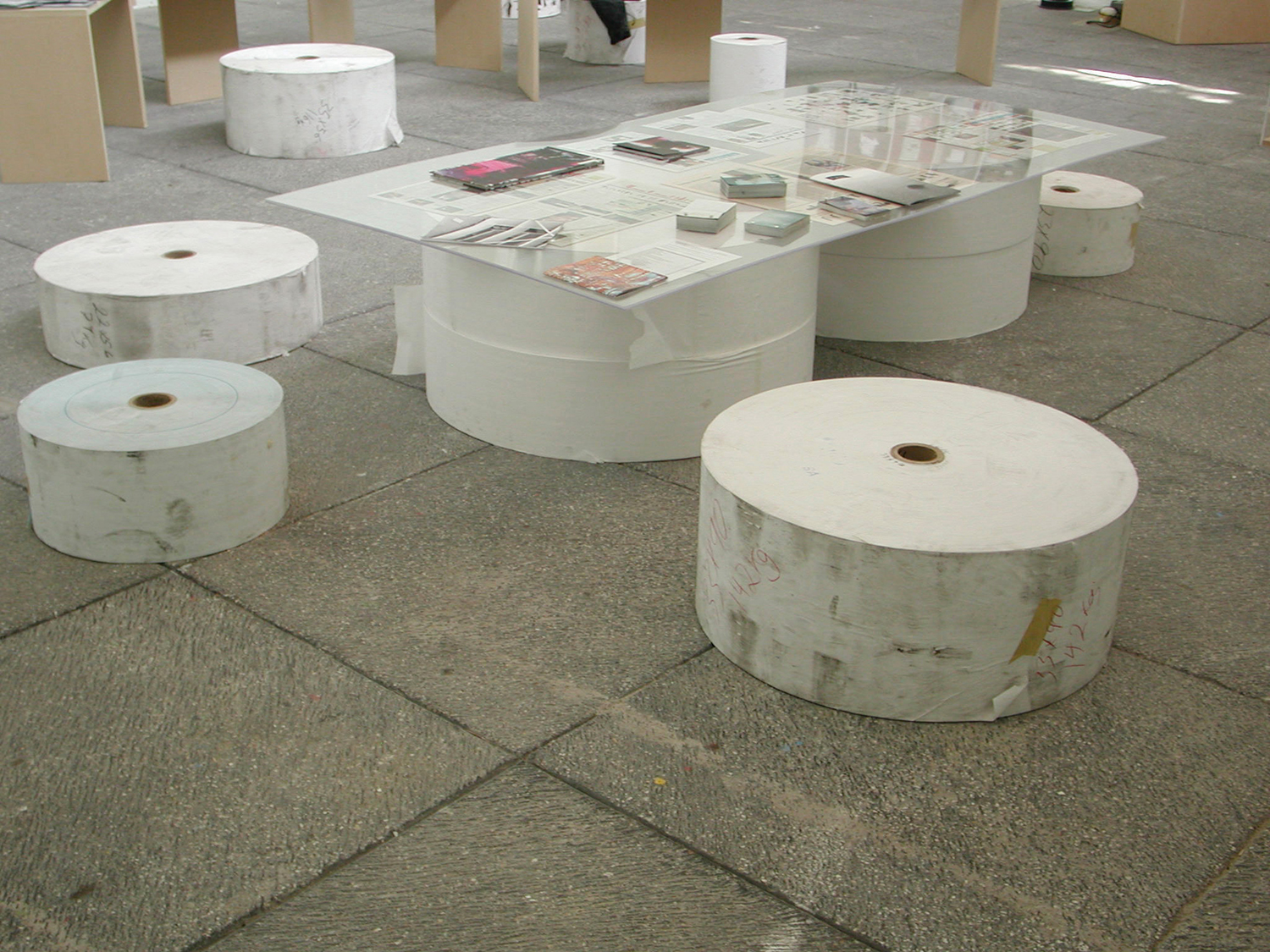
detail: Stochastic Archives 2002
Sala de arte público Siqueiros. México City. 2002
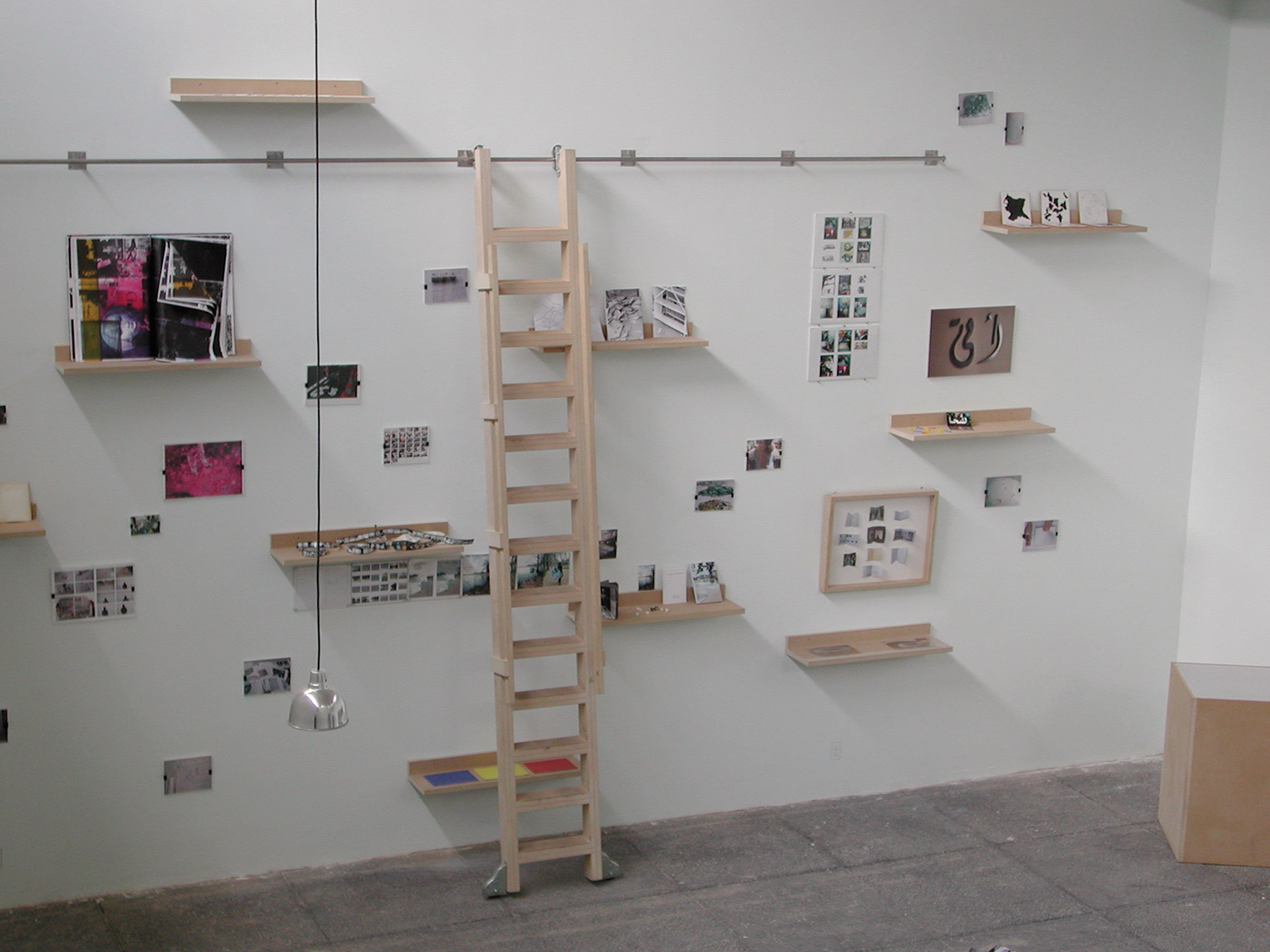
Installation view of the exhibition Stochastic Archives 2002
Sala de arte público Siqueiros. México City. 2002
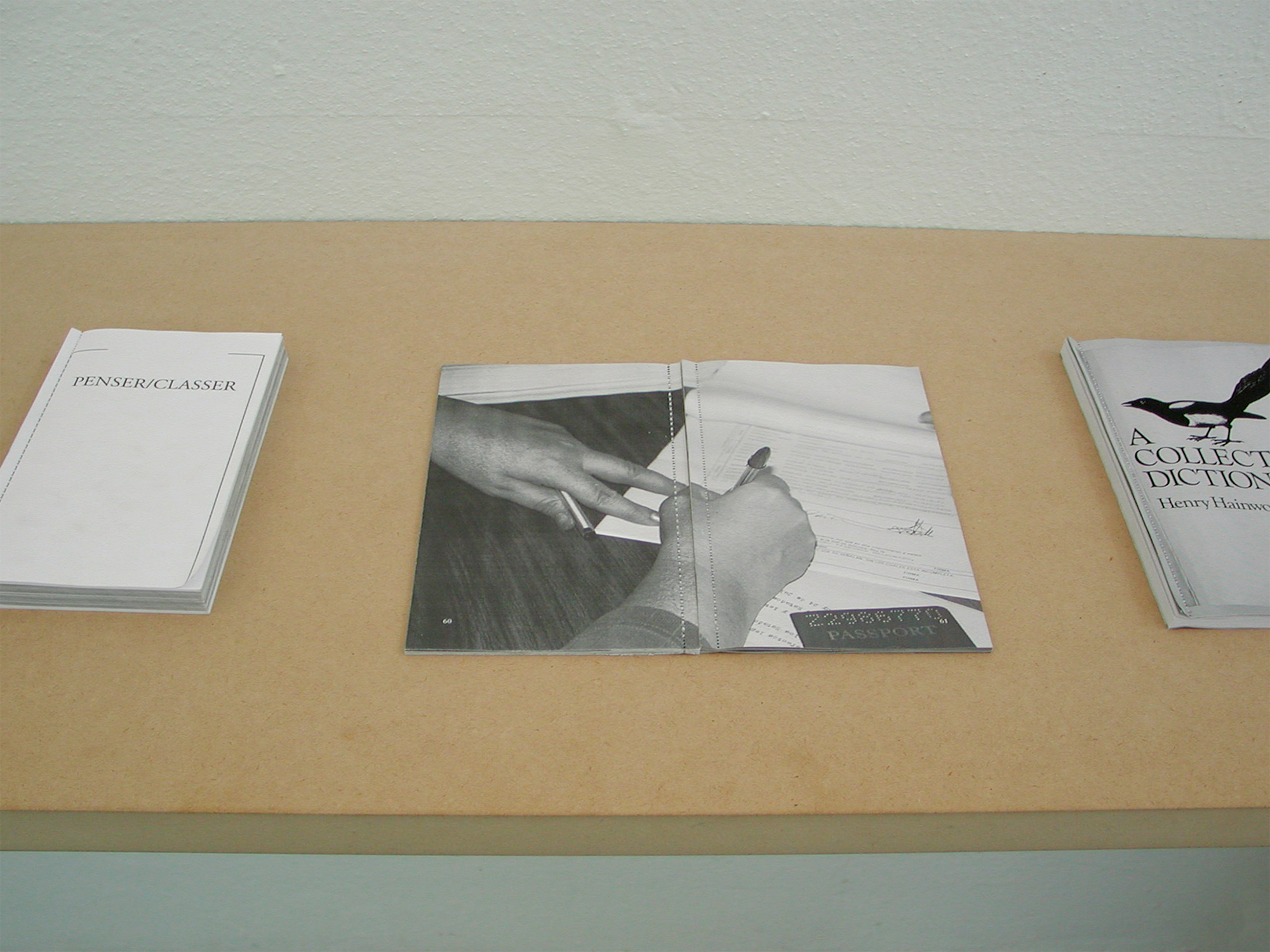
detail: Stochastic Archives 2002
Sala de arte público Siqueiros. México City. 2002
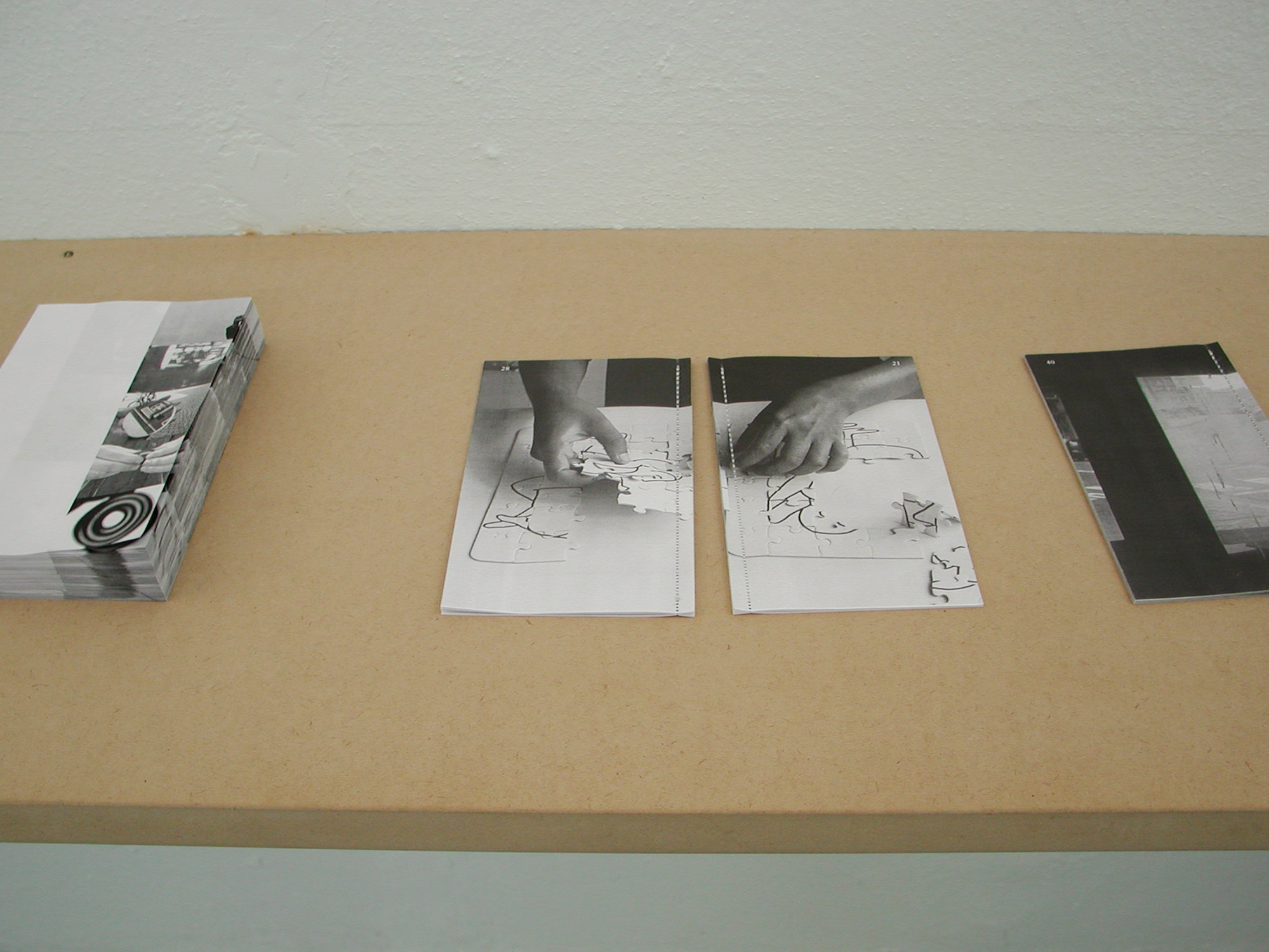
detail: Stochastic Archives 2002
Sala de arte público Siqueiros. México City. 2002
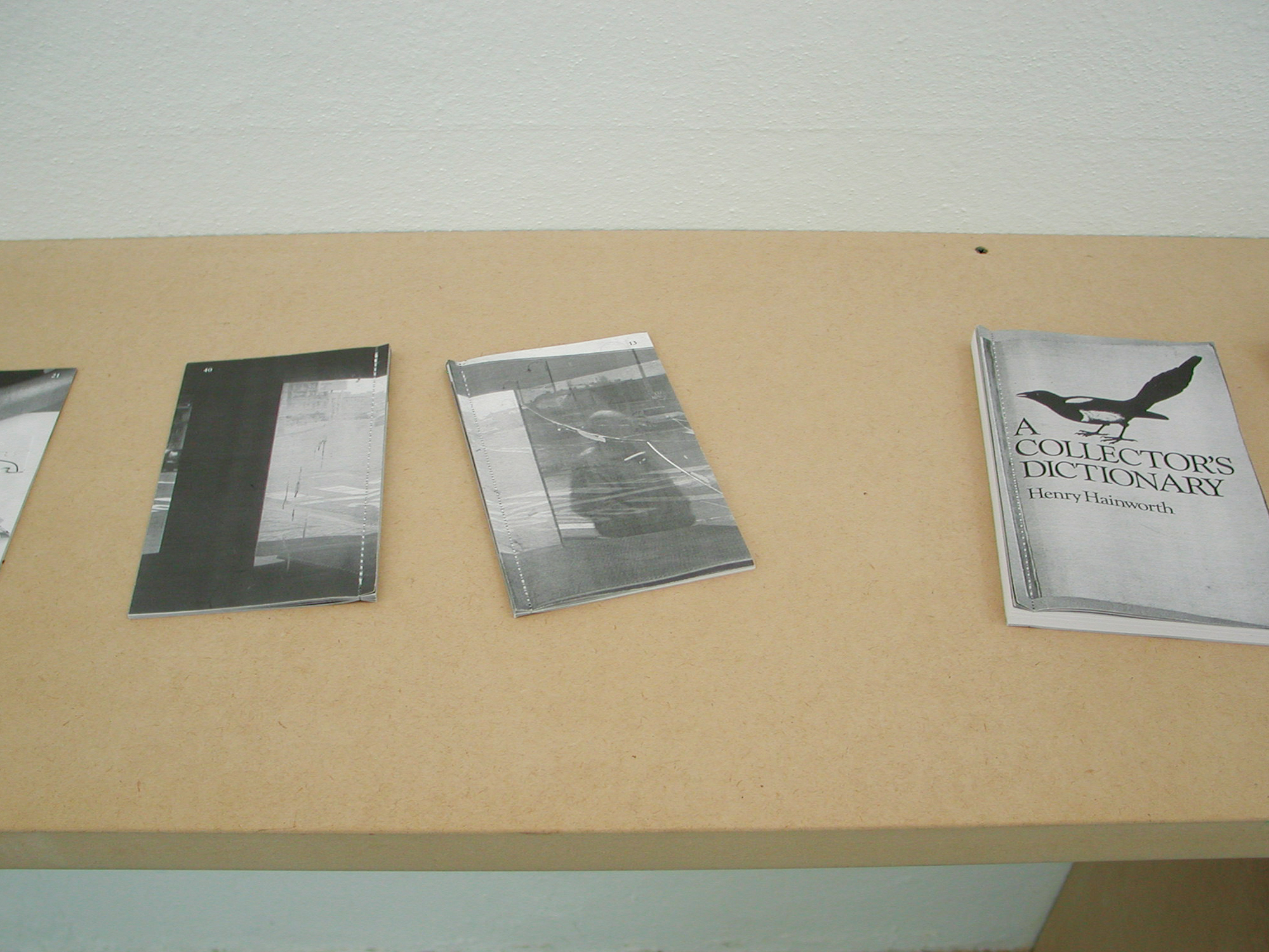
detail: Stochastic Archives 2002
Sala de arte público Siqueiros. México City. 2002
Stochastic Archives
Stochastic (from Greek stocazein, to shoot an arrow to a target, scatter events in a partial
random way, so that some could reach the expected result): it is said that a sequence of events is stochastic, if it is able to combine a random component with a selective process, so just some results of the fortuitous component could last.
The archive gathers objects with a common element. Its richness depends not in quantity of components but in the ramifications they could implicate. Beyond curiosity and the pleasure of recompilation, it is the argument that justifies arrangements. The elements are studied not for themselves but of their capability of belonging to a series: the importance leans to the space in the collection rather than to the specific characteristics.
The archive works in a space in which different types of material coexist, arranged from certain restrictions; it also requires temporality since the premises that organize information as well as material itself changes and grows continuously, it is an organic process, open and permeable. Our work finds common ground in the relation with different strategies of organizing this information, from printed matter as newspapers, books, maps to personal archives composed by photographs, drawings, diagrams. Art pieces, in this context, are meeting points that have several connections to the space of the archive.
This project tries to play with three notions: the space of the archive, the archive as process and the work of art as meeting point.
We try to generate a laboratory, which contain diverse devices for arranging information, construct a lecture space where the spectator could interact with the elements and find their own lecture system. A territory where some hints, traces, and signs are placed to induce the construction of ideas, phrases, and systems. Emphasis is given to process, to mechanisms for classifying and to contexts. Beyond producing artwork, the artist produces navigation references from which spectator decide its own lecture, paths from the artist to the work and from the work to the reader.
The Book
Structure
First chapter: The lecture space
Second chapter: Process and time based arrangements.
The Stochastic Archives work on the different forms of organization and lecture of information from collecting, recording and making relations between different sources of material like texts, images, newspapers, photographs, drawings, documents, etc. It is important to say that although there are text, theory and document references, they are based on visual classification strategies. It could also seems that the priority is to accumulate and collect images from different sources but in fact the main concern is the constant creation of projects in which the process play the main role, it is closer to a flow of relations than to a collection of objects. In this sense it could look like empty archives or full of projects and chains of ideas, but maybe it is a collection of ways of collecting. It is strange to suggest archives without an enormous quantity of material to be classified.
Our interest does not lie in making public an archive but to discover the maps, the routes that lead us to long term projects, usually without conclusion, or that propose a horizon of possible solutions so that the final result, the art piece, seems only to be a moment, a concentration of intentions and possibilities frozen in a specific object. Maybe that is the reason of our interest in books, because they could offer you an order in these sequences or chains and at the same time the lecture allows multiple itineraries.
After going through our sketchbooks, in the selection process of material for the exhibition, we realize that the most interesting thing was not the amount of ideas in time but the constants series that are repeated in different contexts and formats.
To summarize, it is an archive of the possible, created from a limited number of elements that acquire sense from their relations with the rest. Dictionaries, novels, cookbooks, instruction books, etc., are conceived from a limited and simple code, that generates a great number of different meanings. The real concern is the construction of lecture systems, their reception and ways of access, their transformations and deformations.
Another important element is the digestion of established arrangements, which we retake and distort, allowing us to twist conventions. This review and appropriation of images and information of others is not a collage or a senseless mixture of data but a parasite and anthropophagic process of camouflage and digestion.
The idea of process involves planning, production, mistake, transformation, editing, lecture, etc. Each of these actions have a specific time and space. This is the reason of the first chapter of the book in which relations and concepts with space are studied in detail such as: exhibition space, furniture, designed objects, formats, etc. and distances, scales, classifications. The second chapter deals with sequential actions and process: links, cycles, loops.
The book is considered a collective project, although the work of M, S, R and E will be included as appendix or references to the general concept. There will be a proposal within the ways of lecture and use of information in a clear and precise sequence, and footnotes or references of the art pieces involved in each section with a specific identifying symbol so to make easier the possible links. The structure of the book seems an onion in which the objective is to create transversal routes through it.
Lecture Space
“The Latin root for the word “collect” is colligere, that means to recollect, to relate, to gather, to infer. While the word “reading” came from legere: to harvest, to pick up.
Heidegger makes the question “What does it mean to read?” the fundamental and the dominant in lecture is collection/concentration. “What is that we collect/concentrate? It is the written, it is what the stated or enounced”
The book has an affinity with collection. The catalogue is the simplest way to make a catalogue. The book gives space to information or objects in form of reproductions in a series of pages allowing identification, classification and conservation or series. The structure of a book identifies with the egalitarian spirit of a collection: the equivalence of pages is analogue to objects in order.
Trough out our work, the book besides being a common element, is a space that contains and endless number of narrative, sequential and possible lectures.
The place where all material is going to be gathered will turn itself into a reading room. A place that implies time, disposition and codes to make relations between diverse objects such as: maps and diagrams, notebooks, modular images, personal archives. Each one with a specific function in the process, each format implies a transformation, a code between the object of information and information itself. Usually this relation is named classification. Naming is always to classify and tracing a map is the same as giving names. All description, explication or representation is, in a way, a creation of a map over a surface, matrix or coordinates of all phenomena to describe.
The space of lecture will work as a laboratory of ways of reading.
It is planned different formats to organize information:
a) maps and diagrams
b) notebooks
c) modular images
d) personal archives
e) books of others
f) guest interventions
g) outdoors work
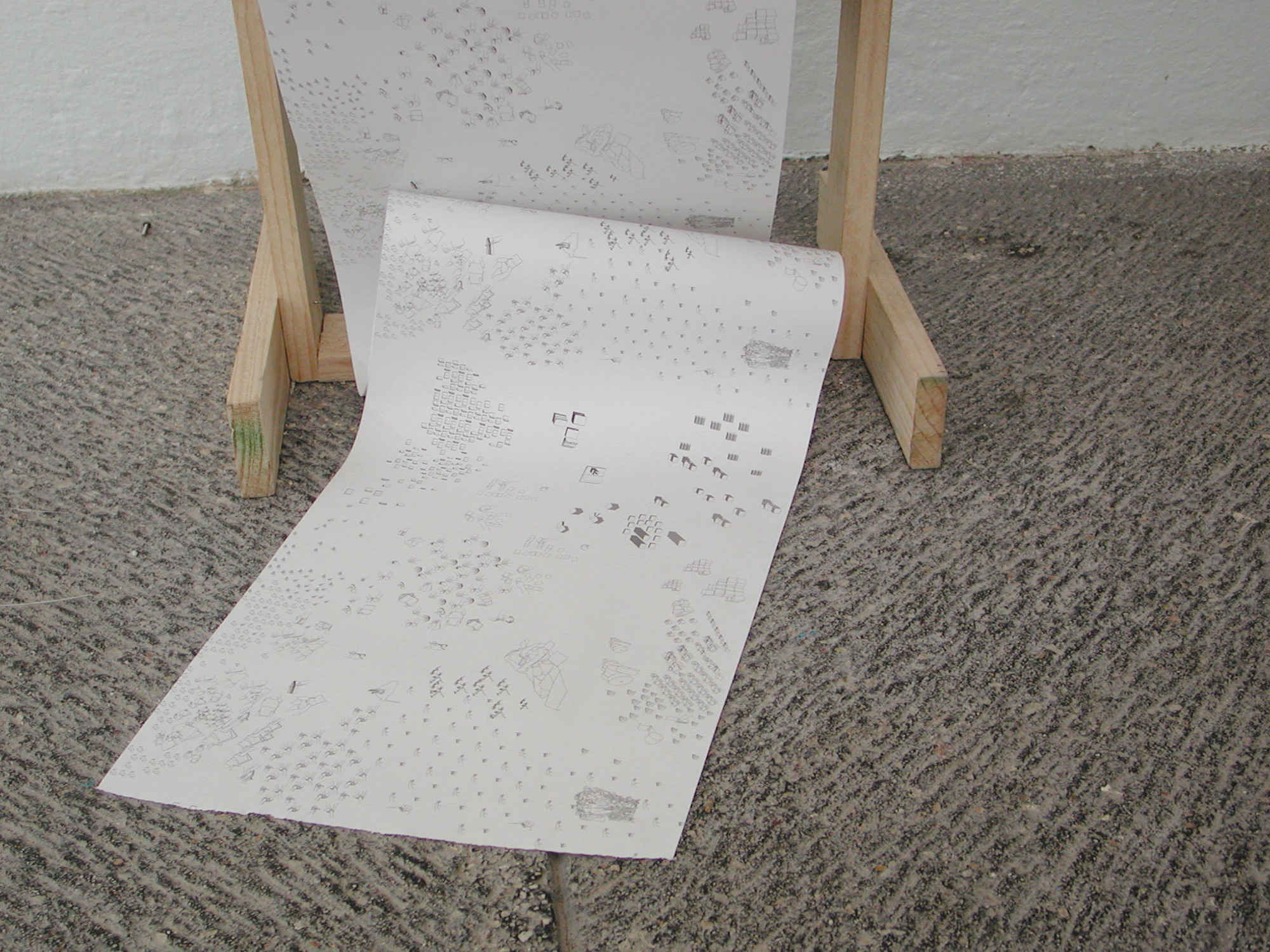
detail: Stochastic Archives 2002
Sala de arte público Siqueiros. México City. 2002
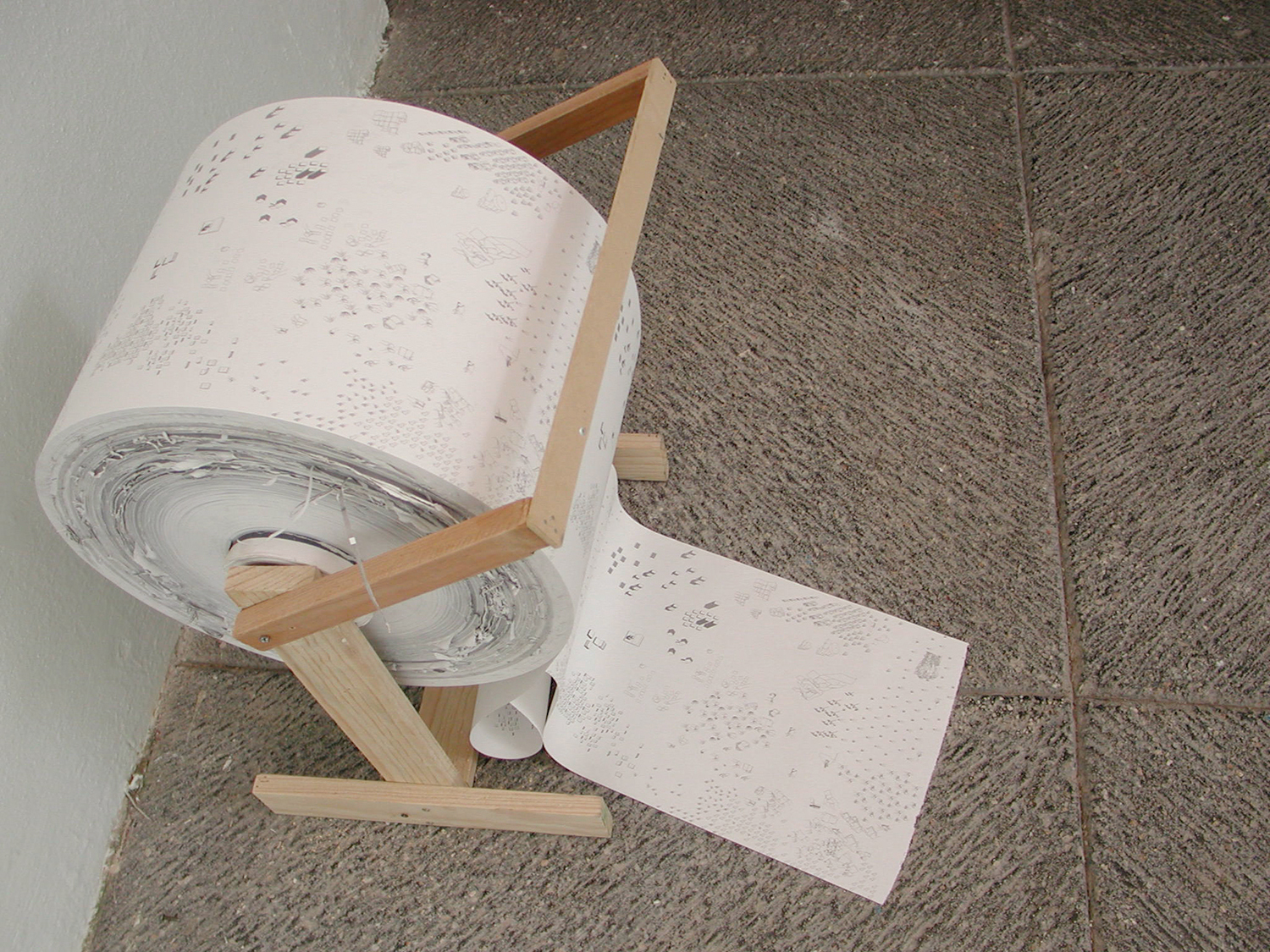
detail: Stochastic Archives 2002
Sala de arte público Siqueiros. México City. 2002
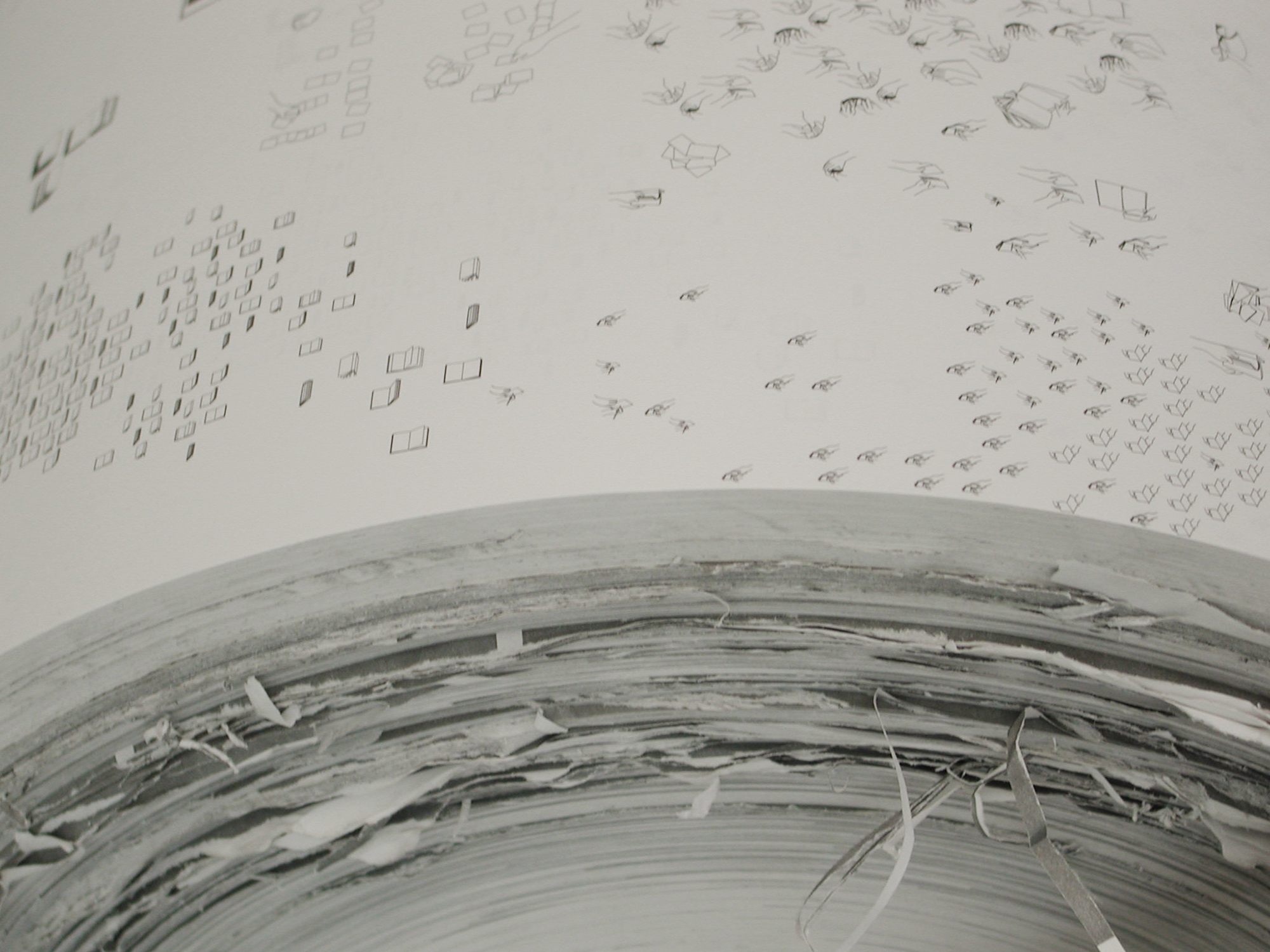
detail: Stochastic Archives 2002
Sala de arte público Siqueiros. México City. 2002